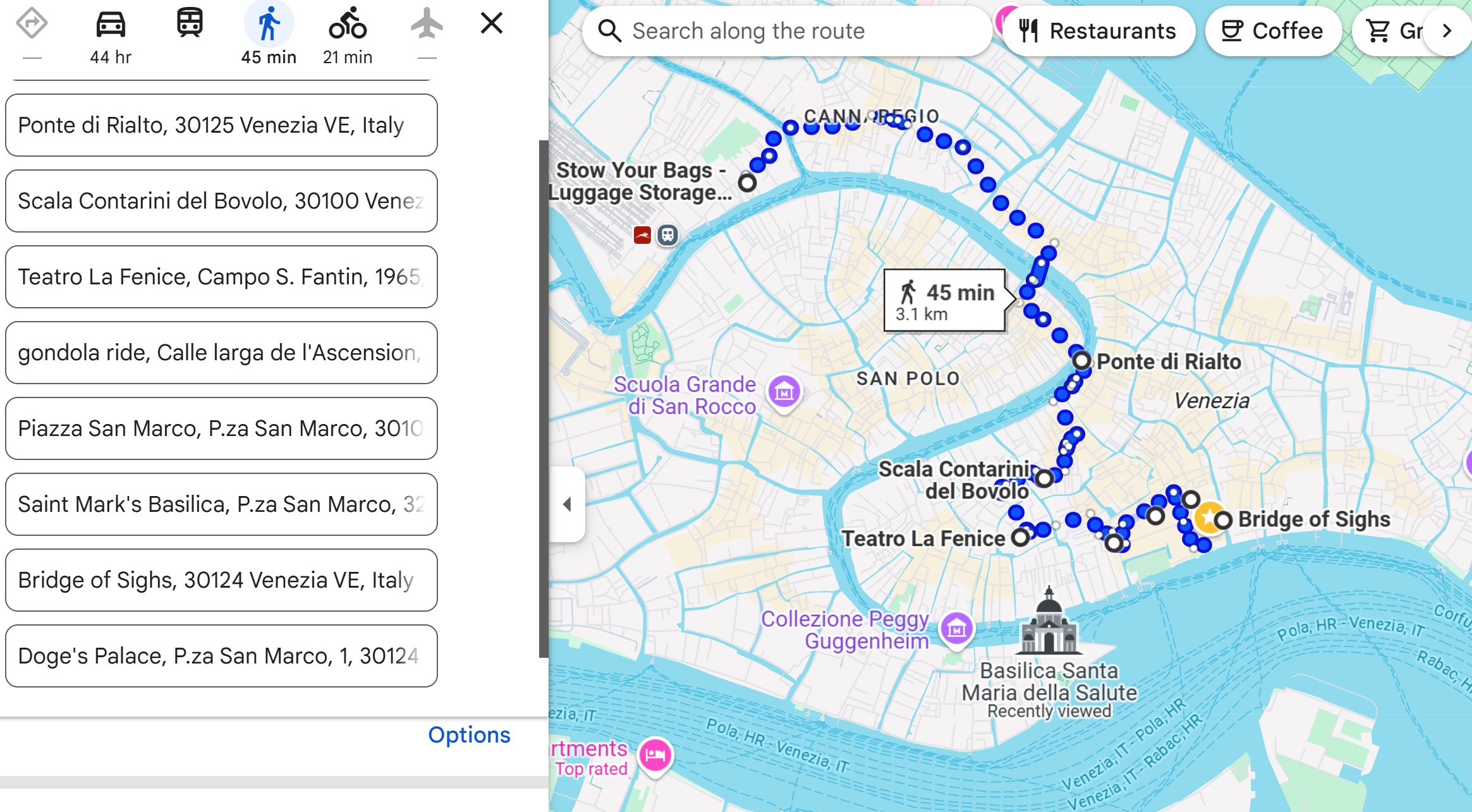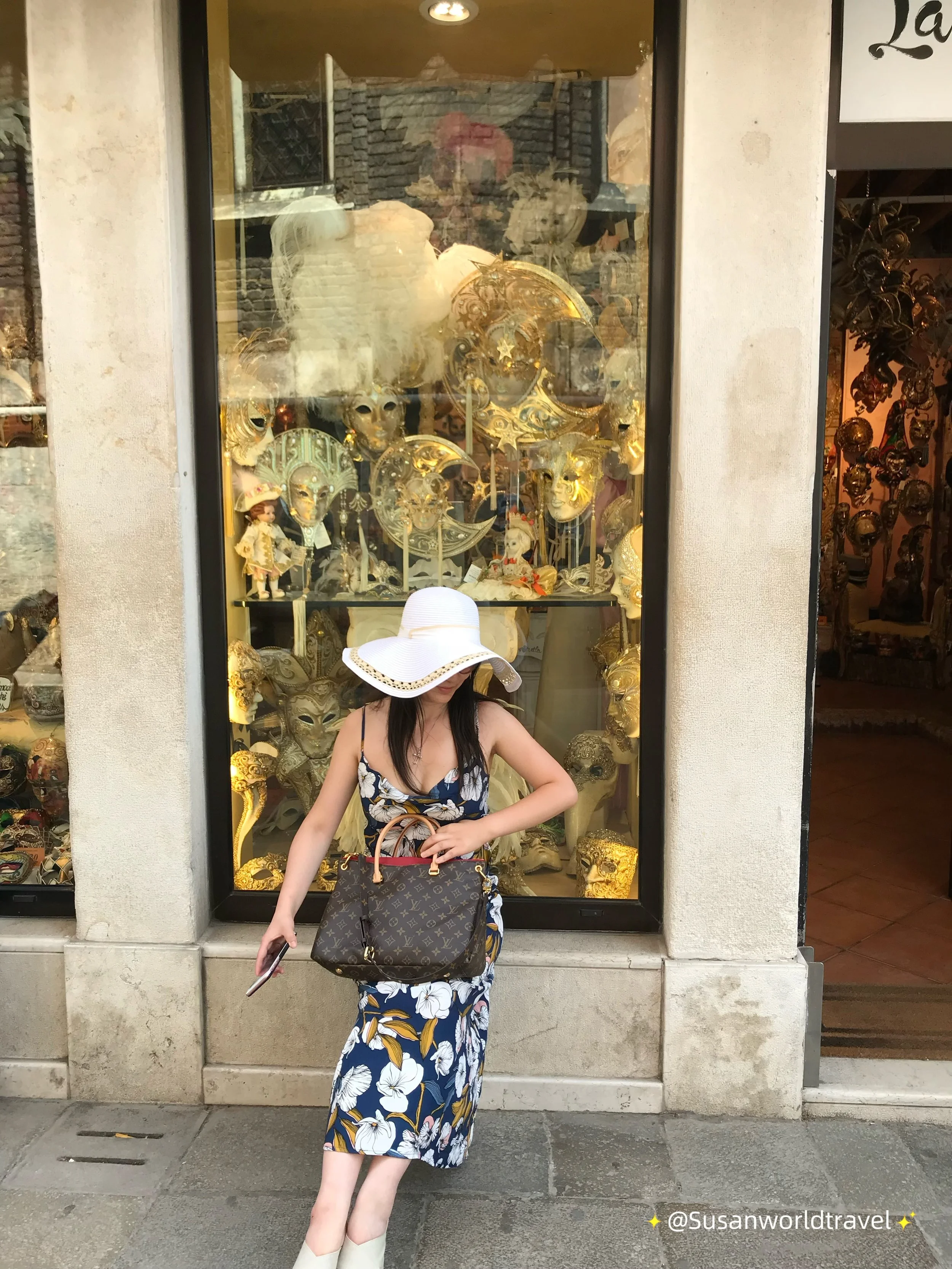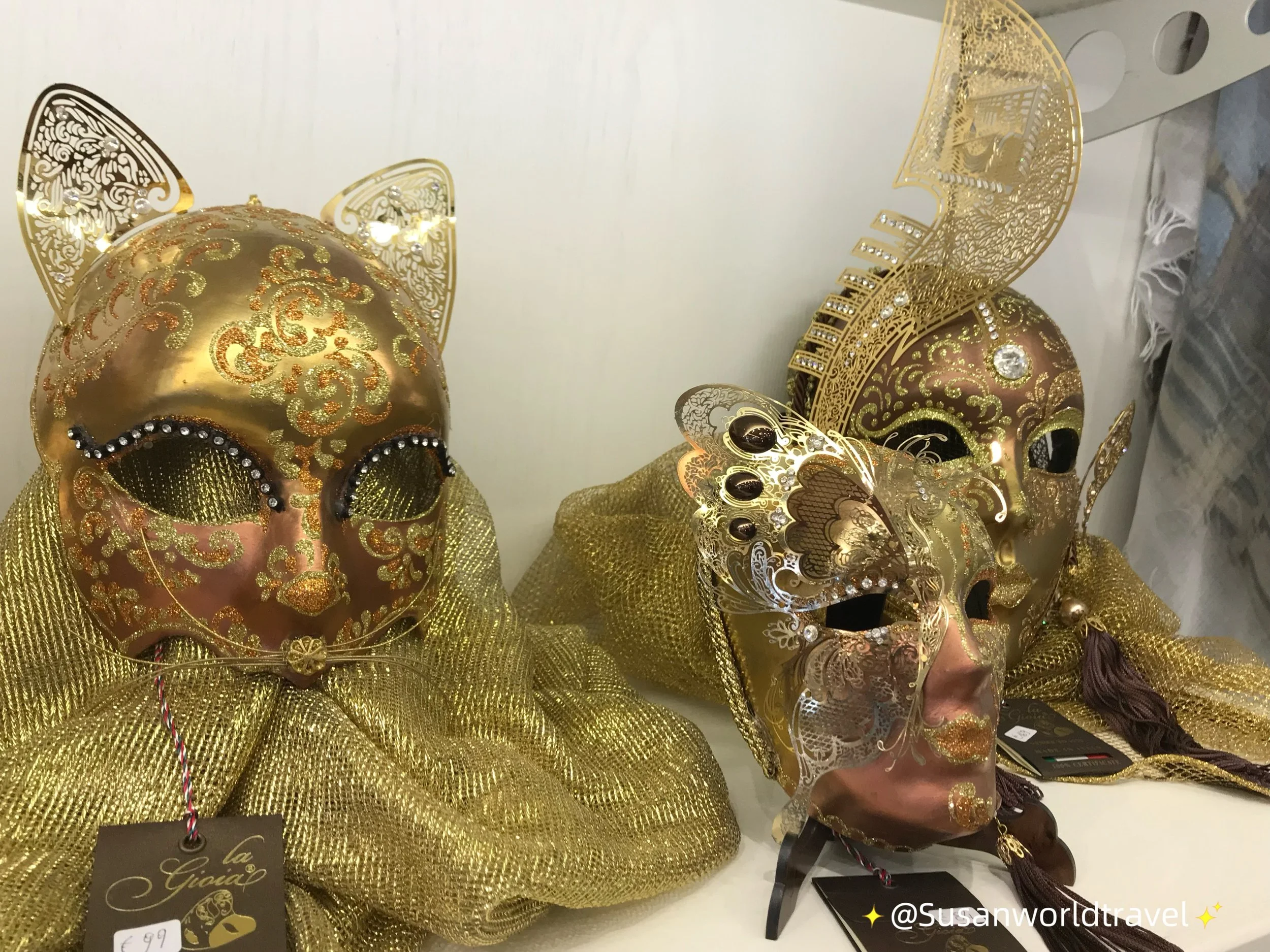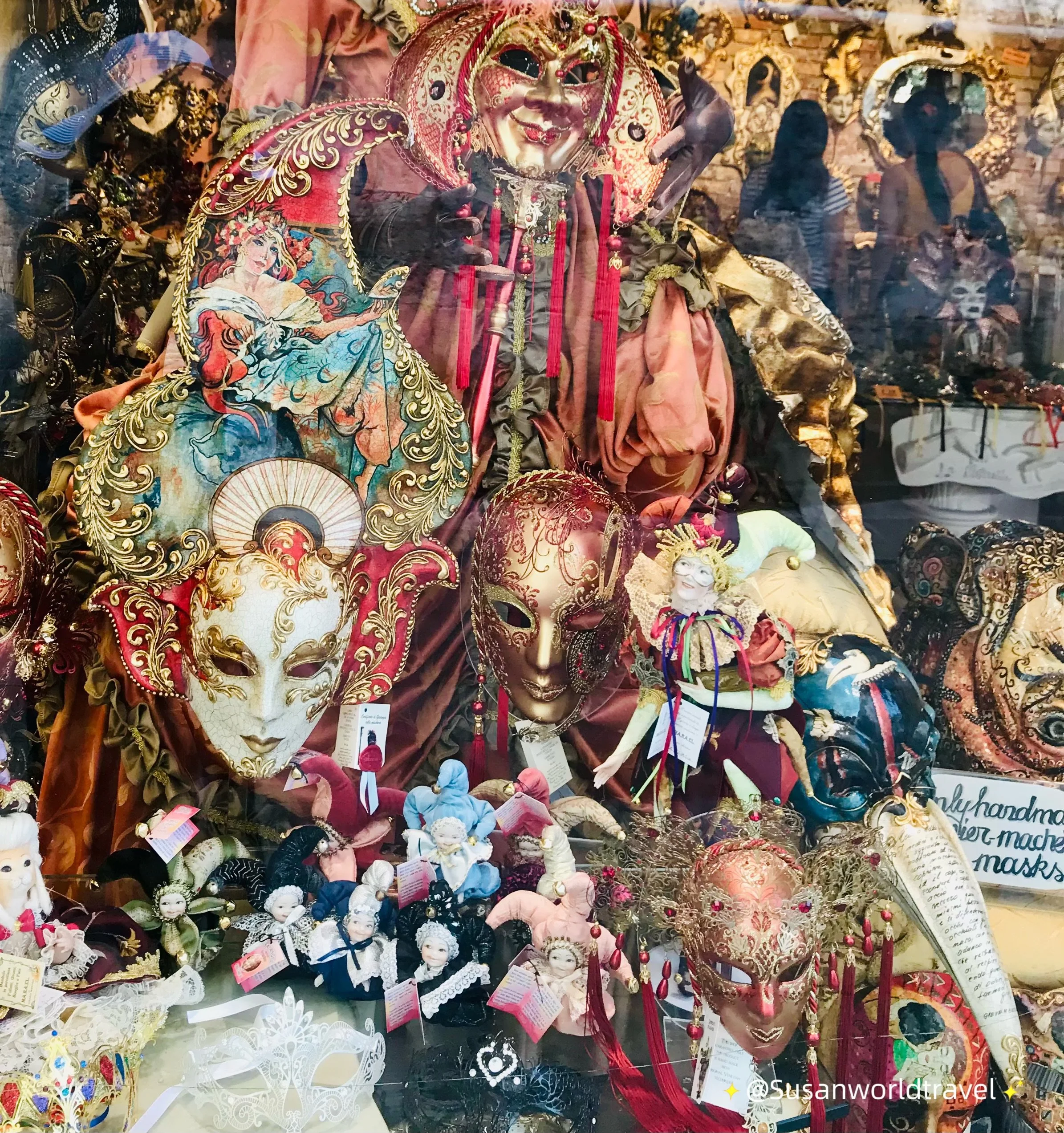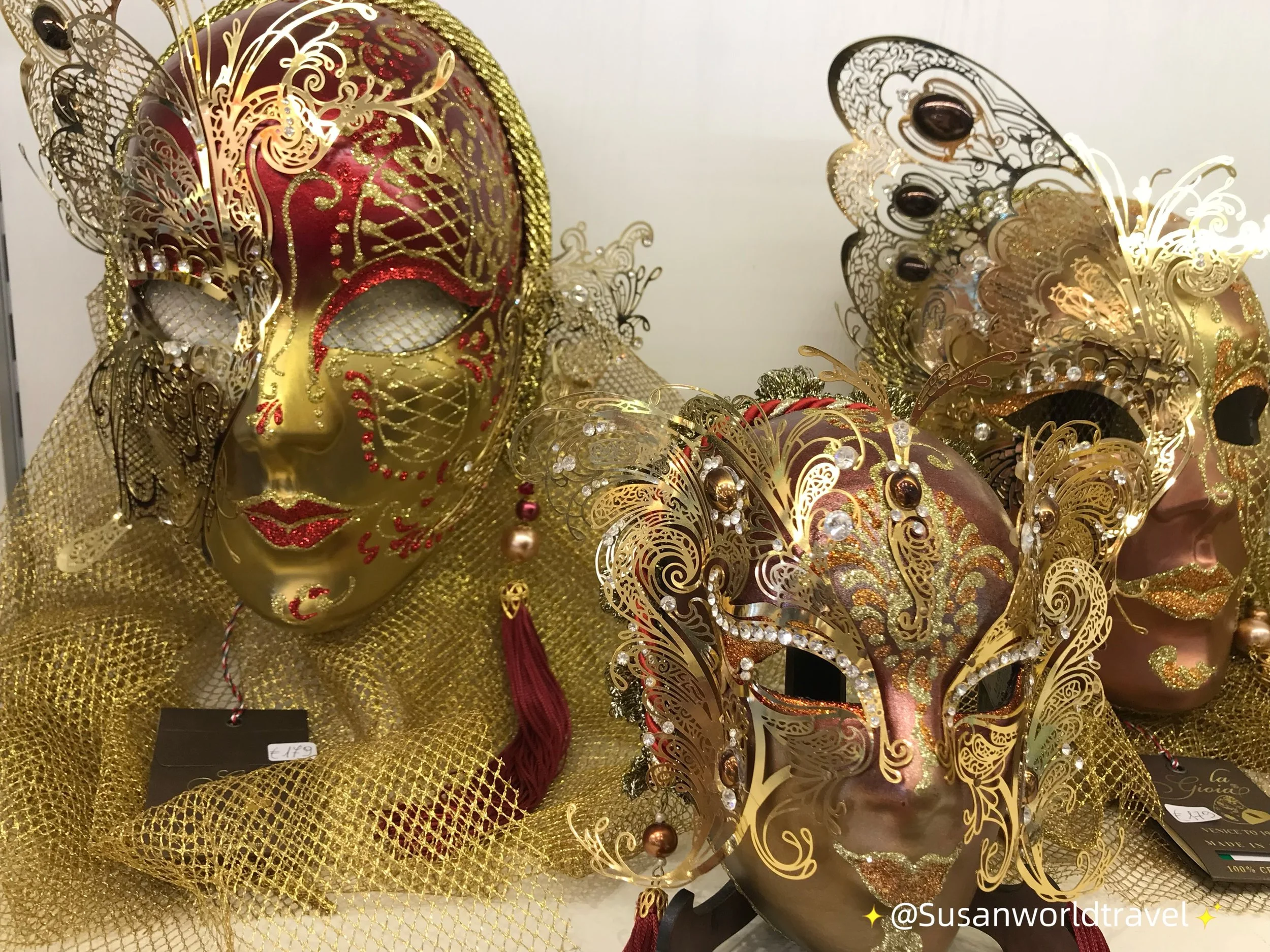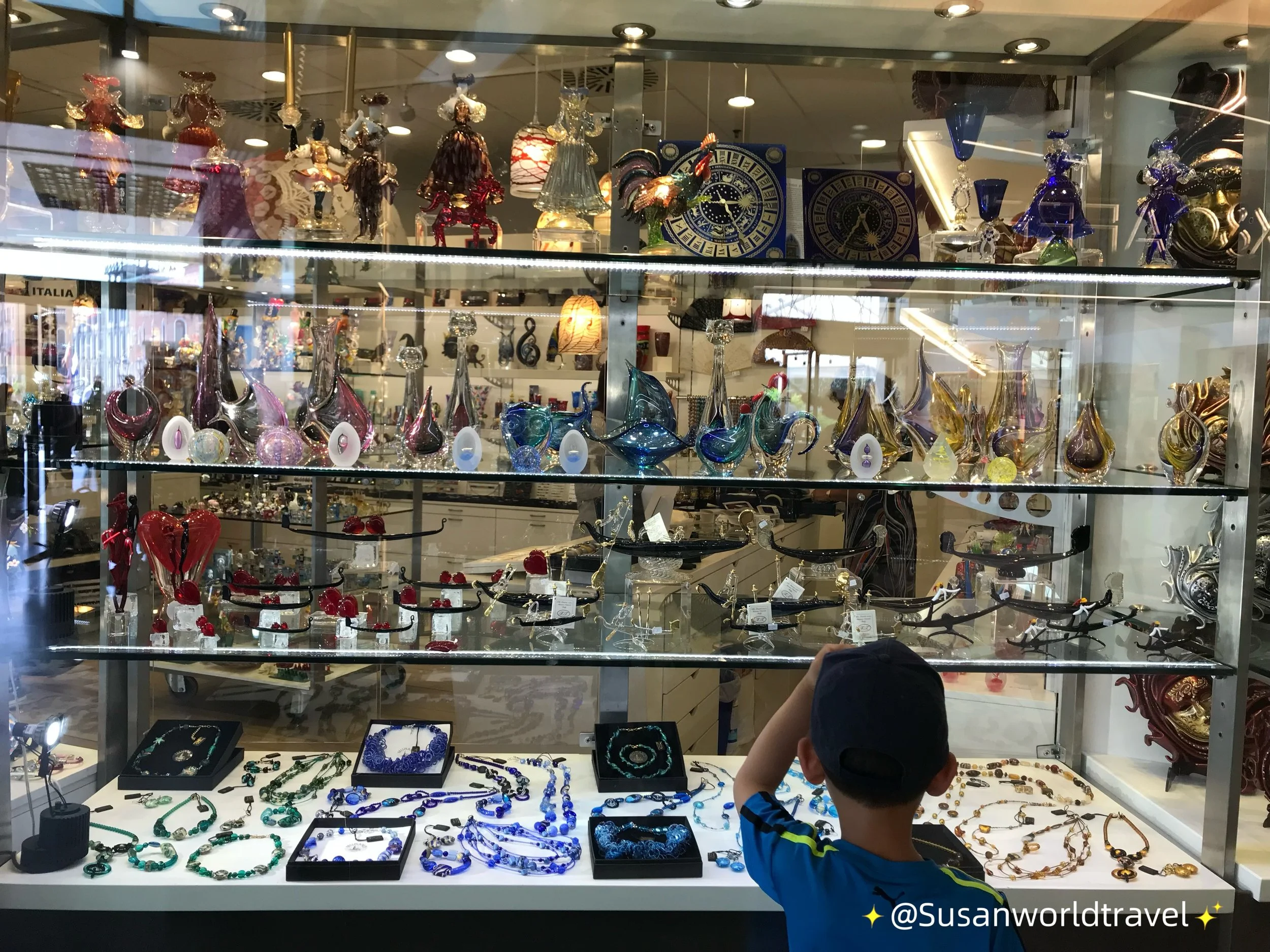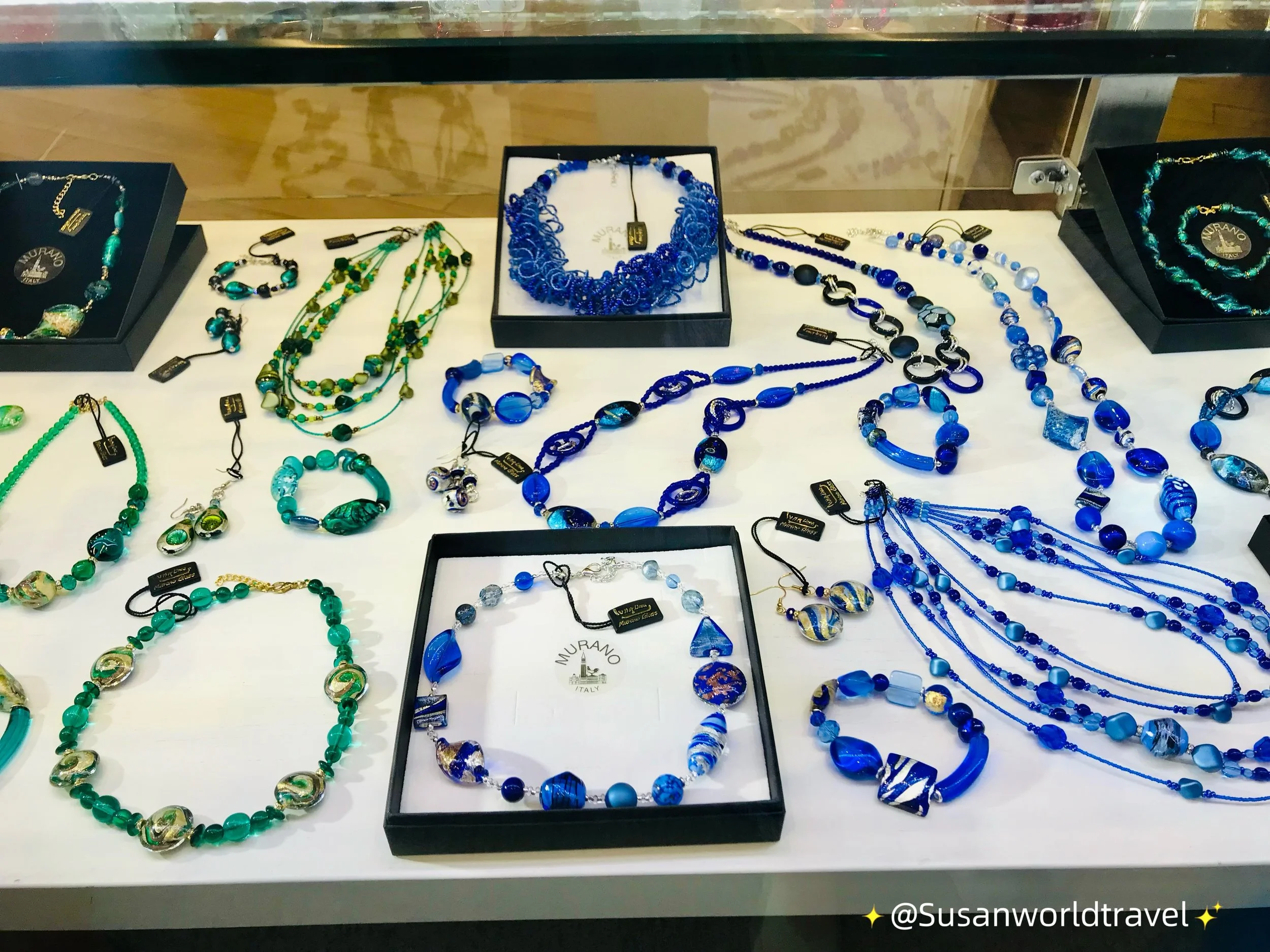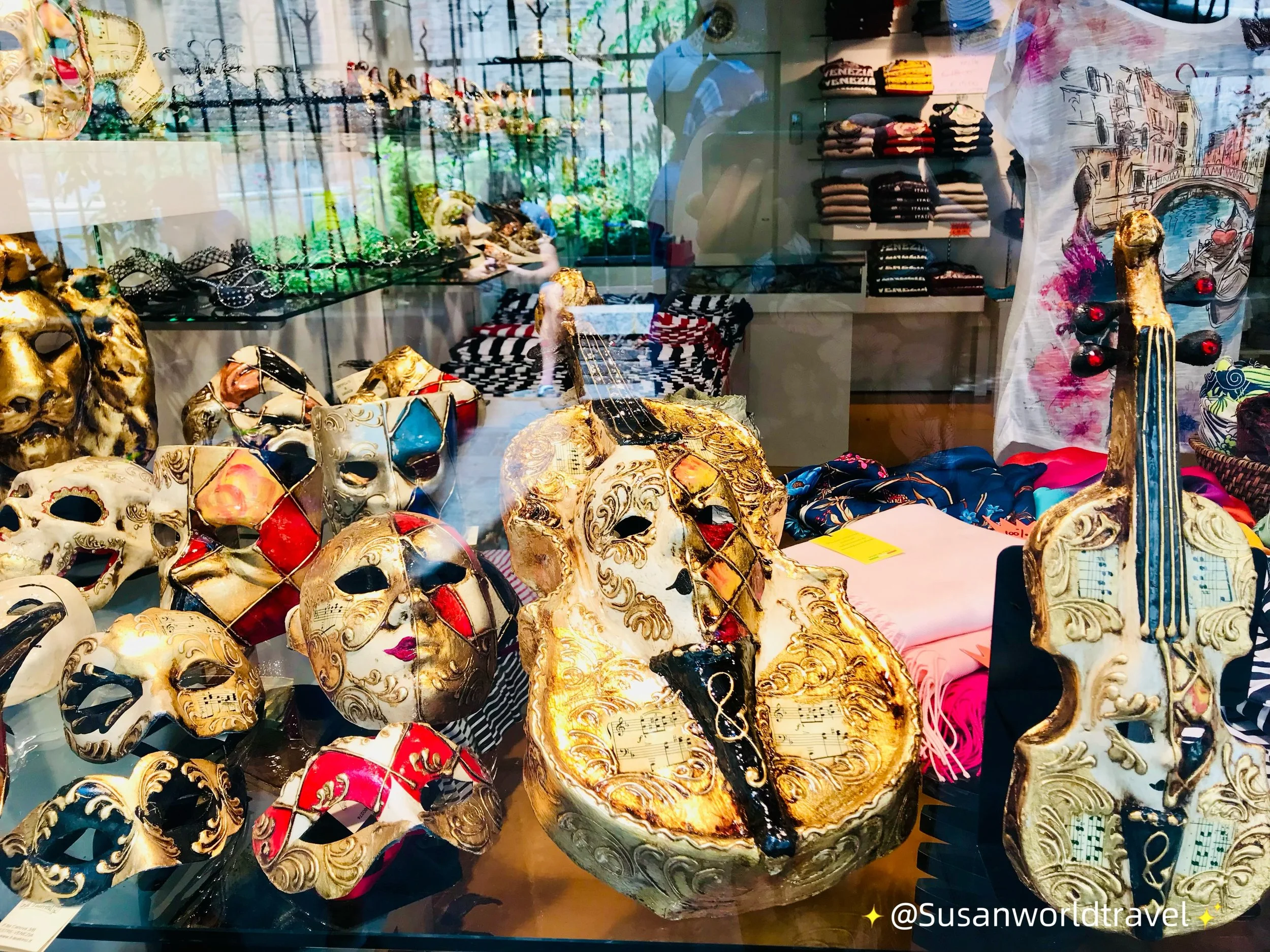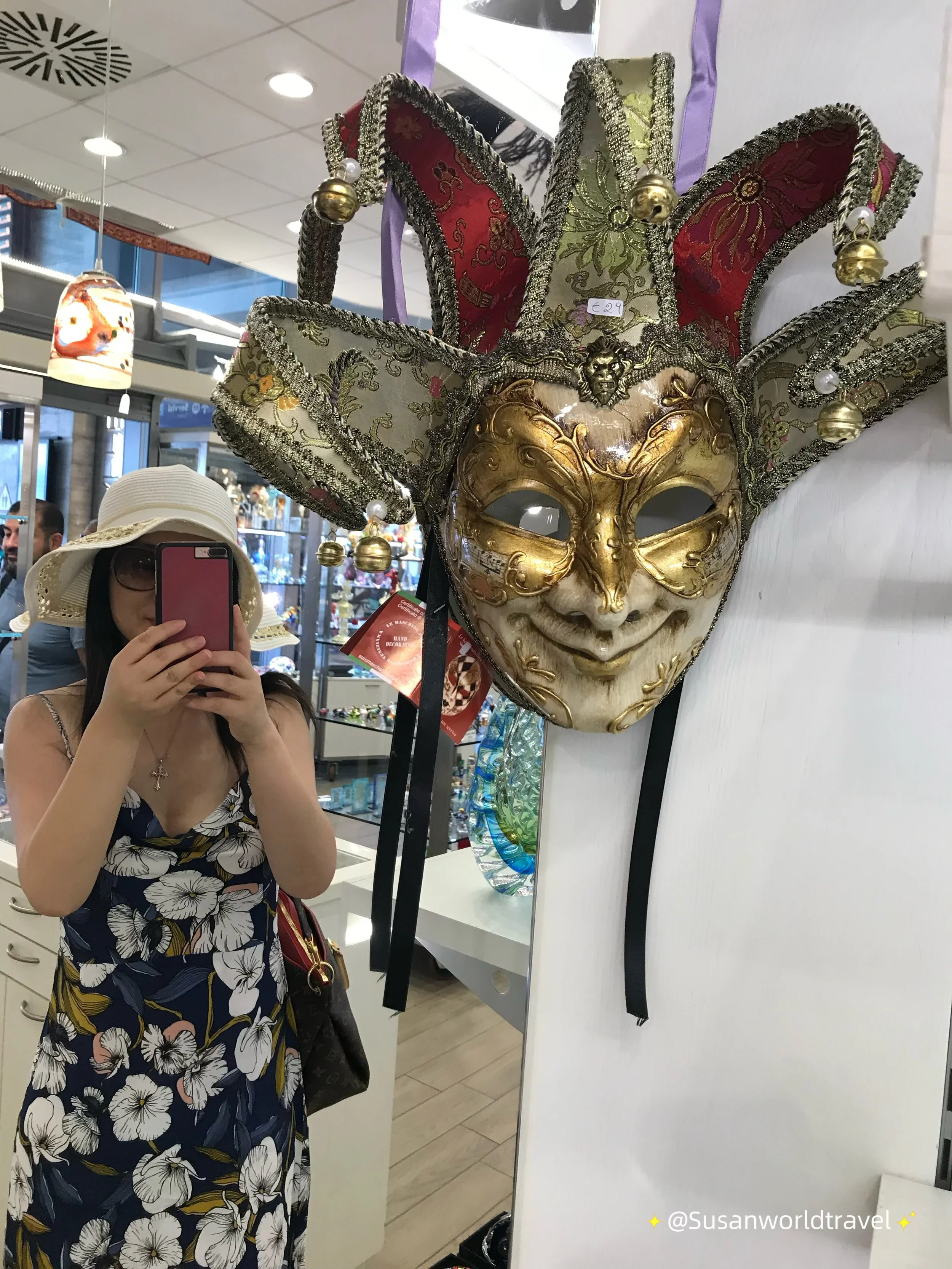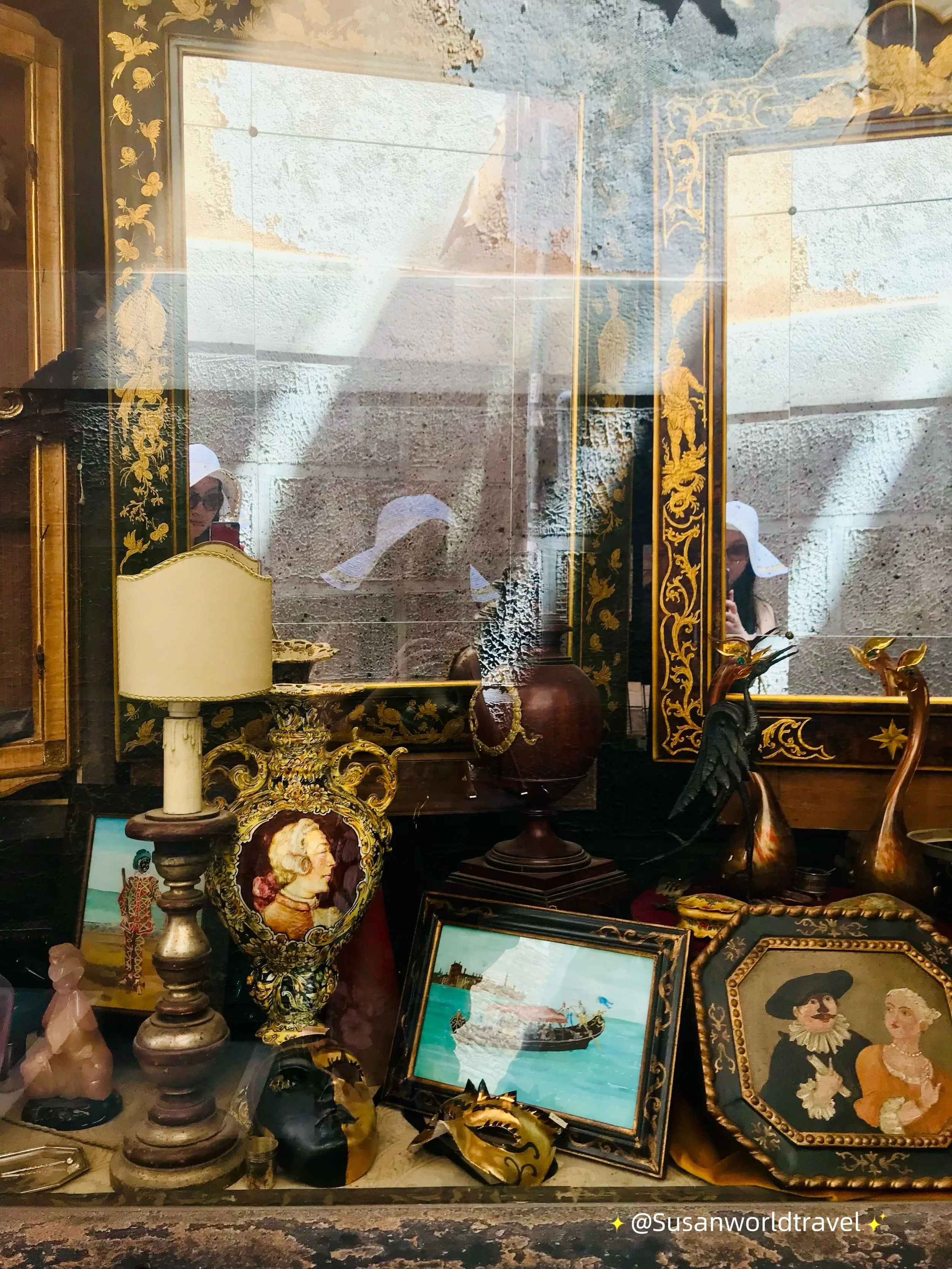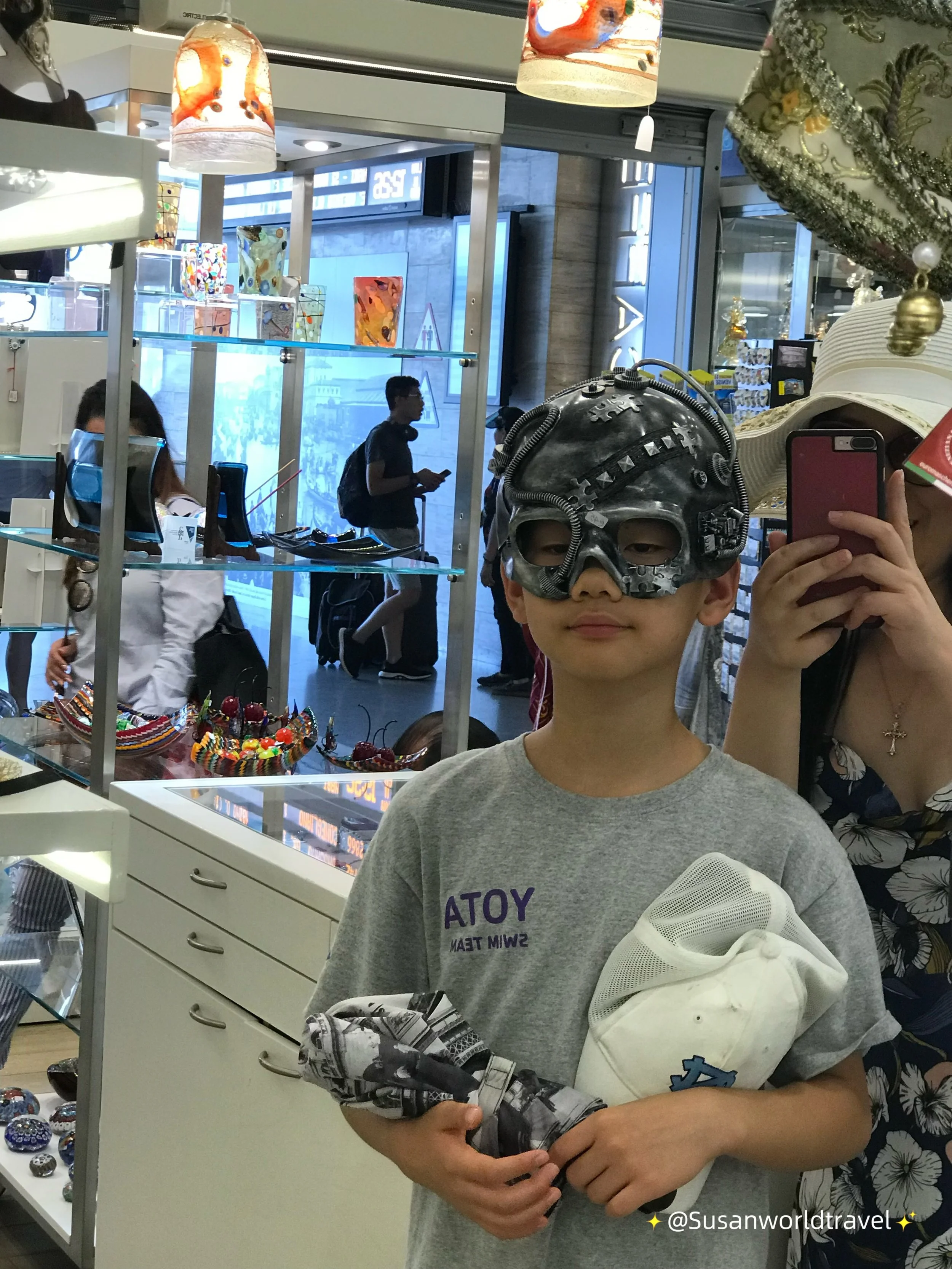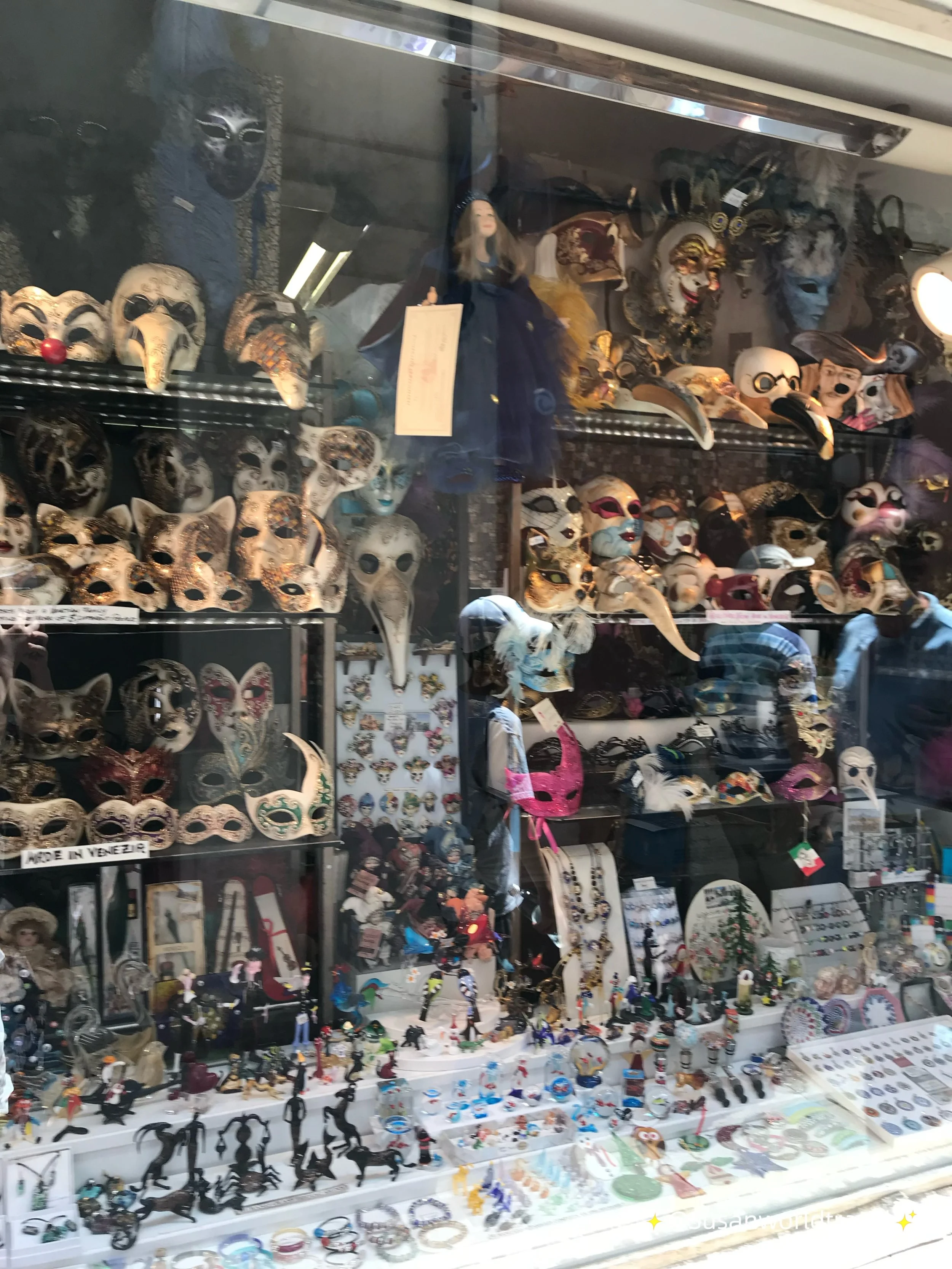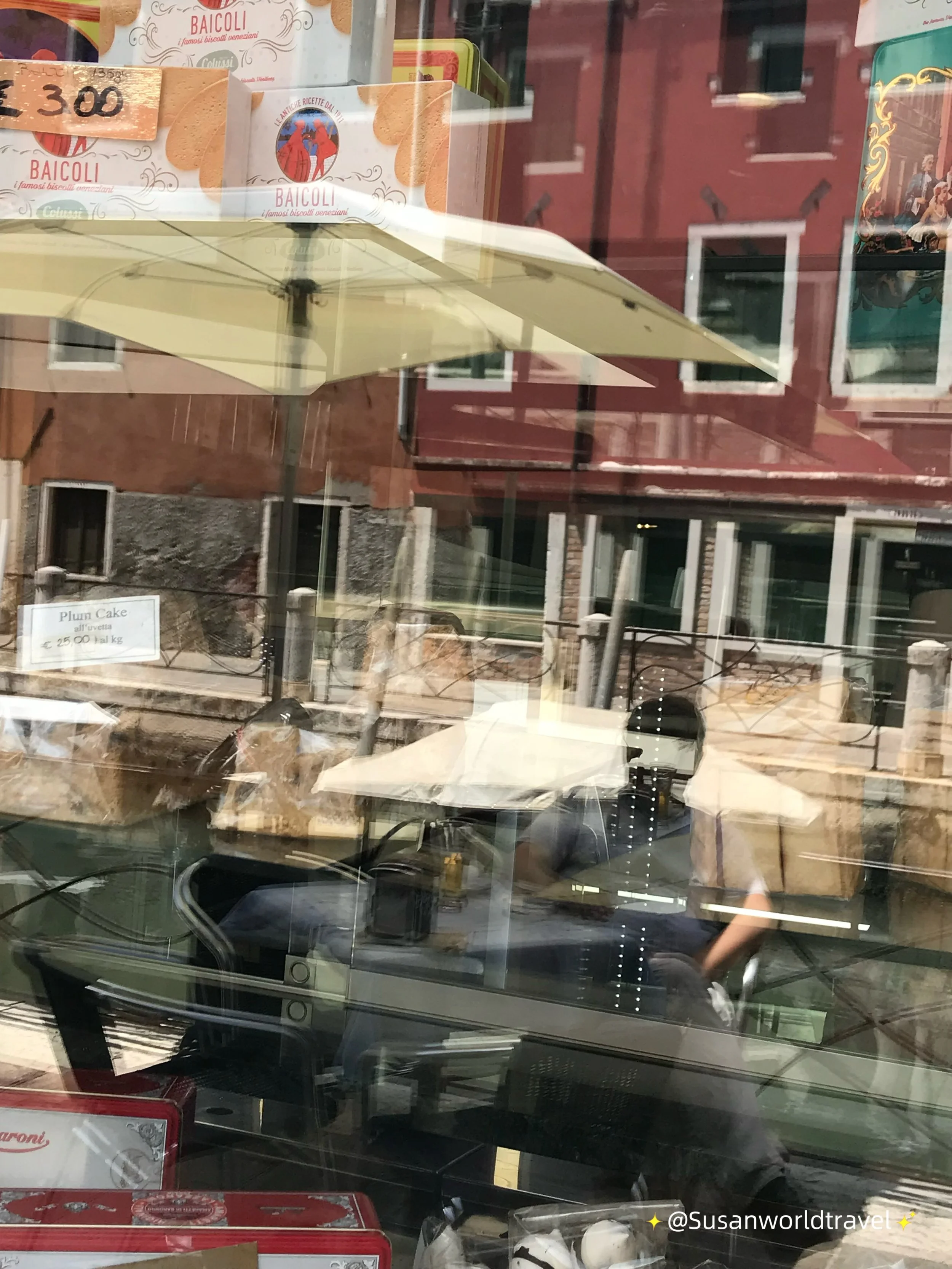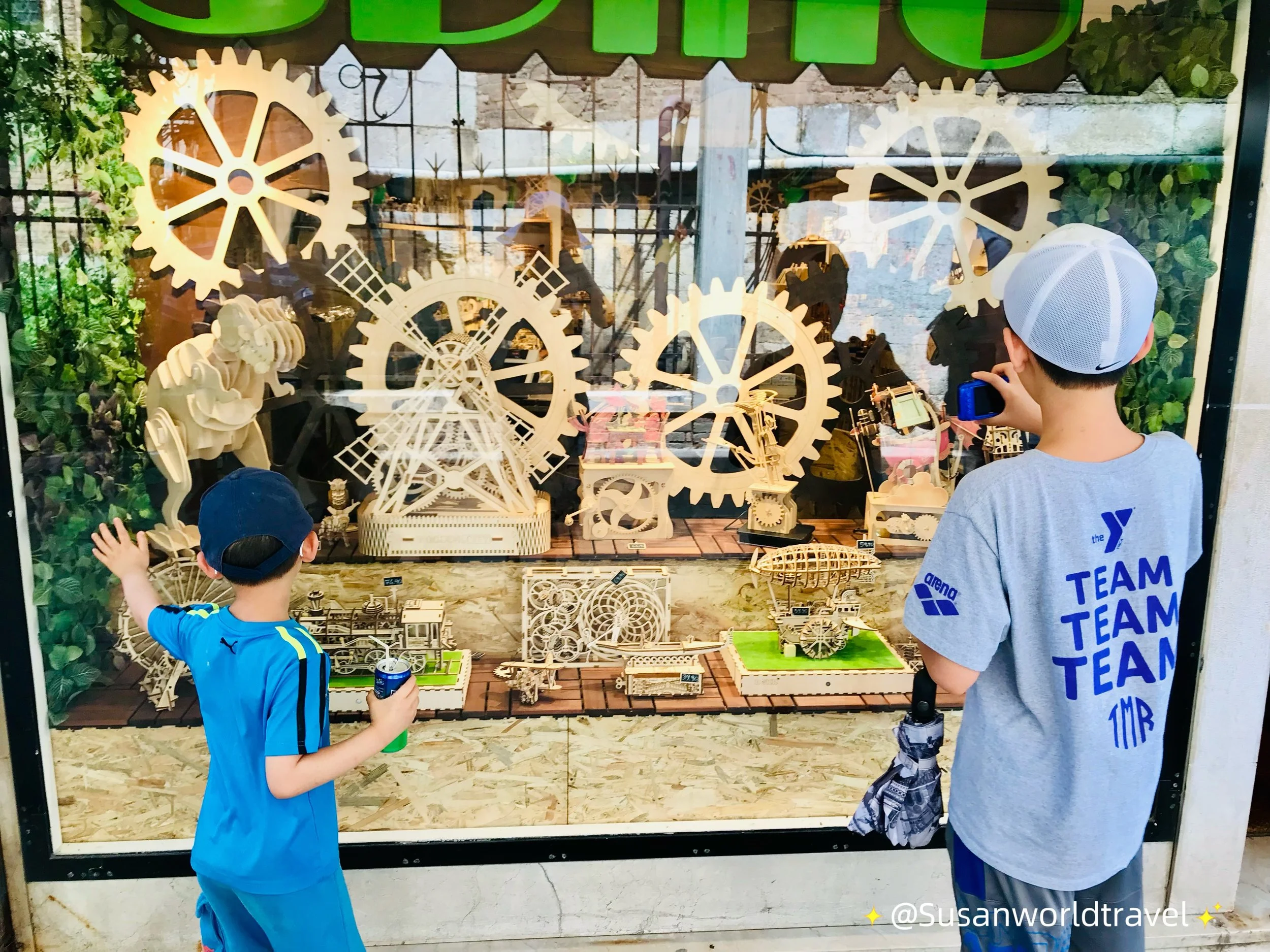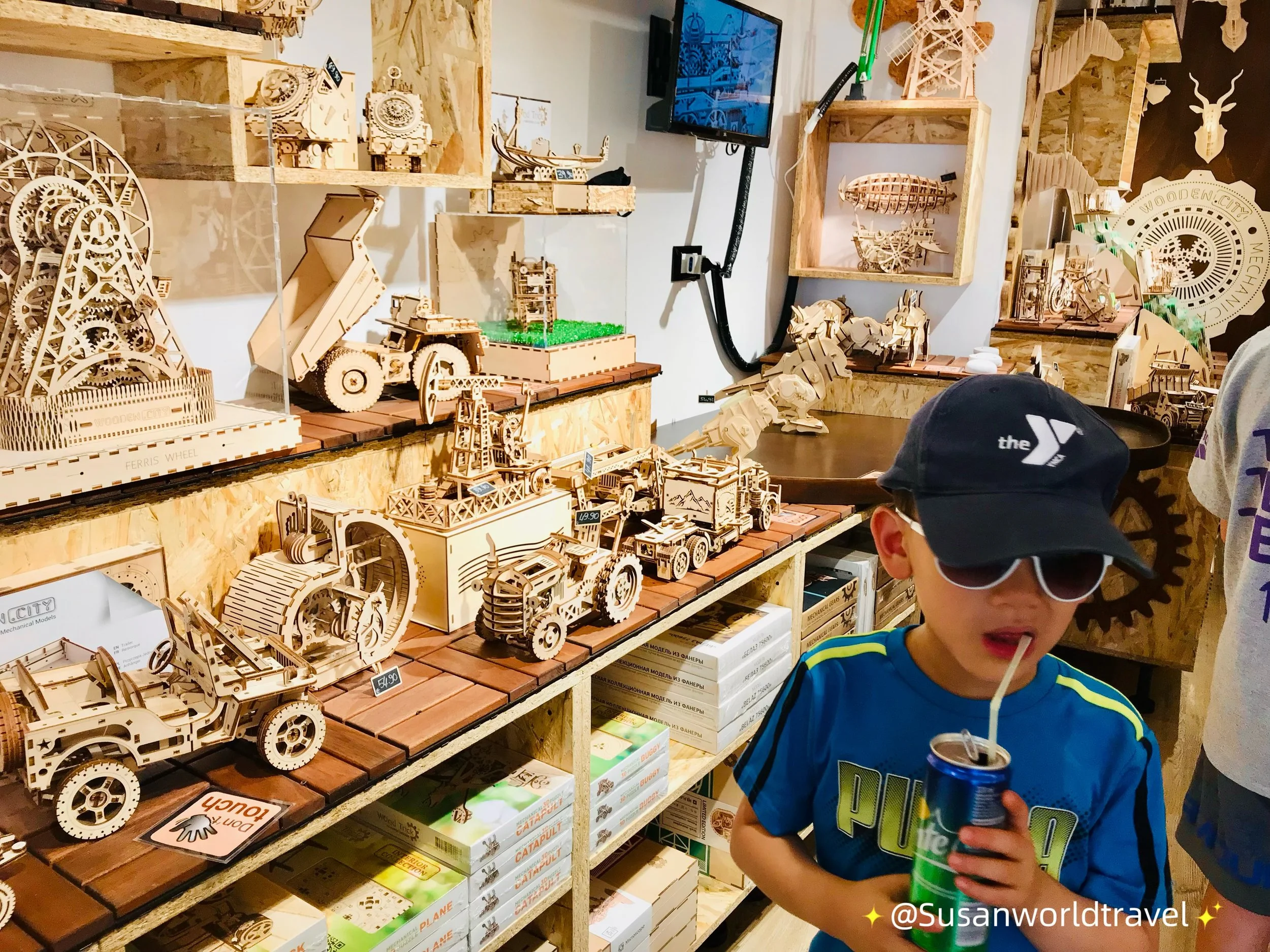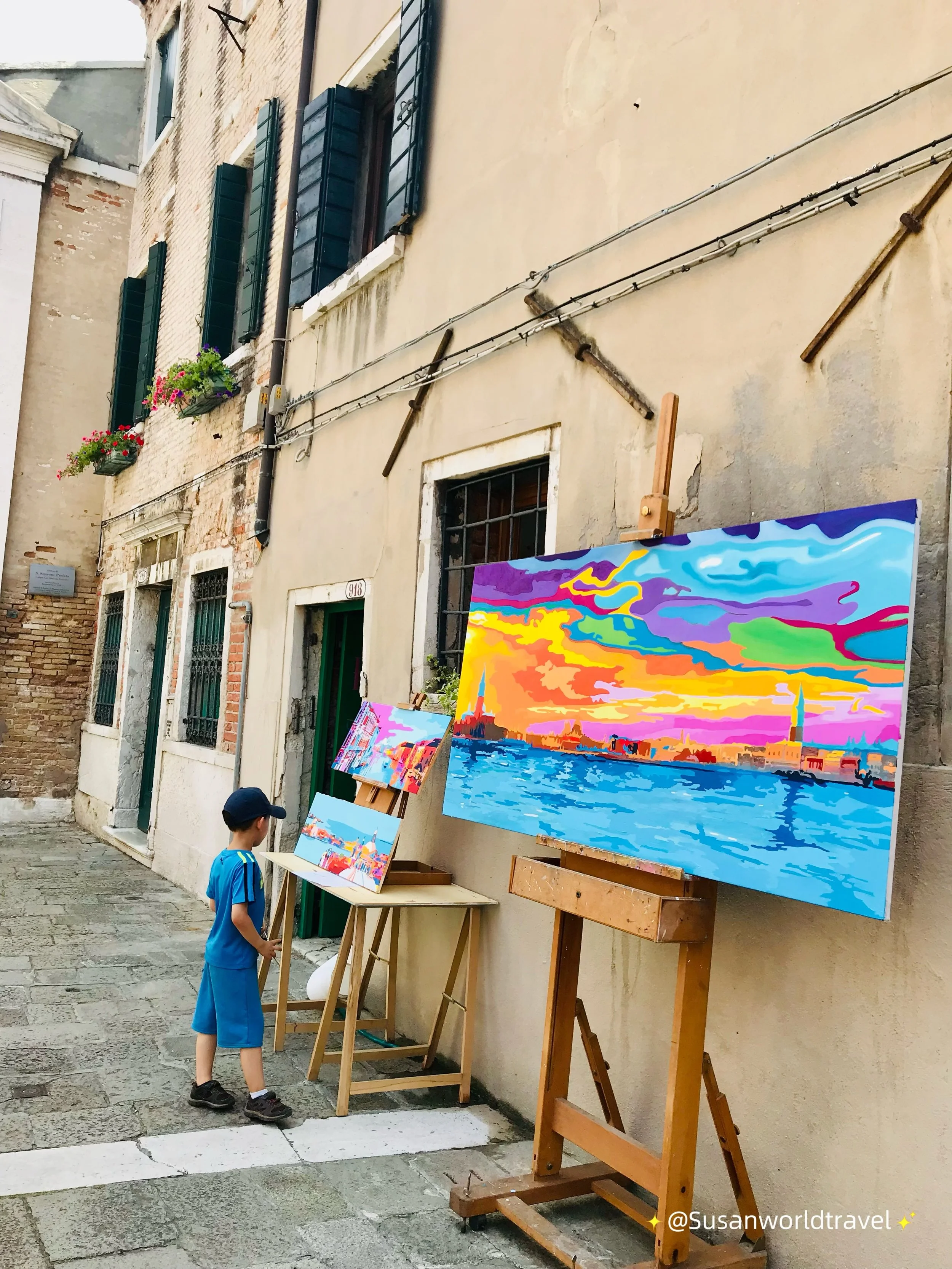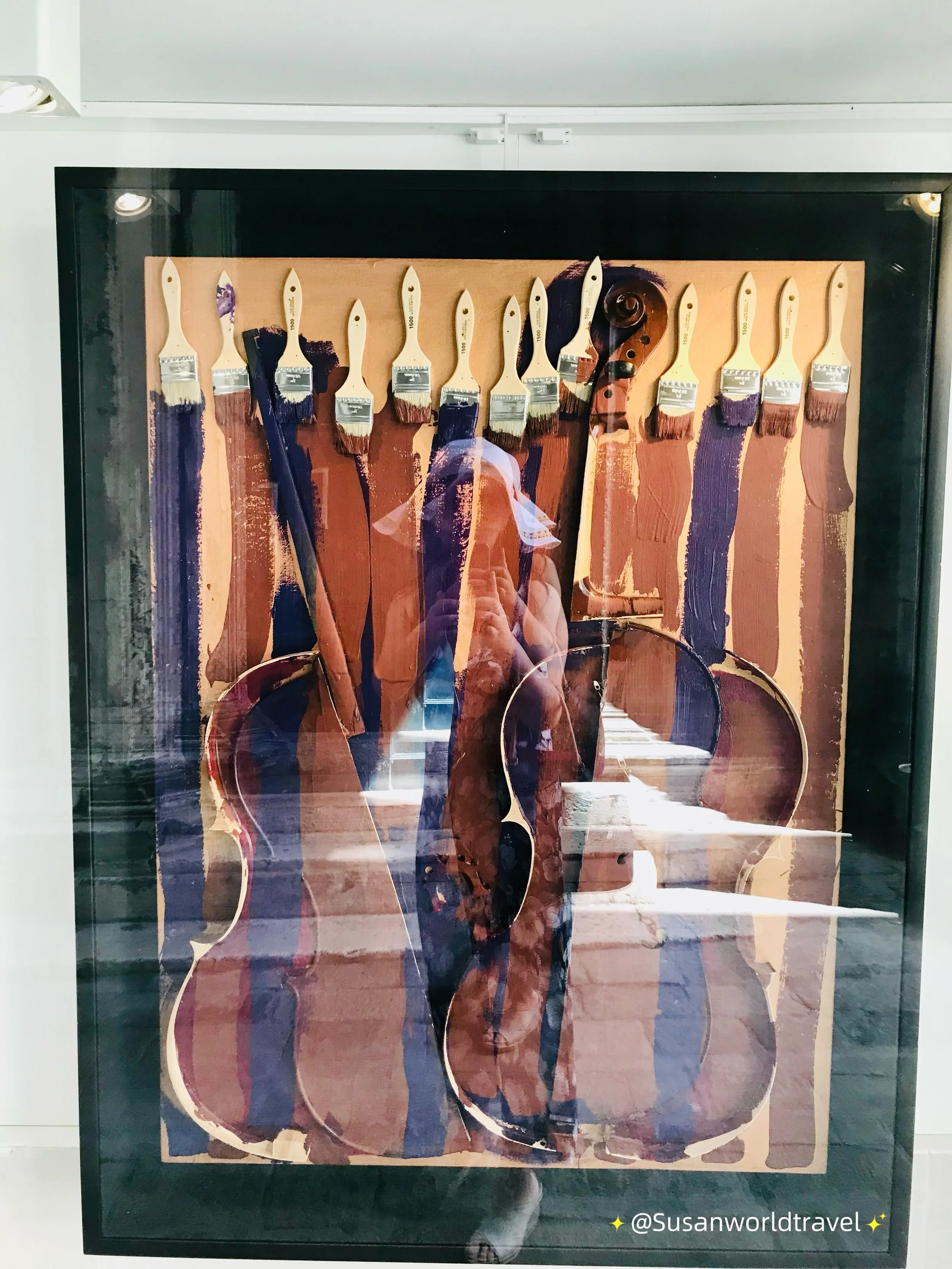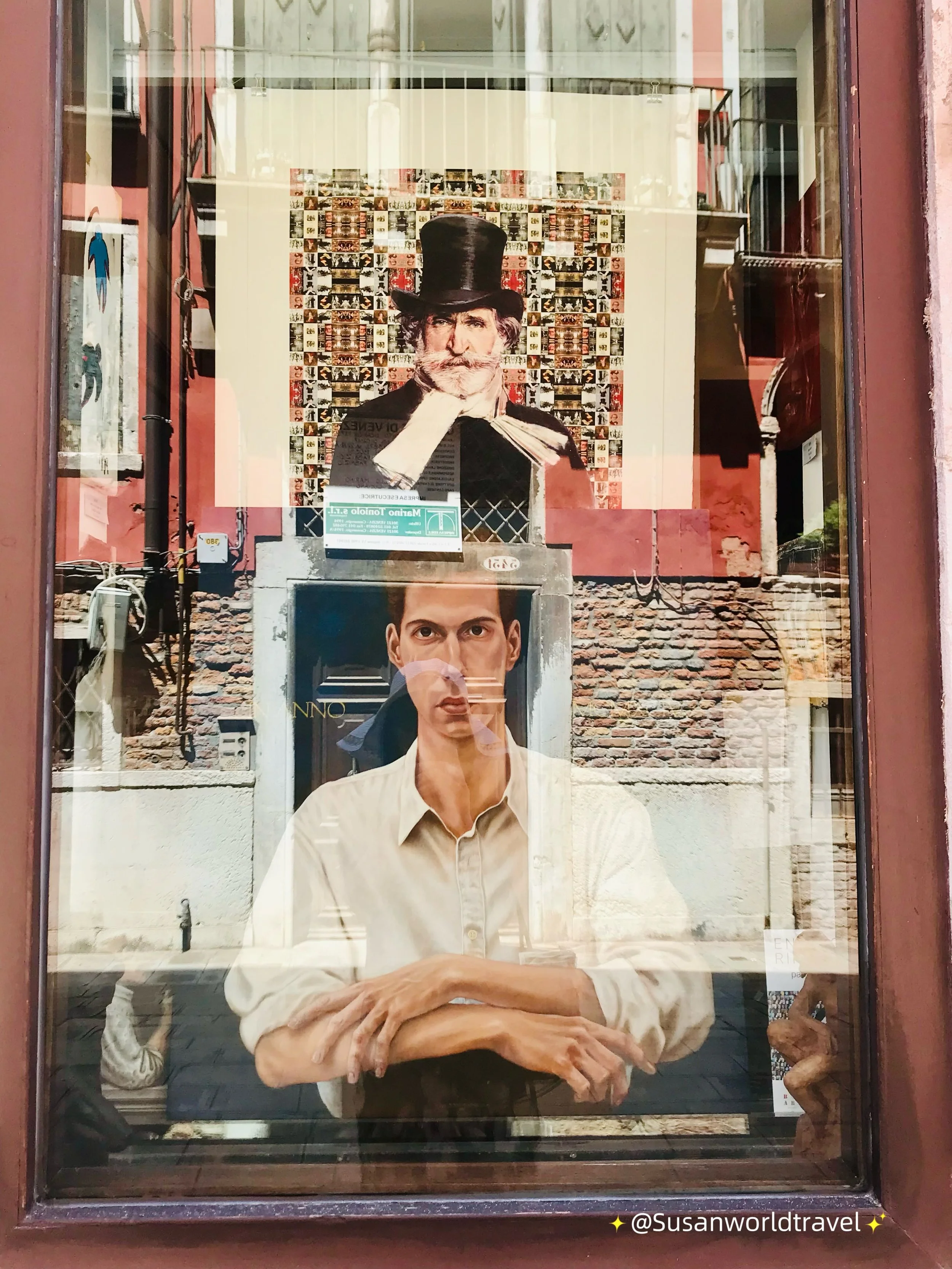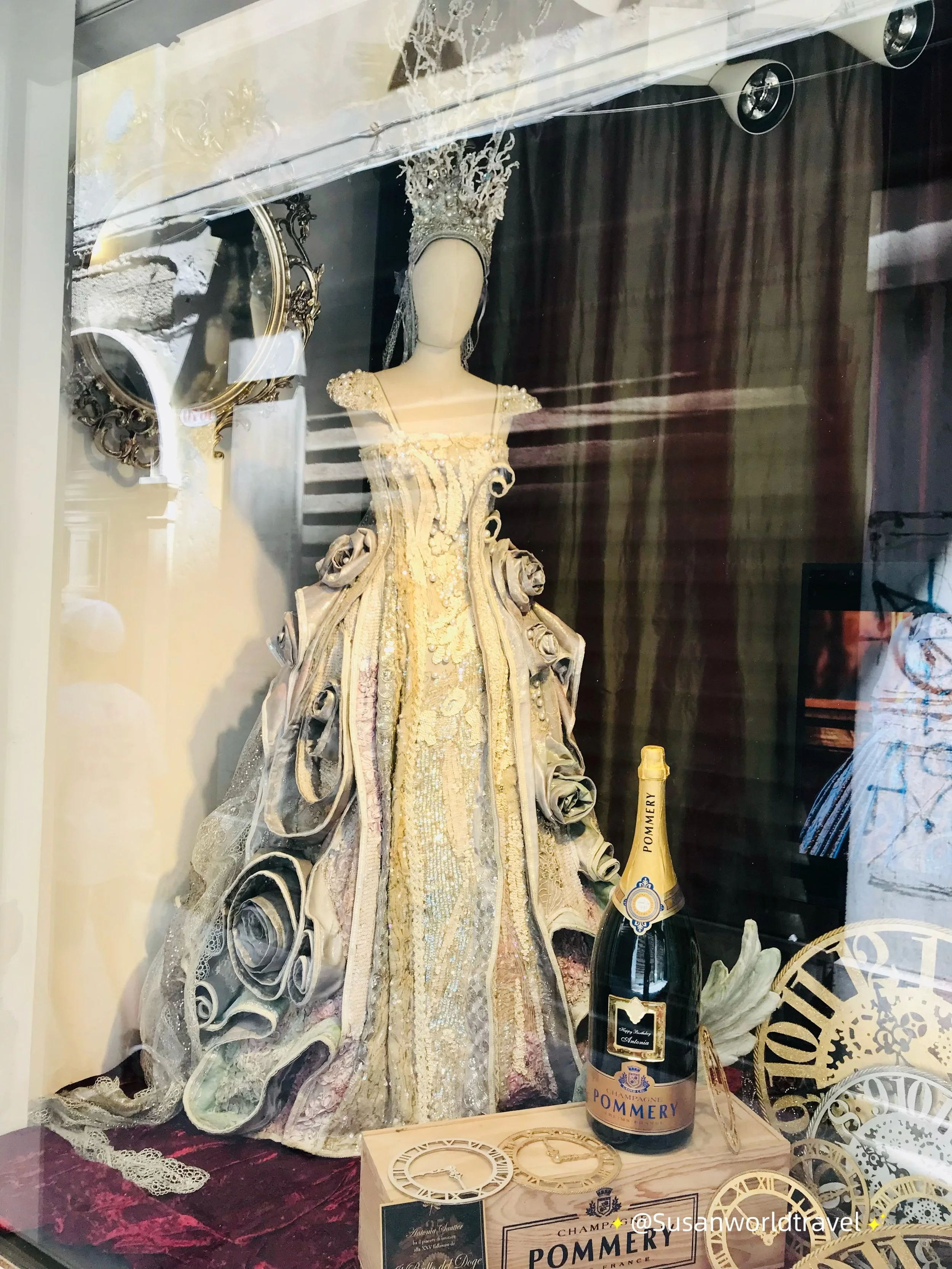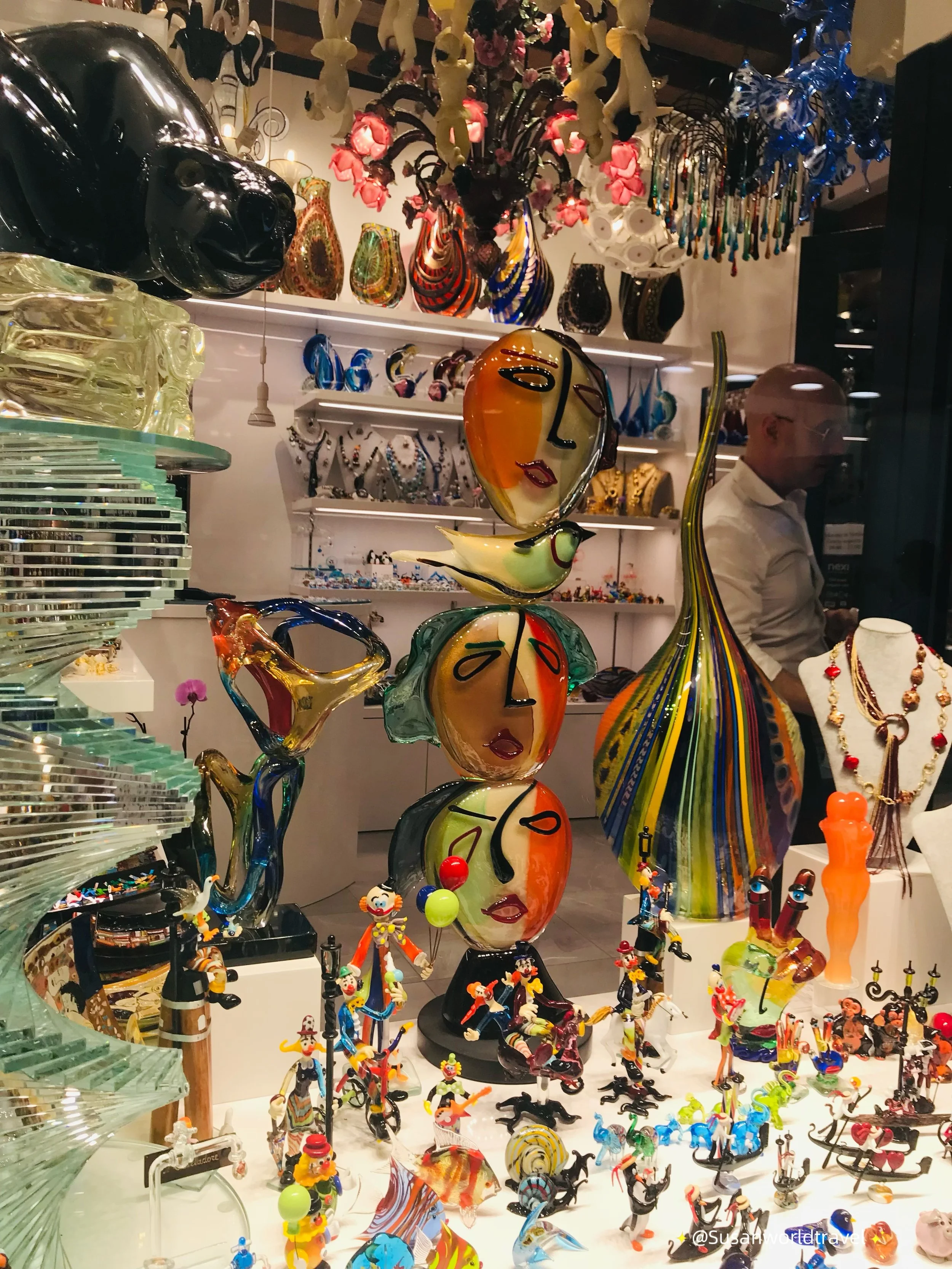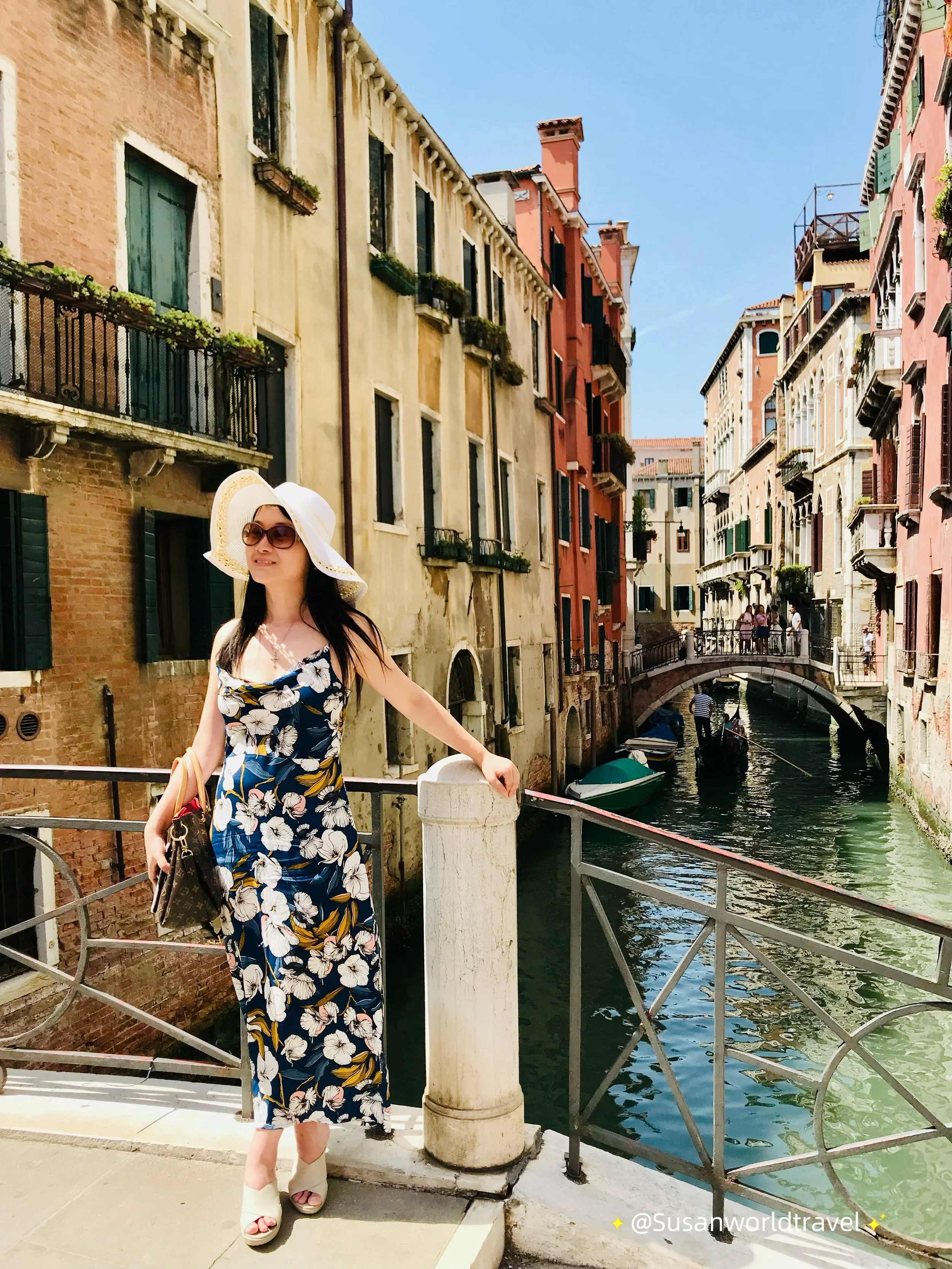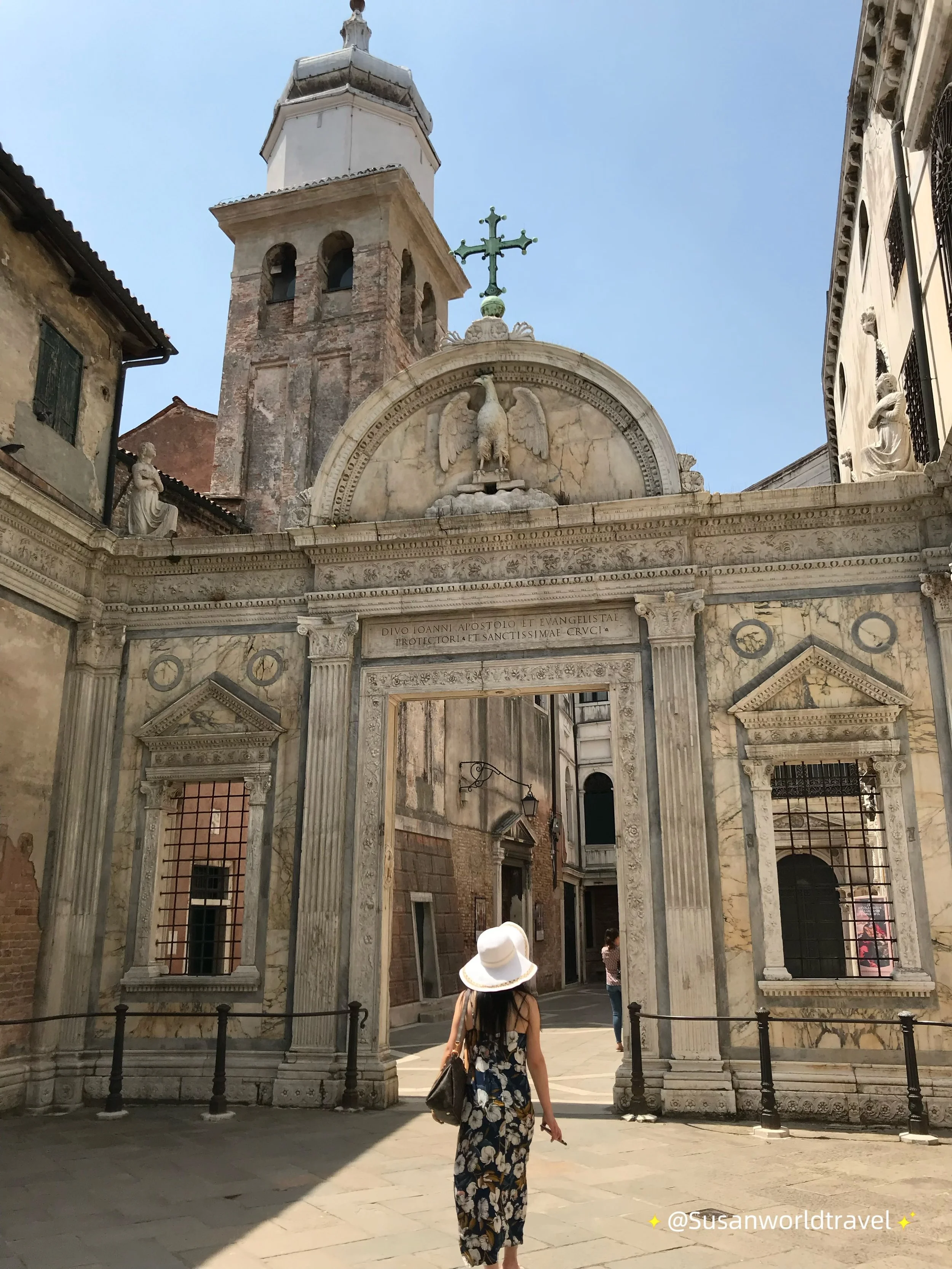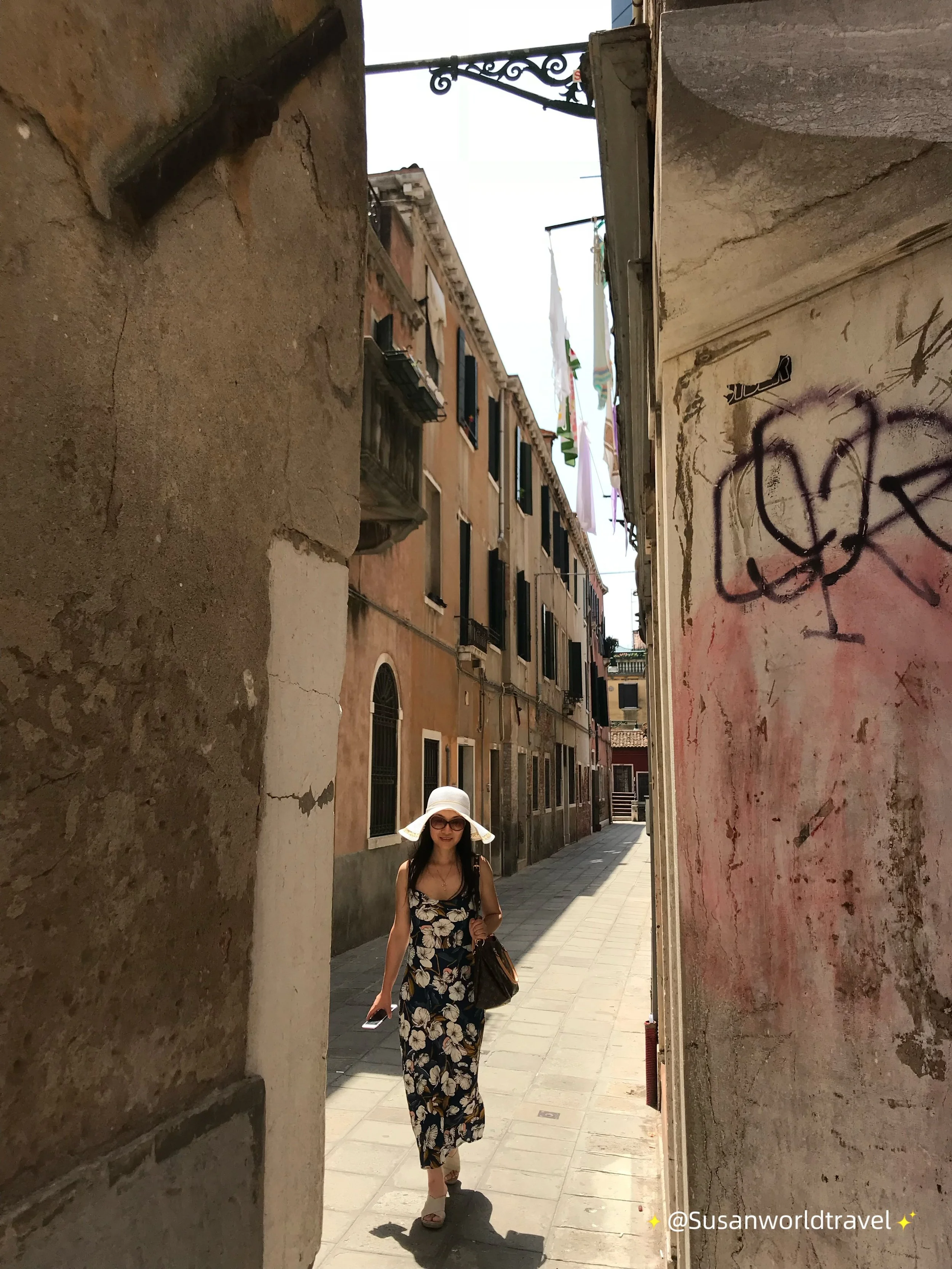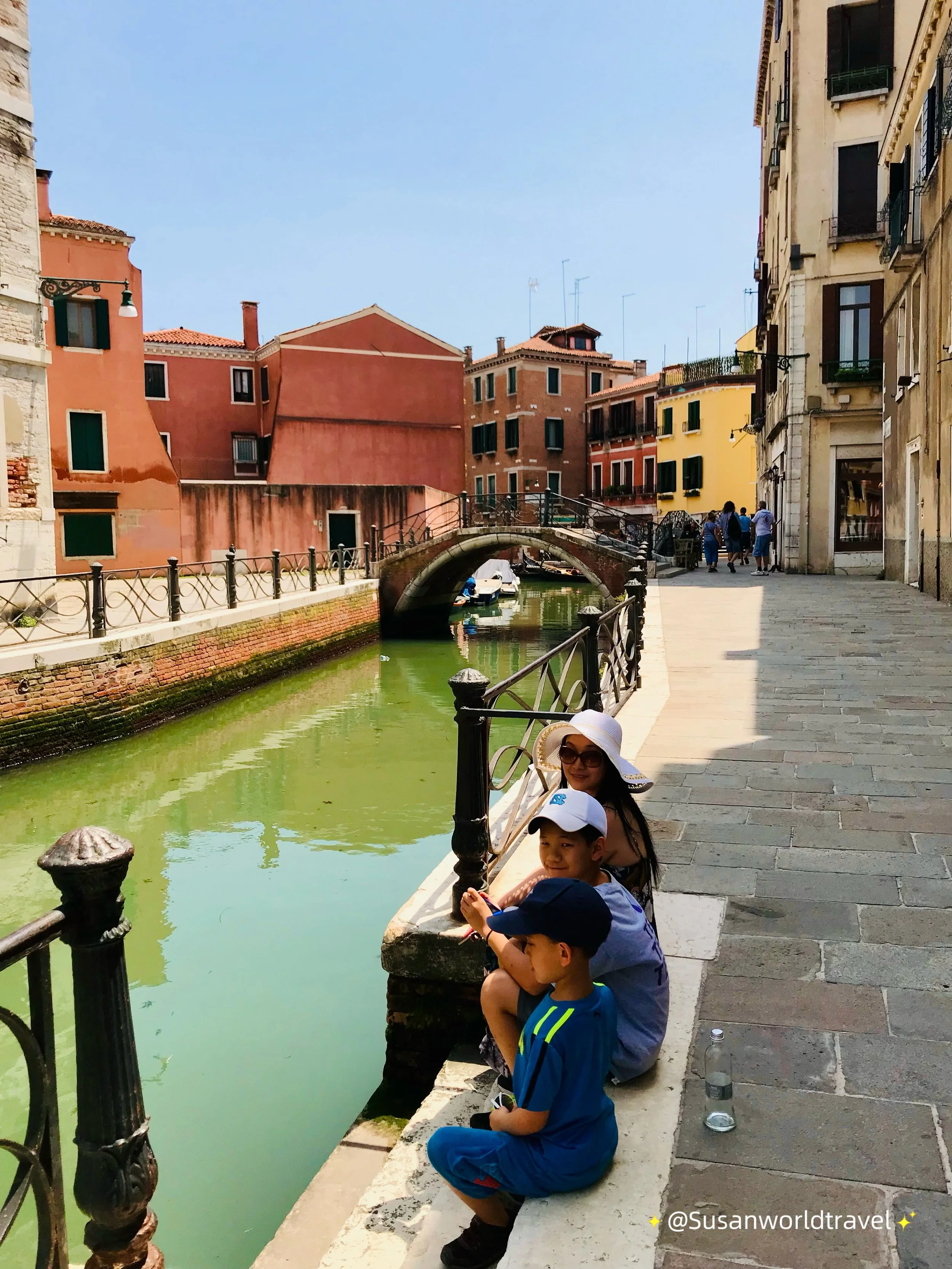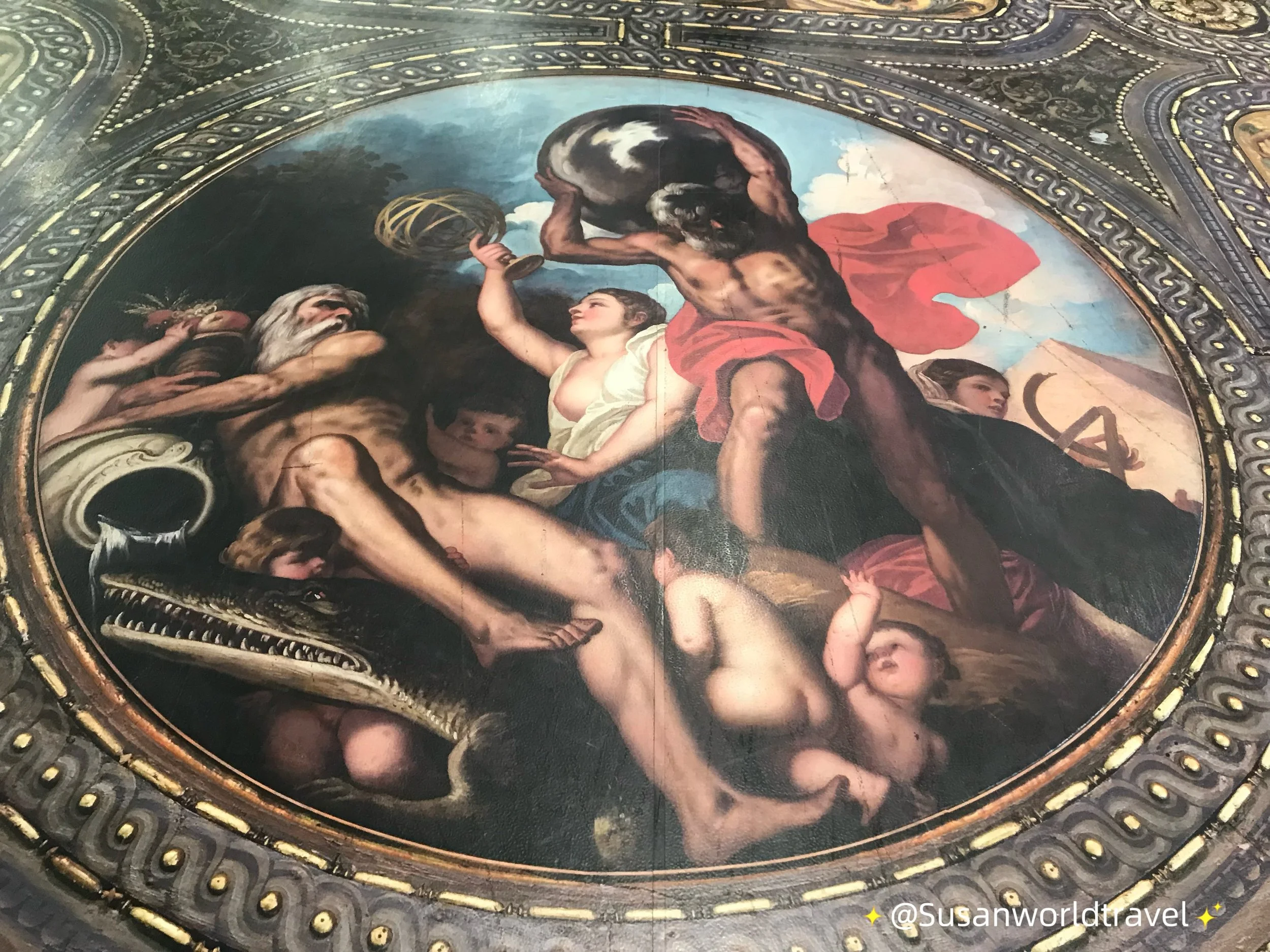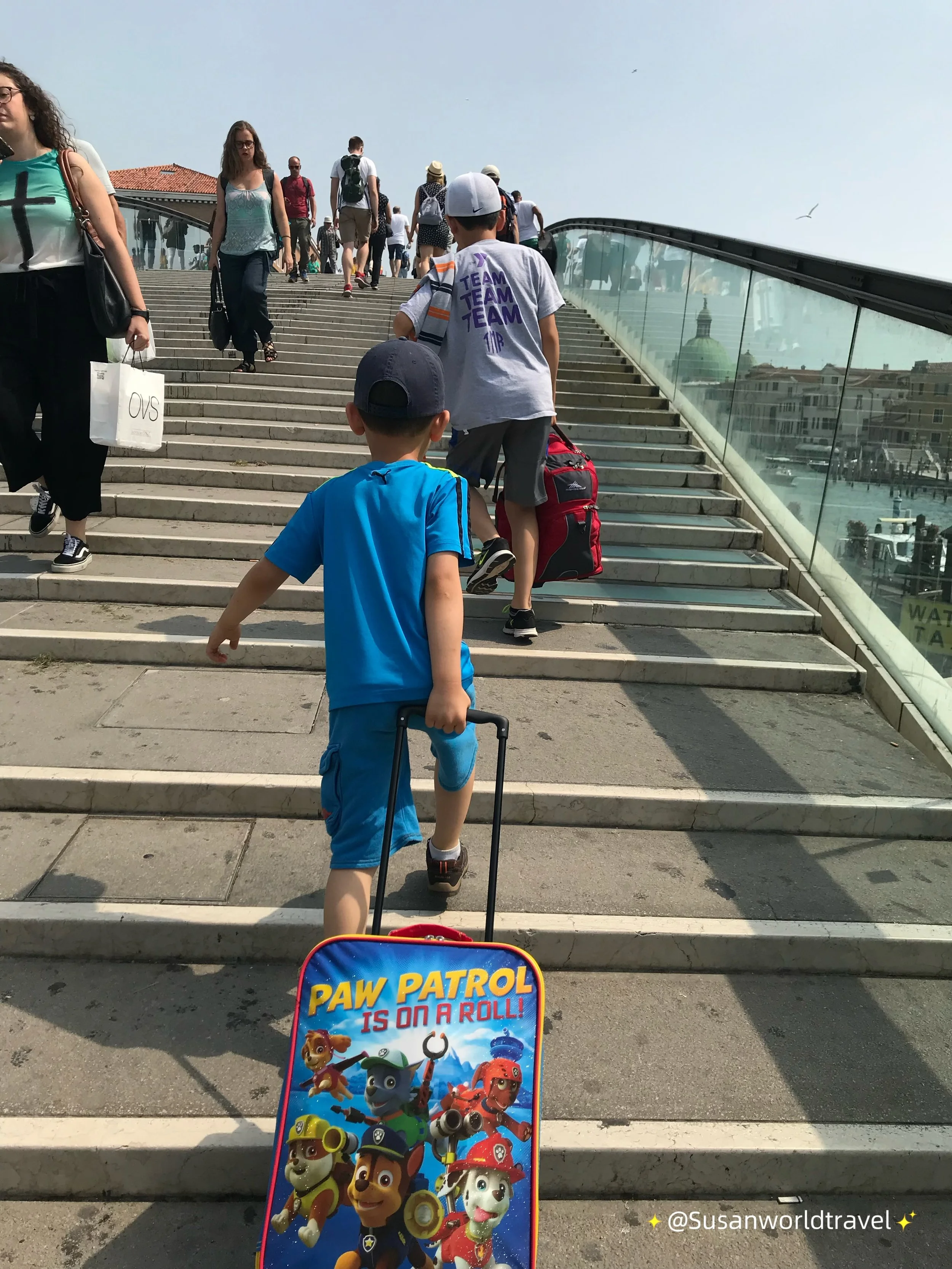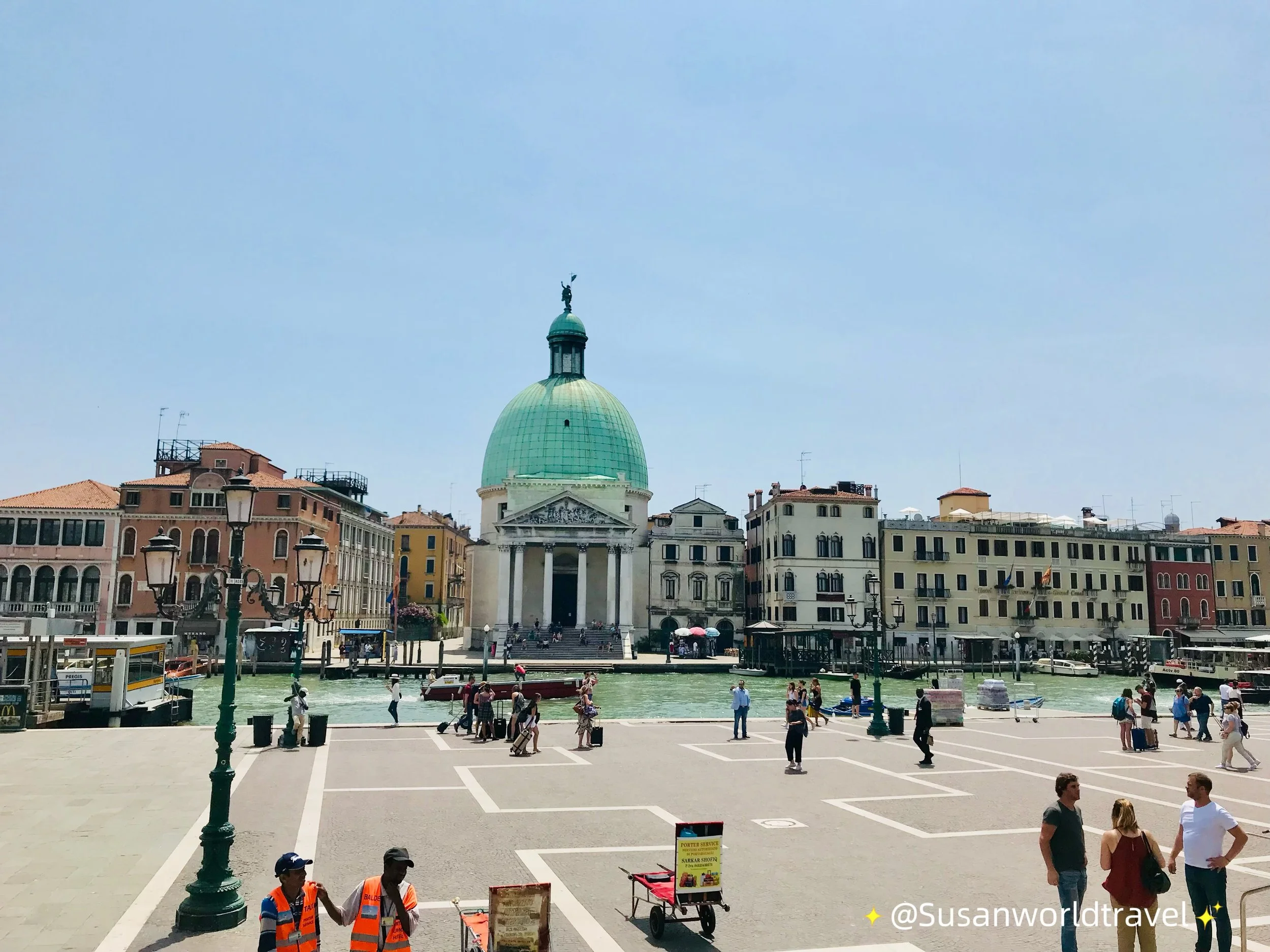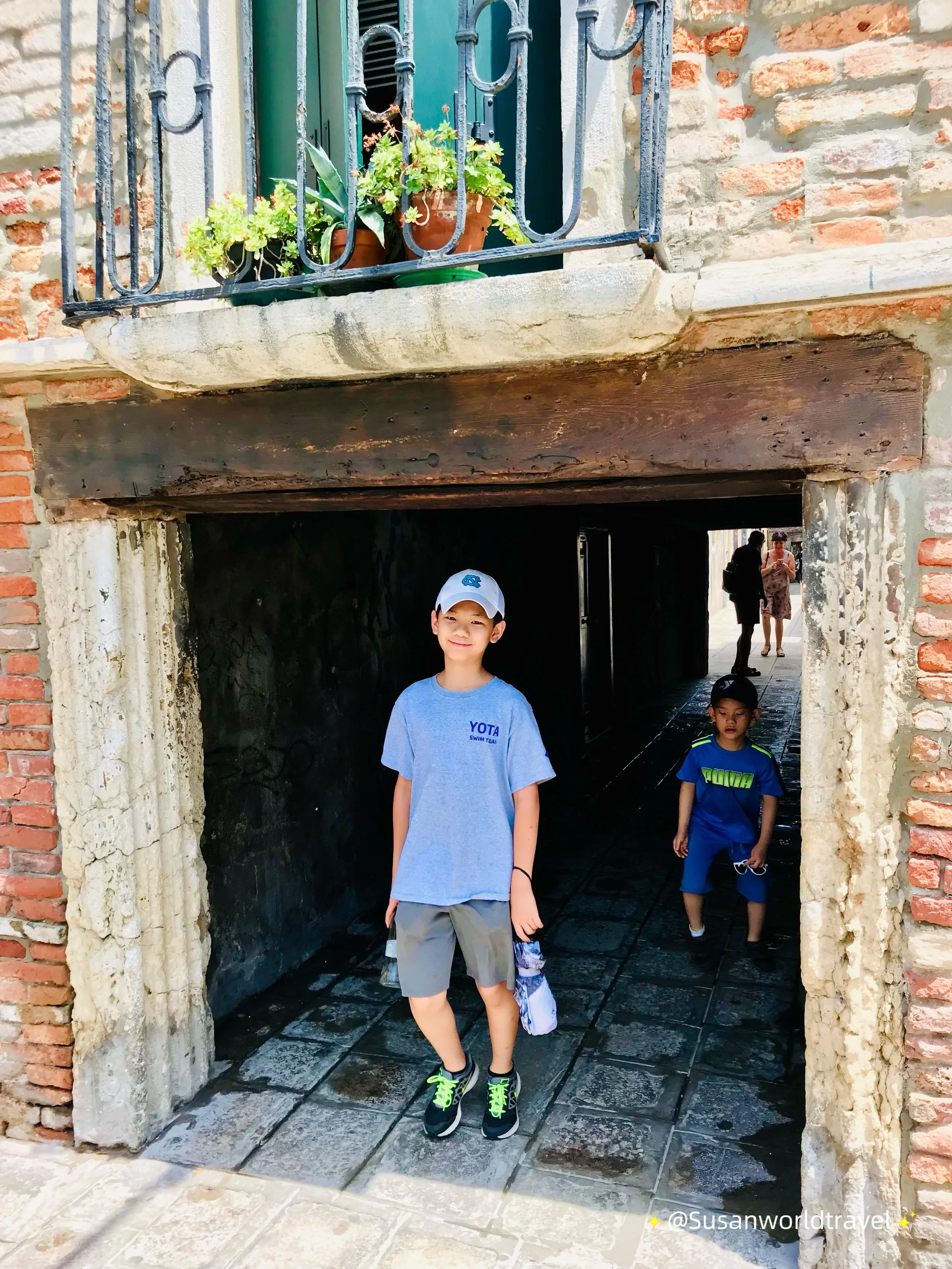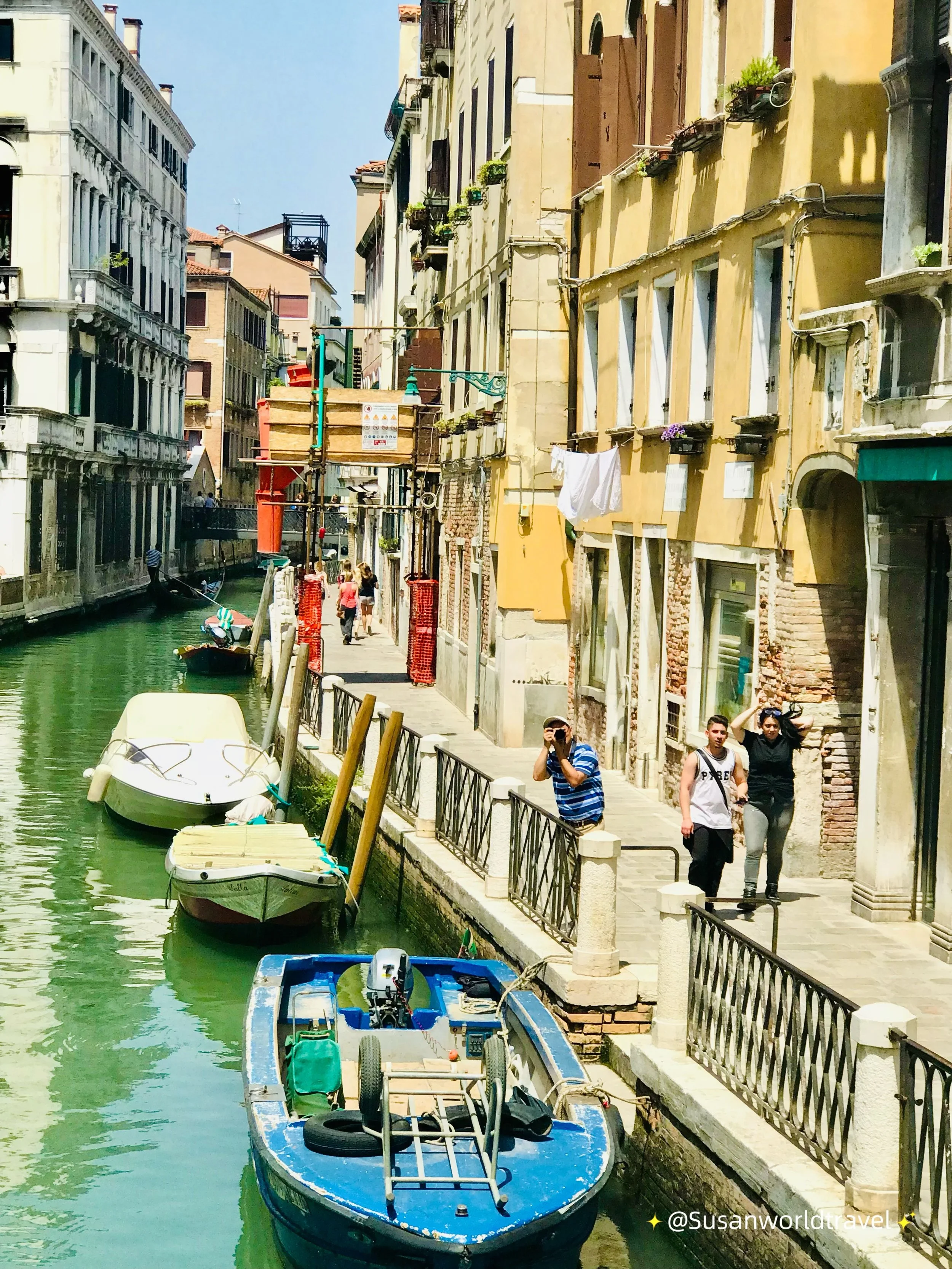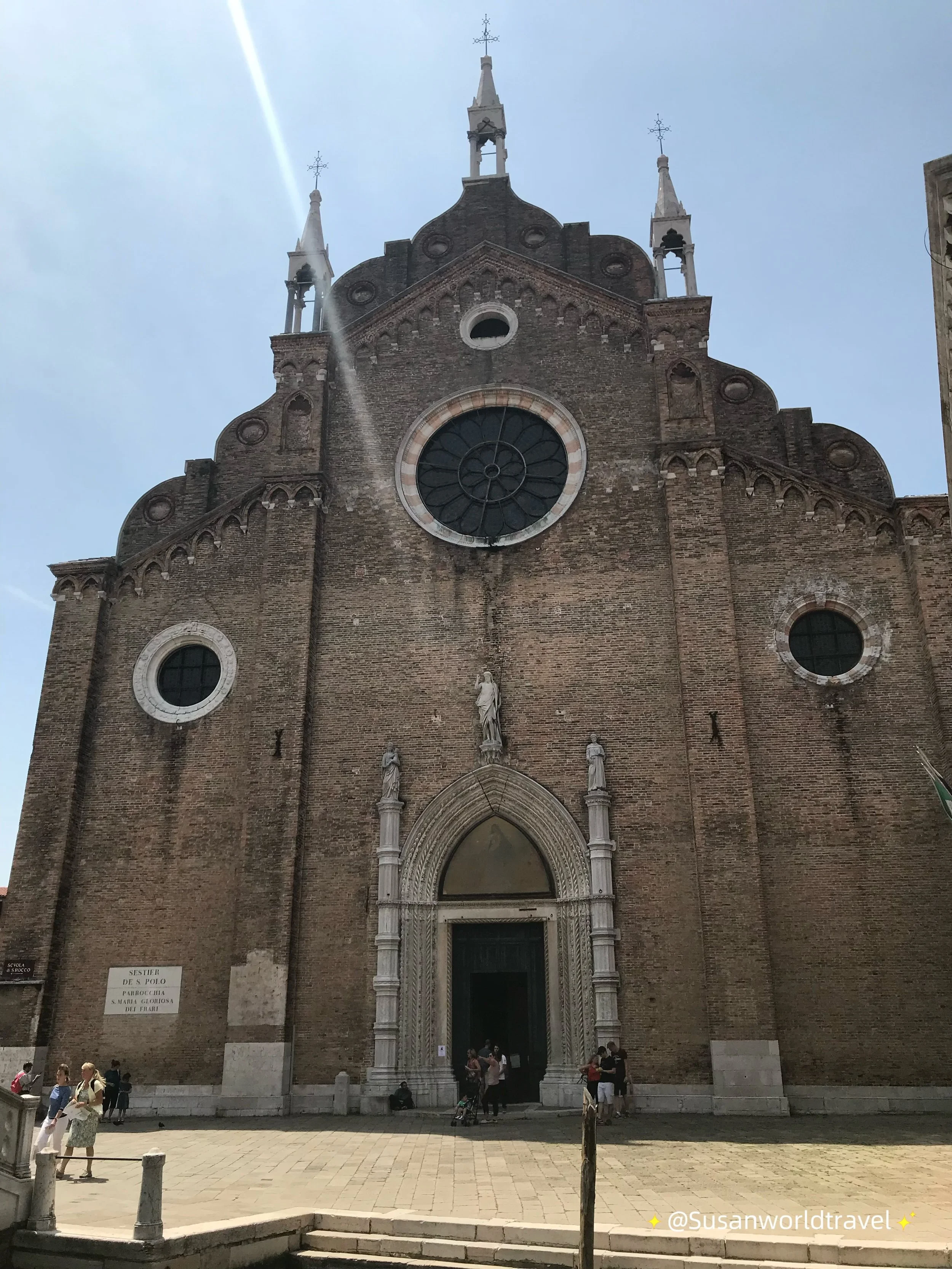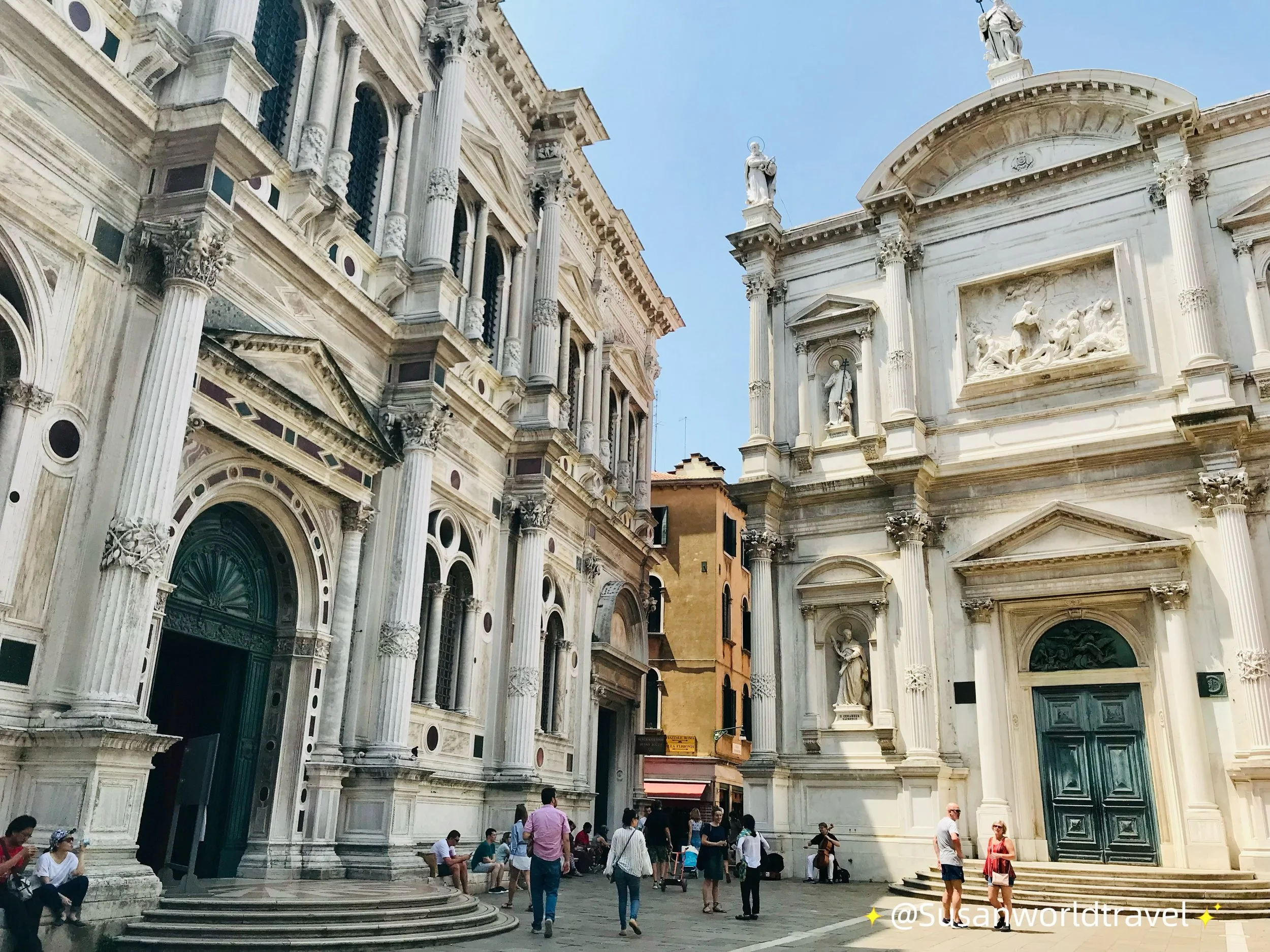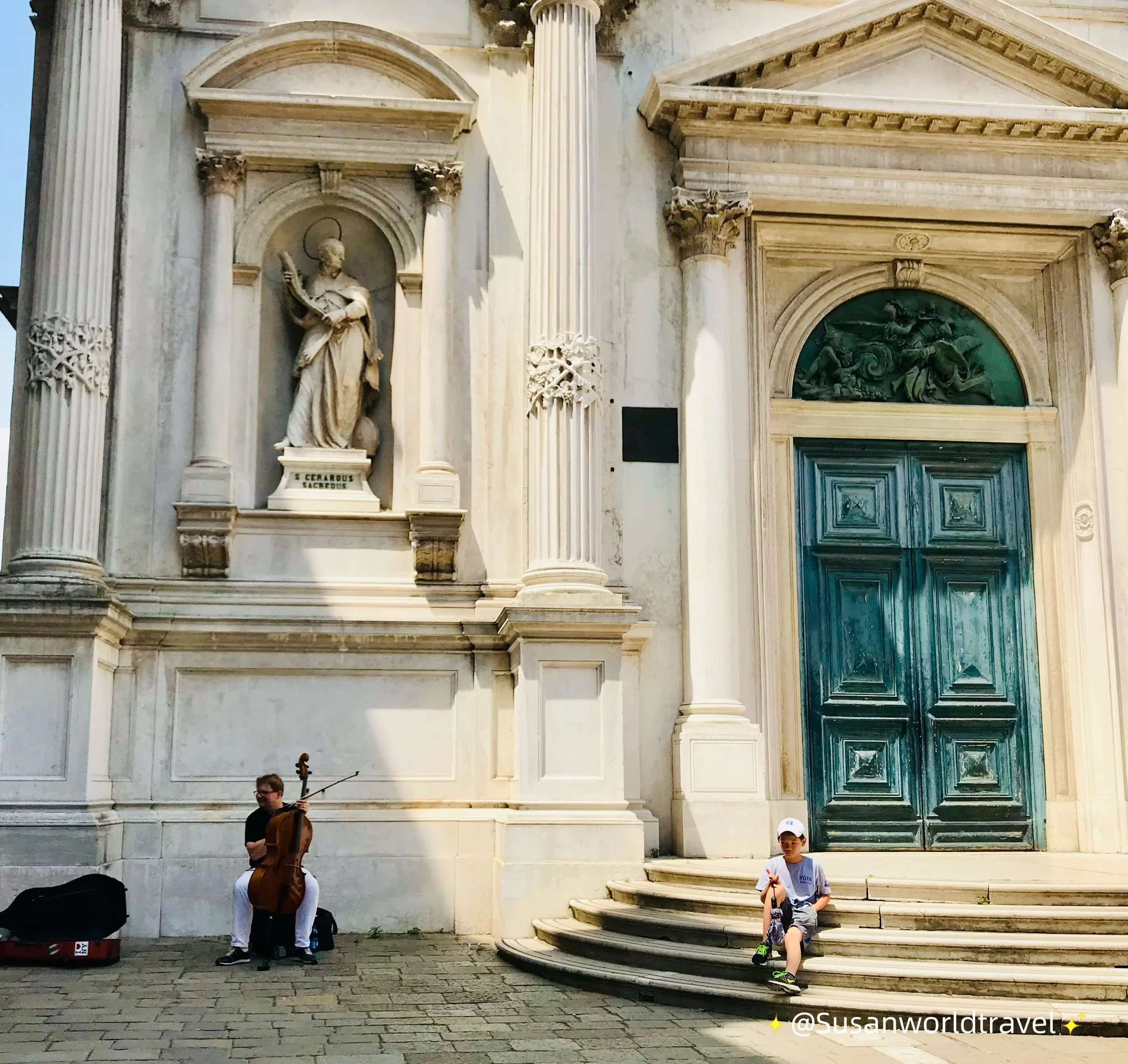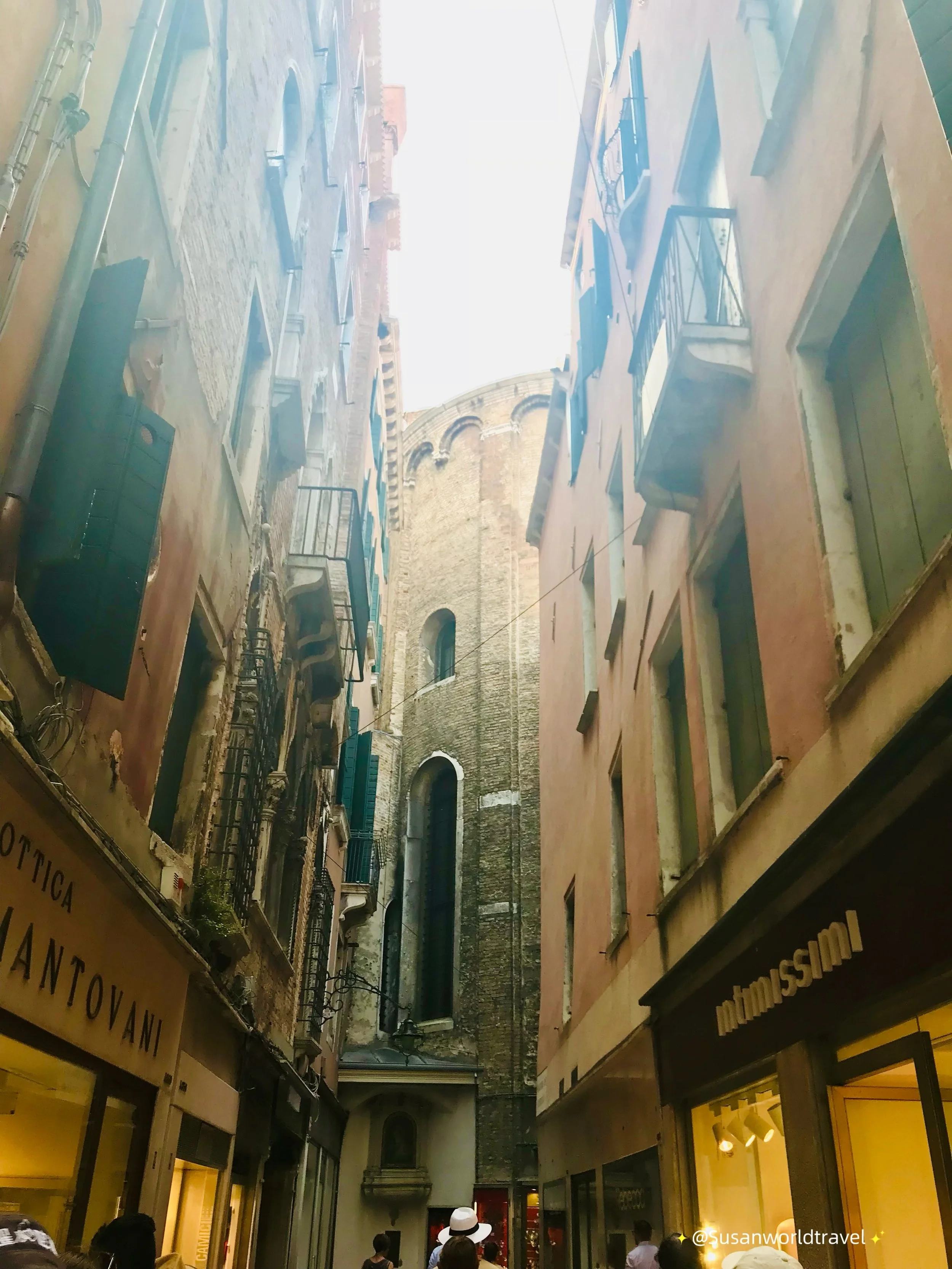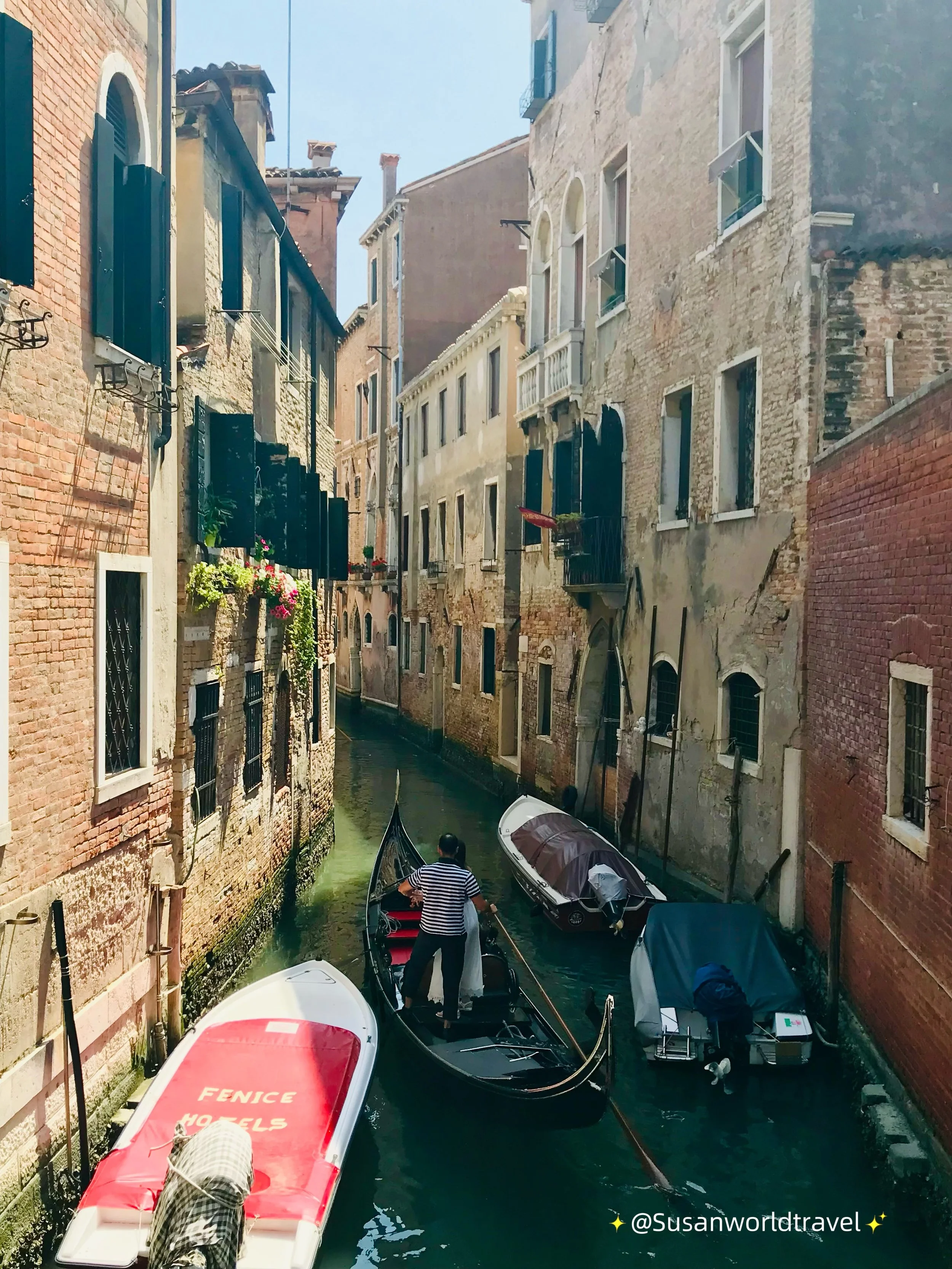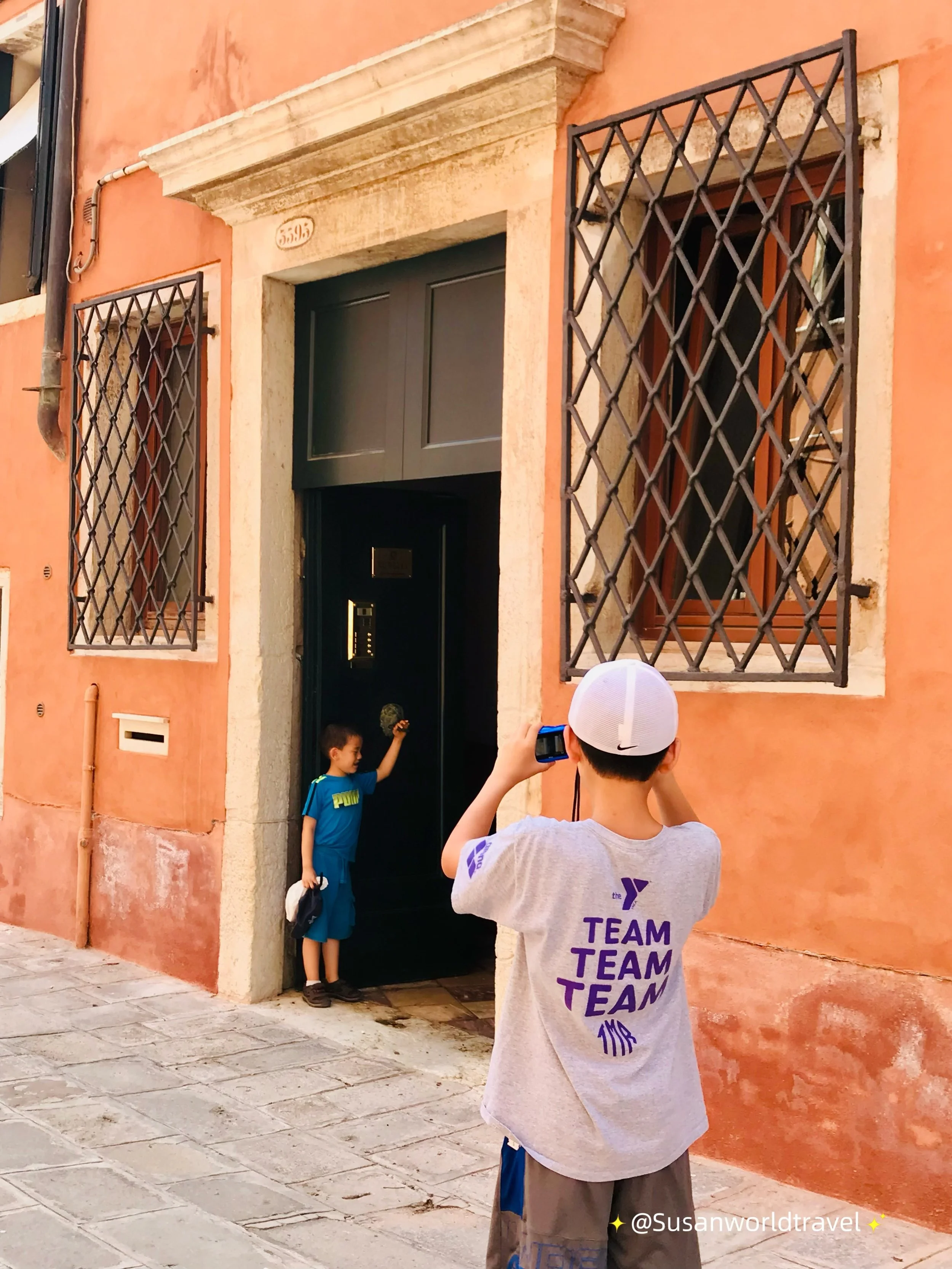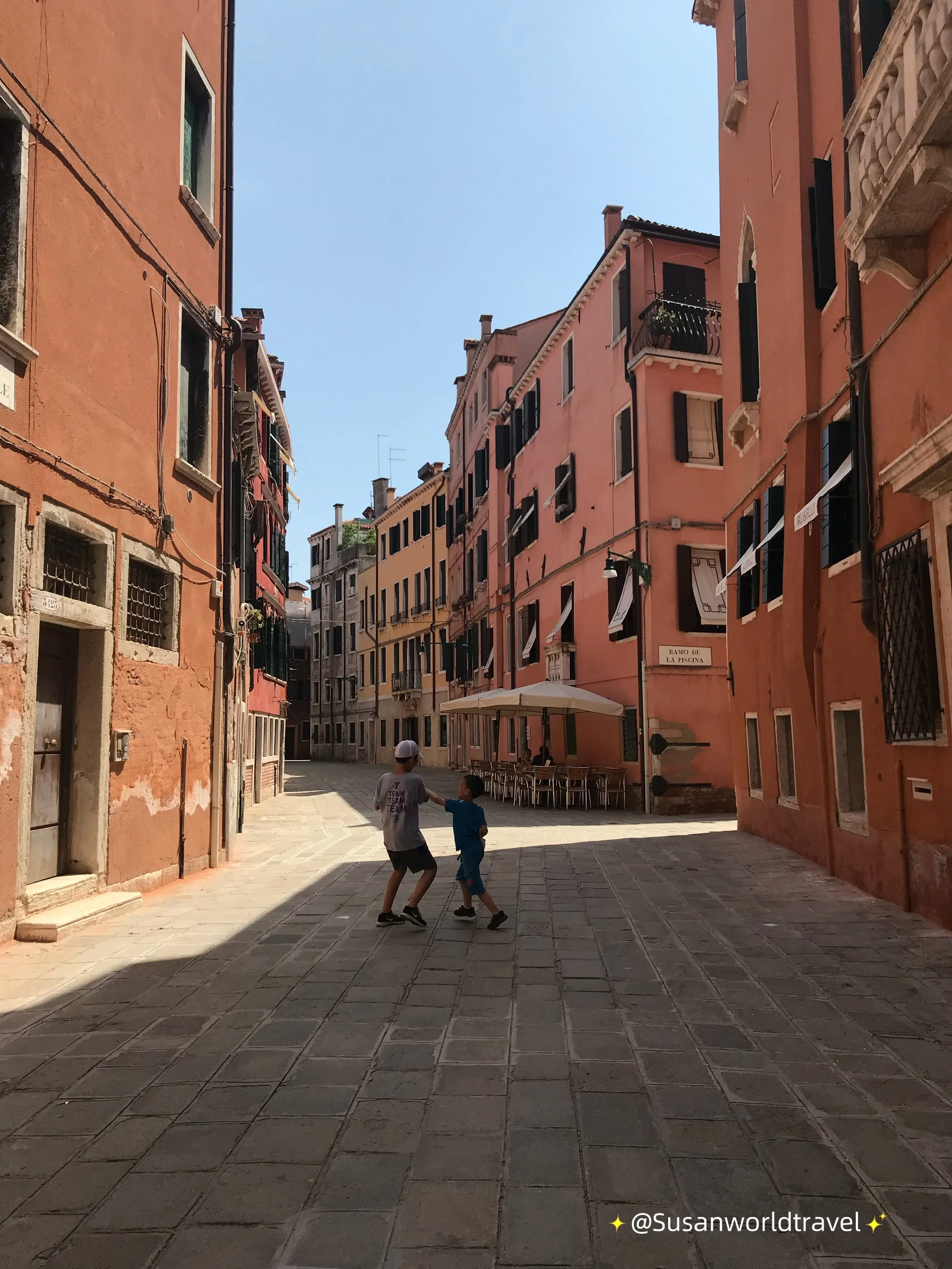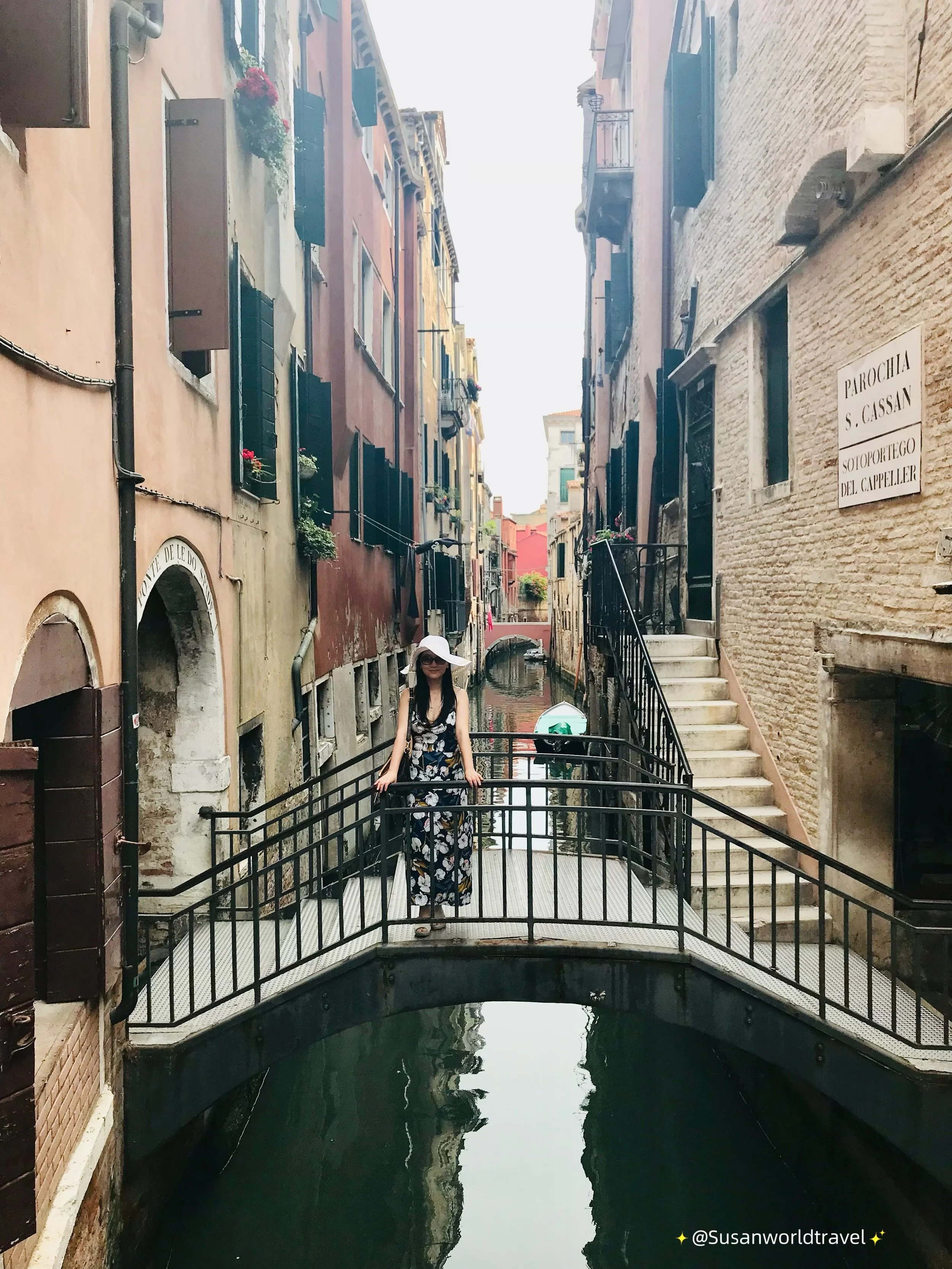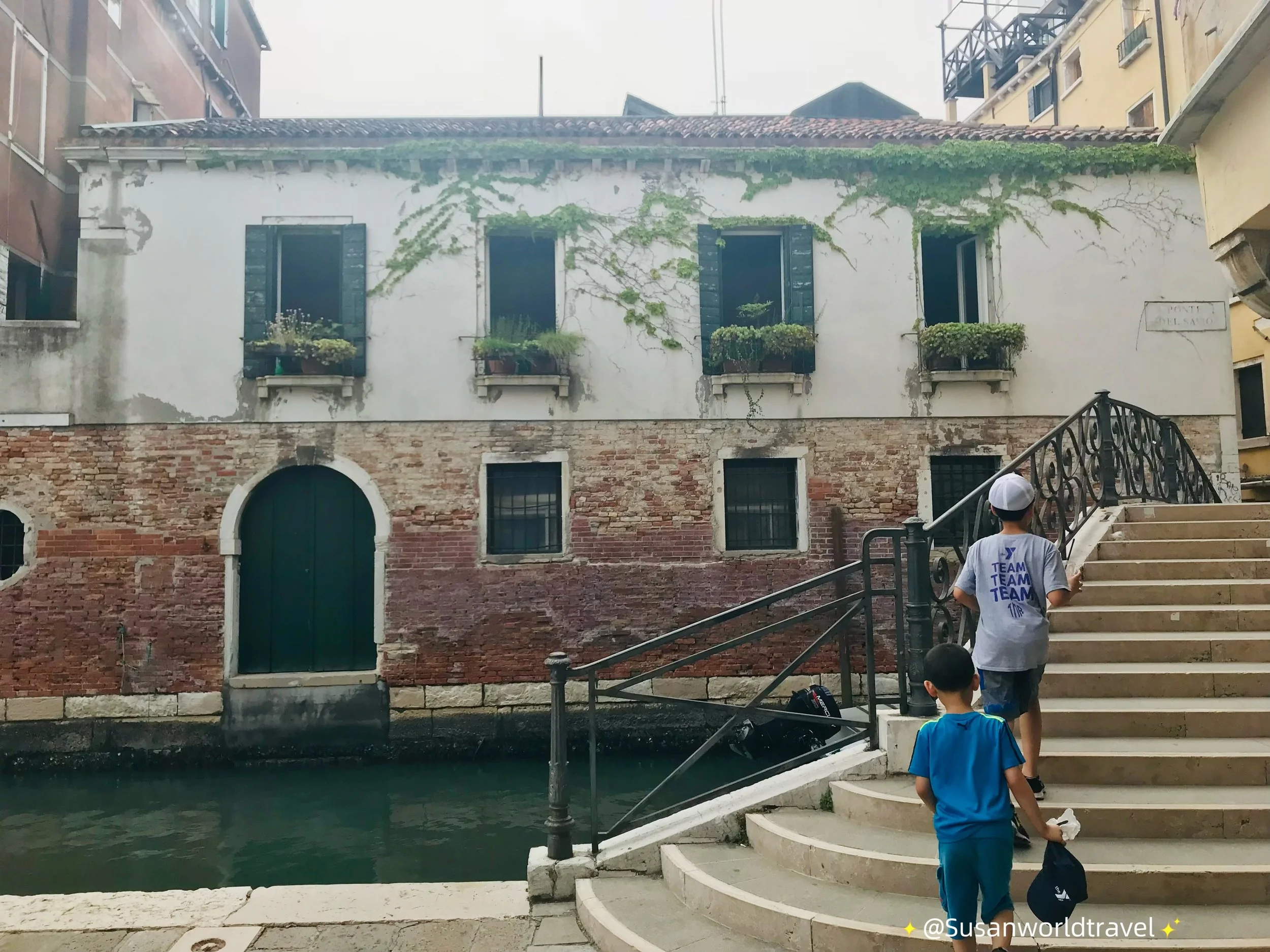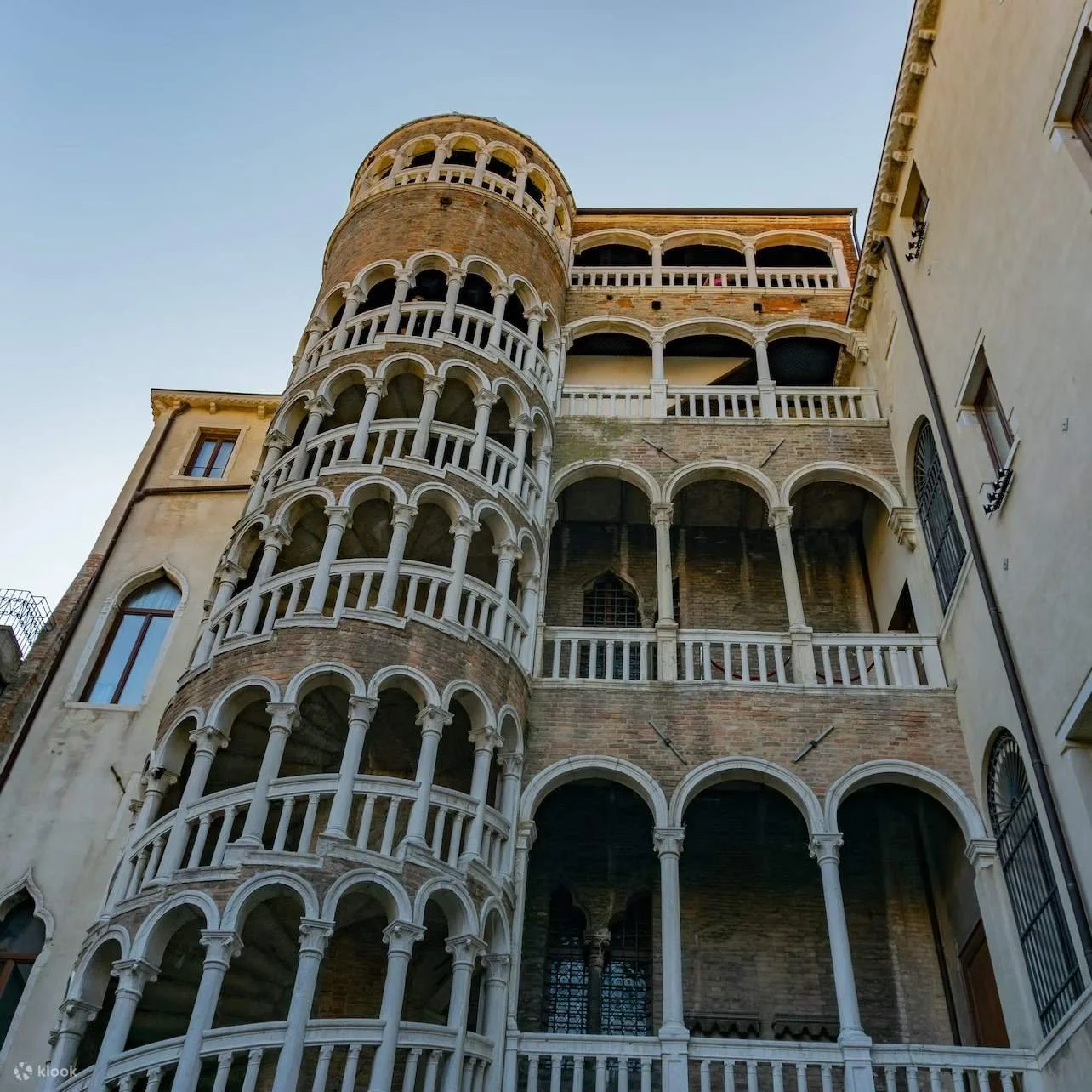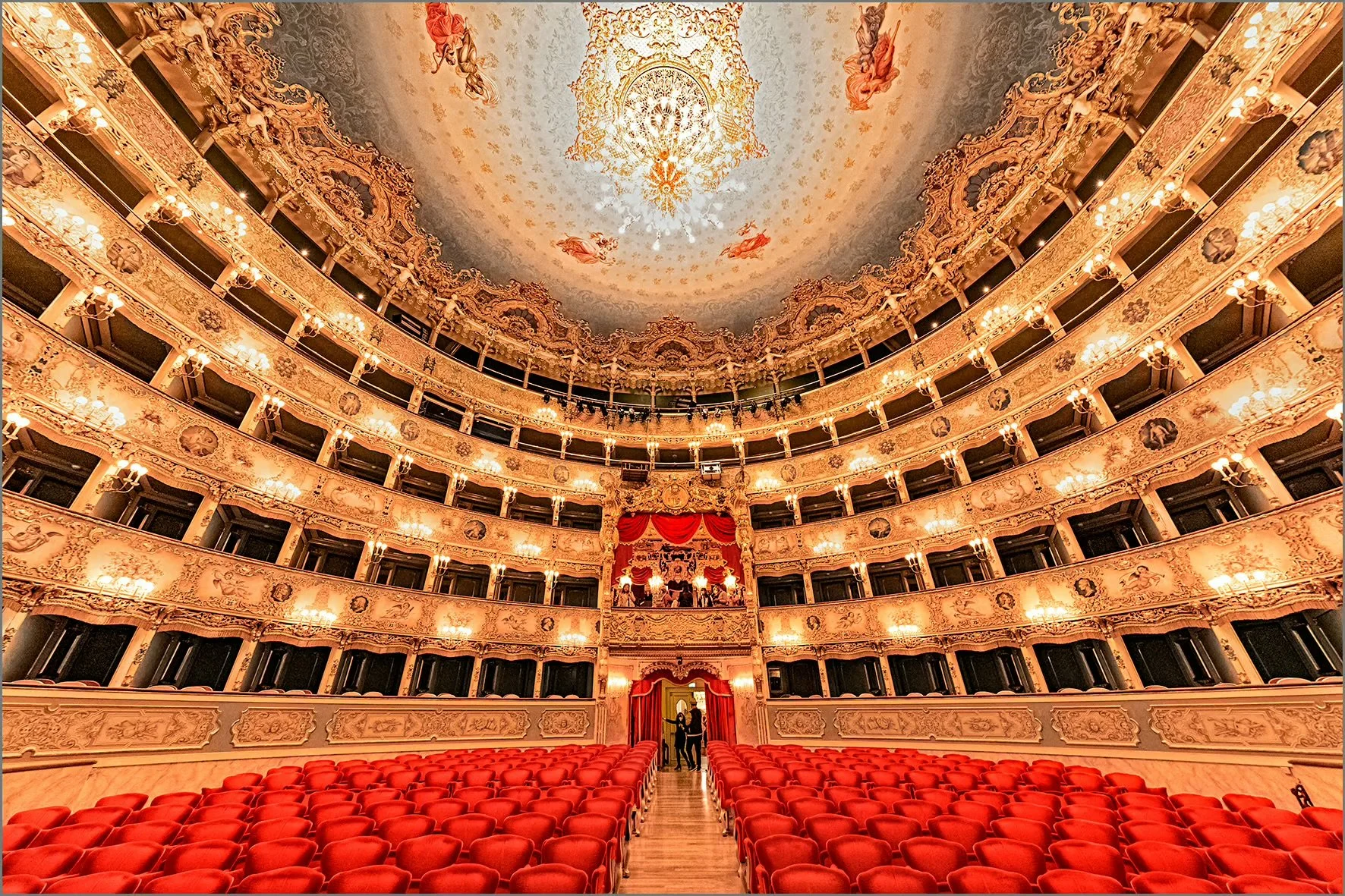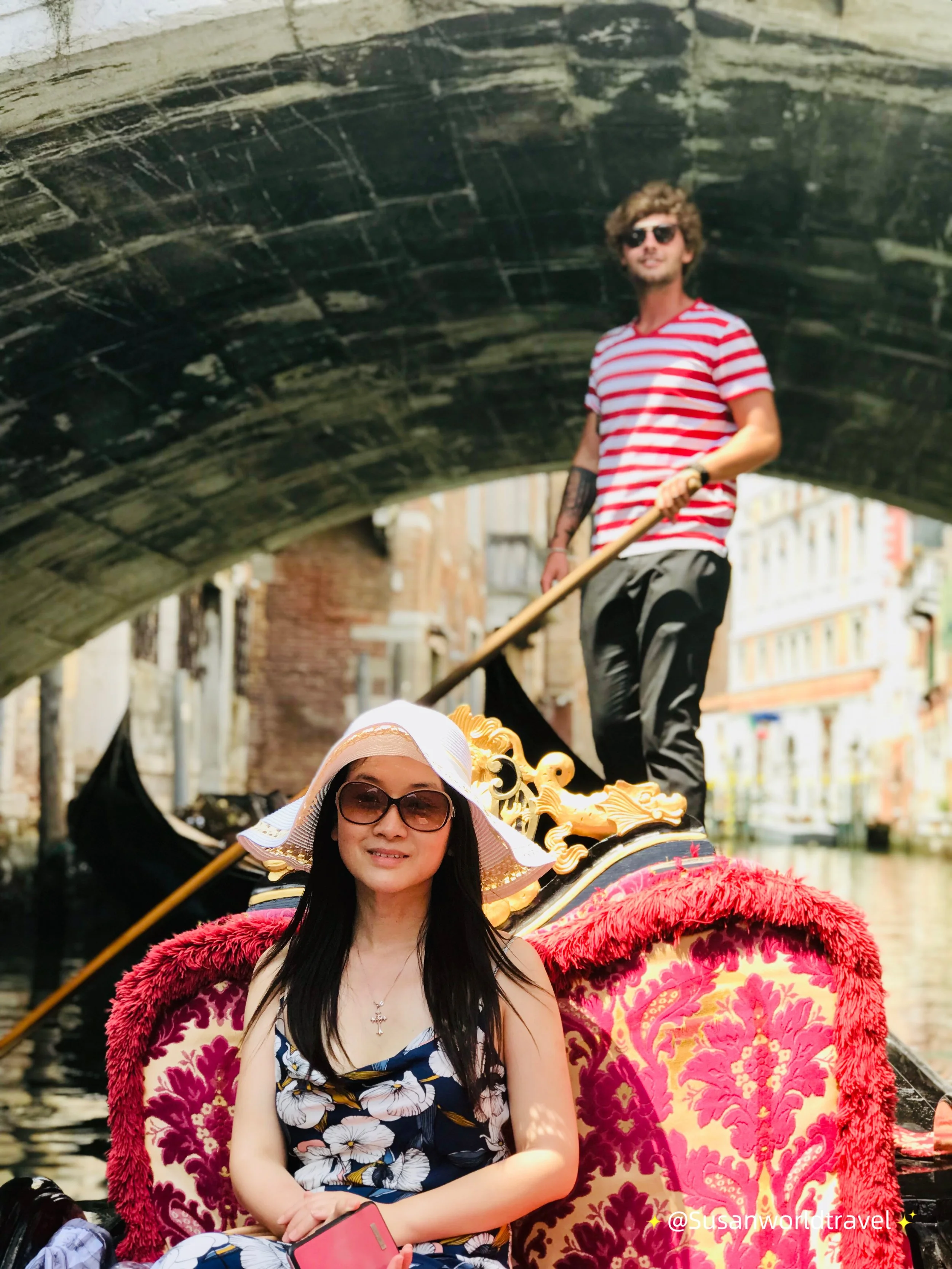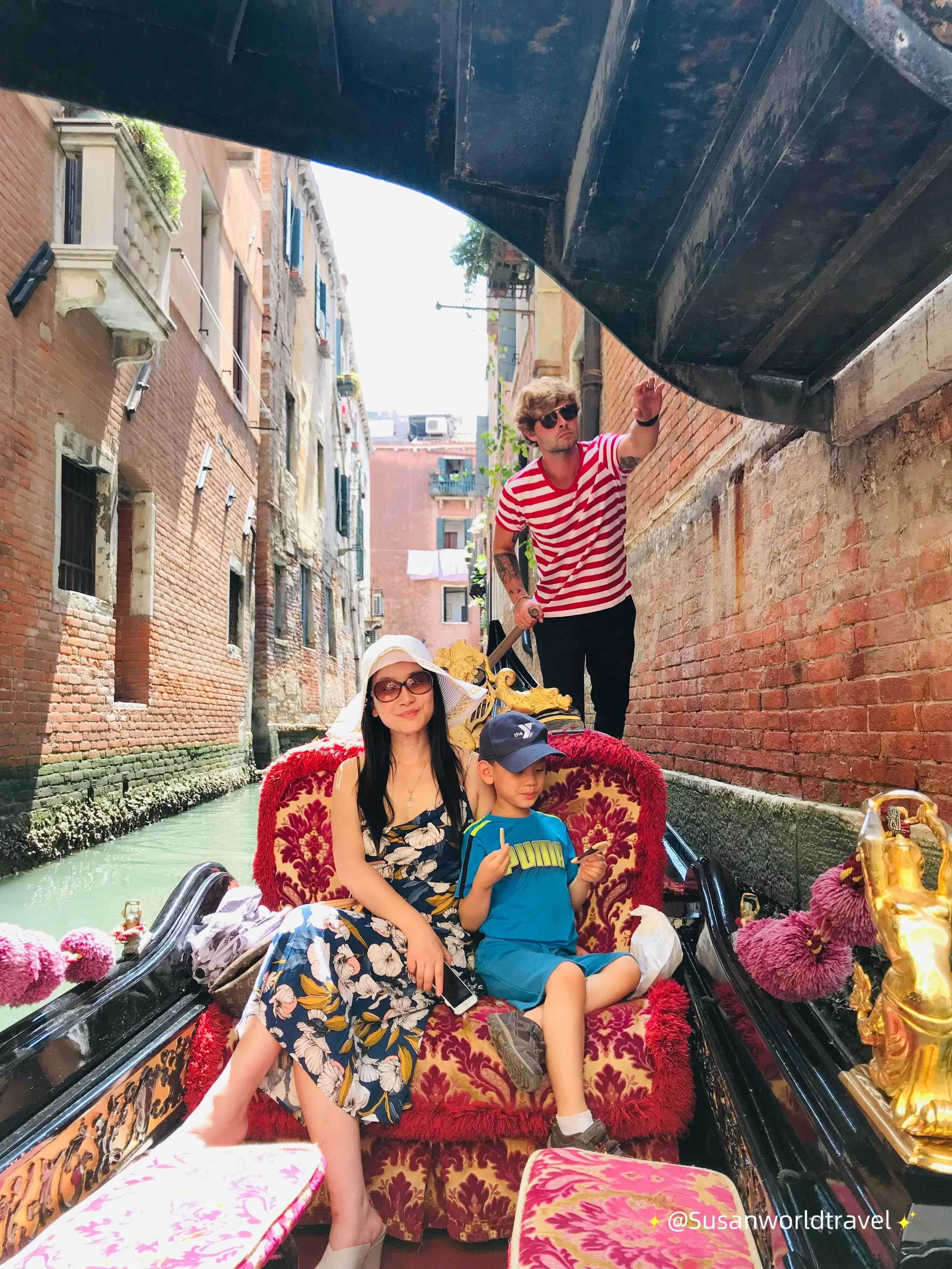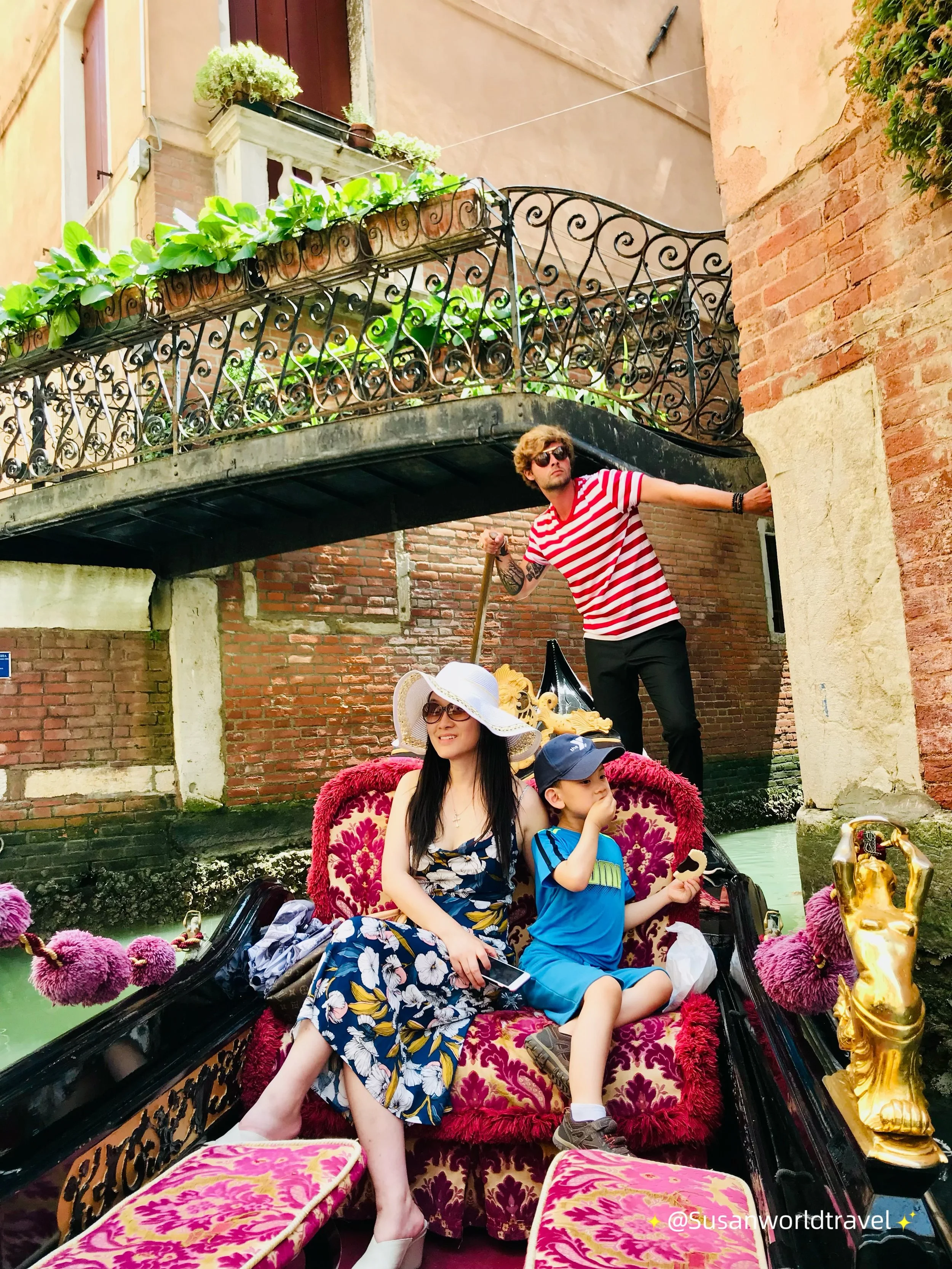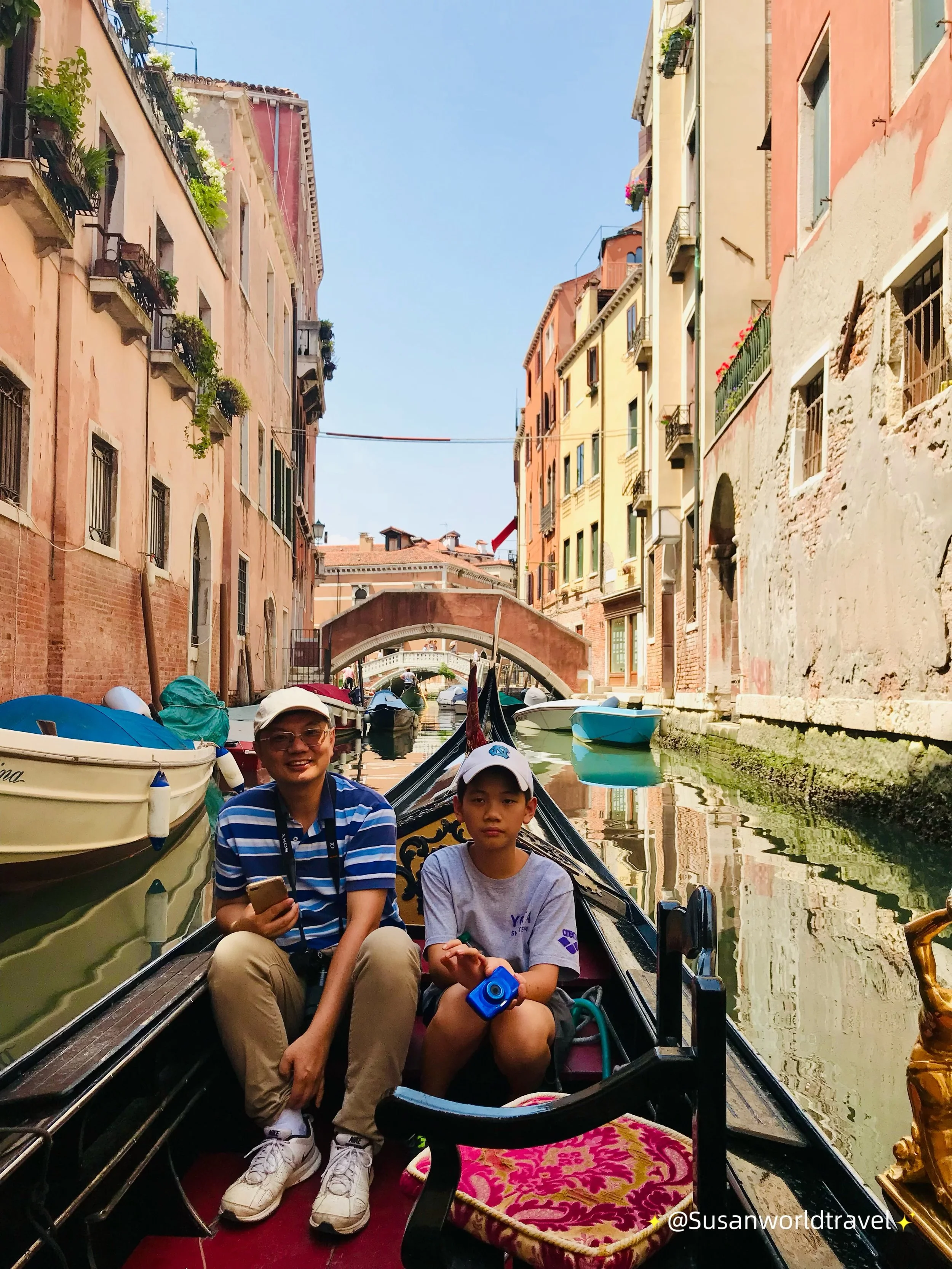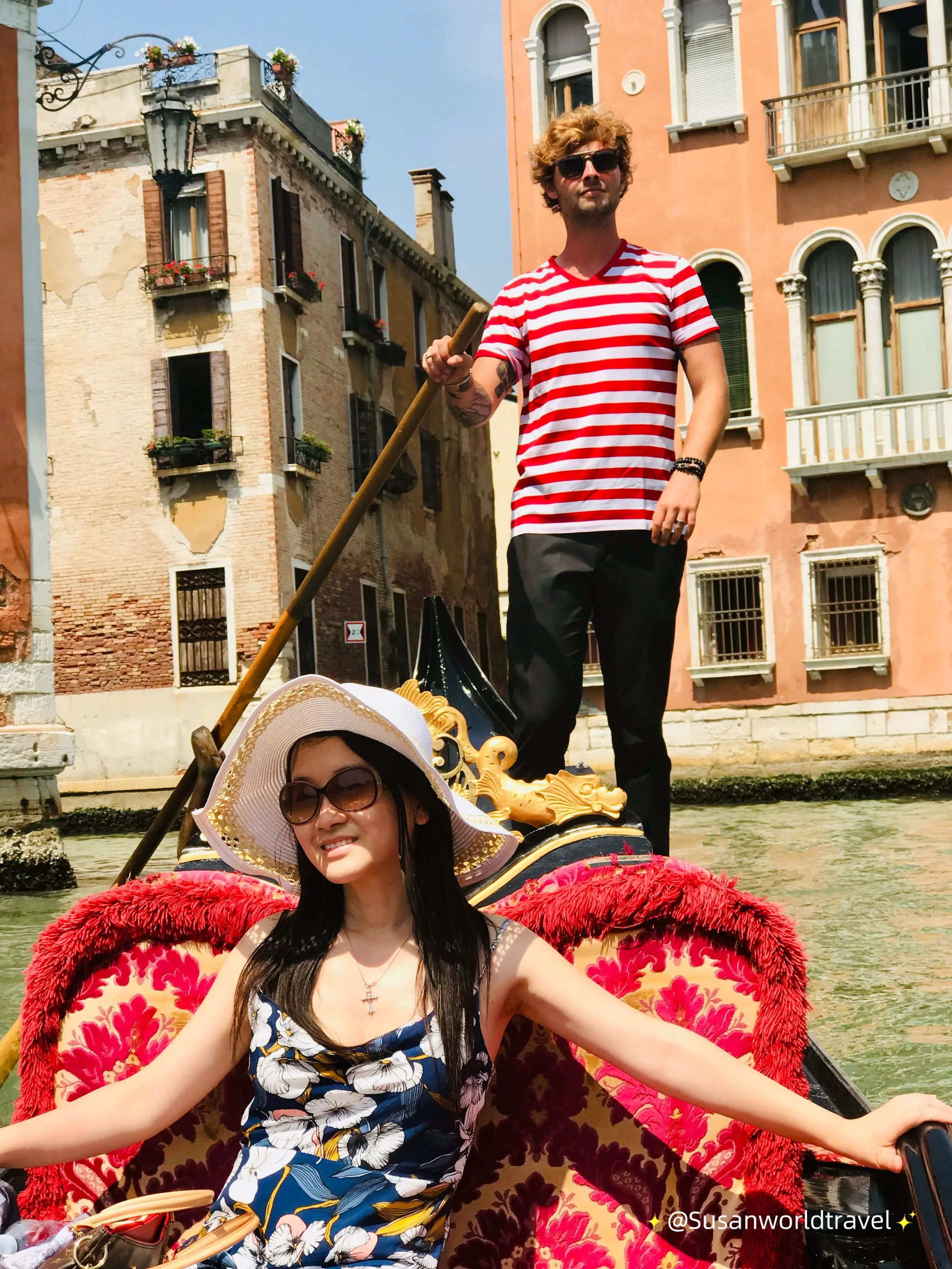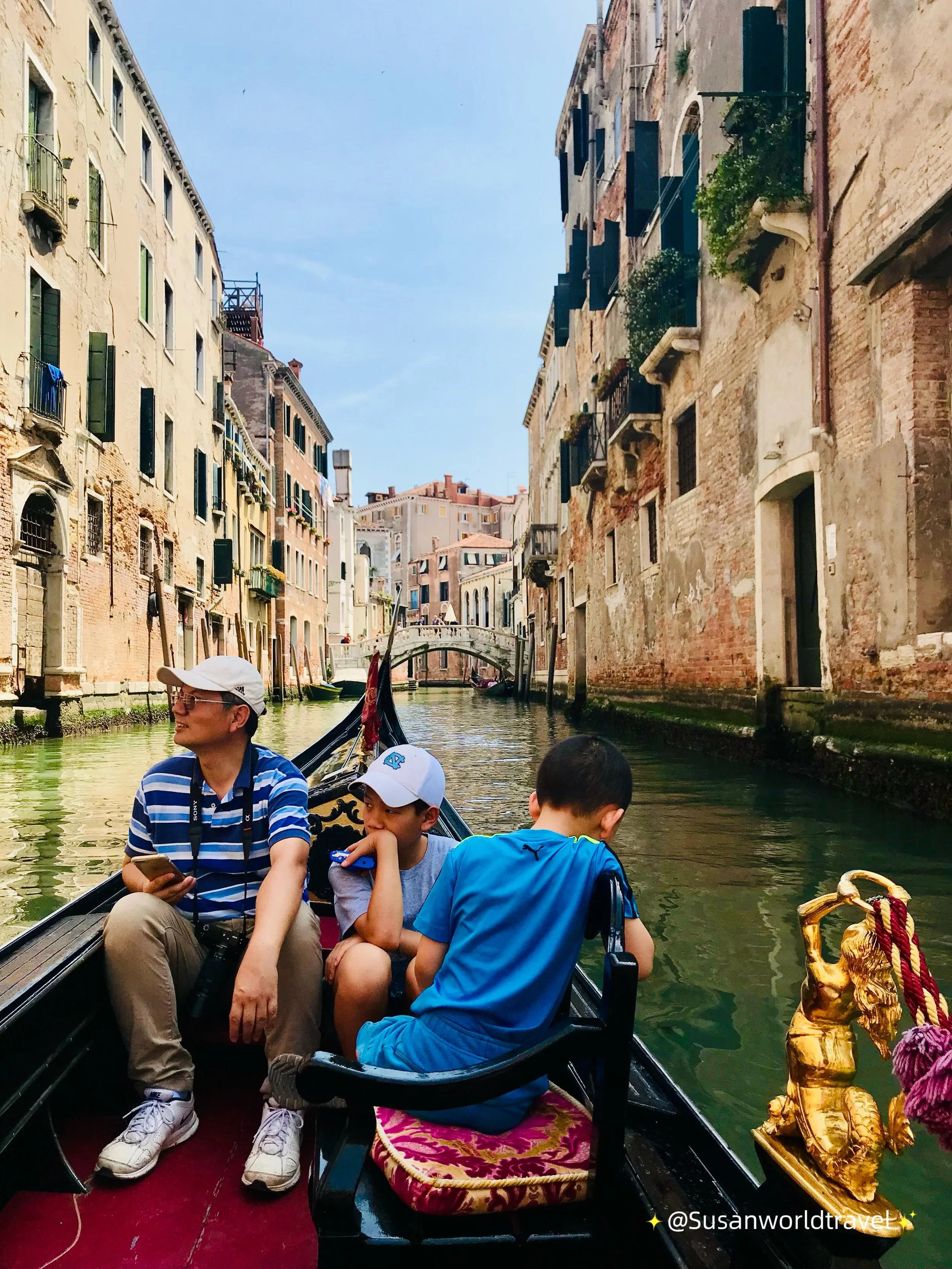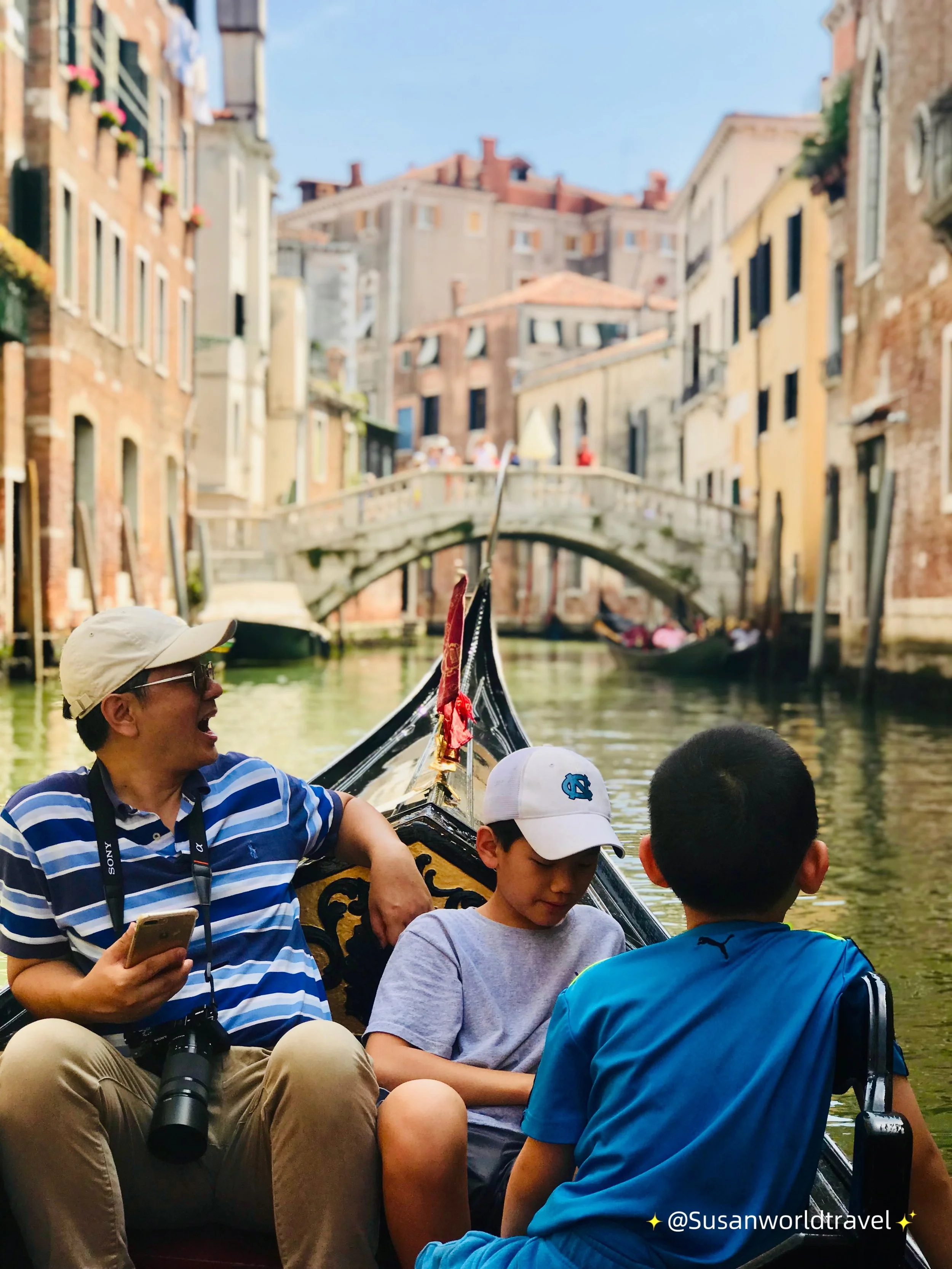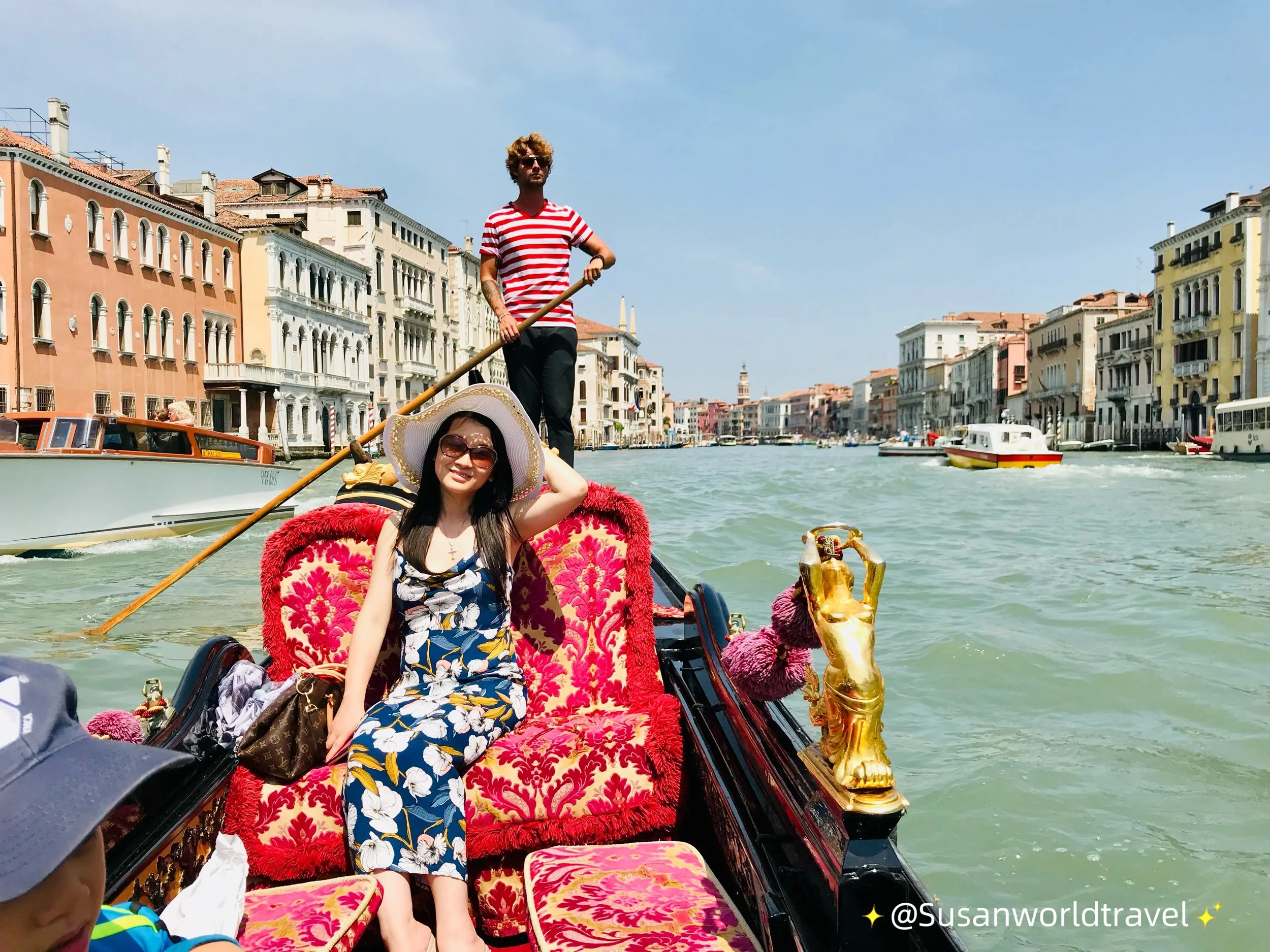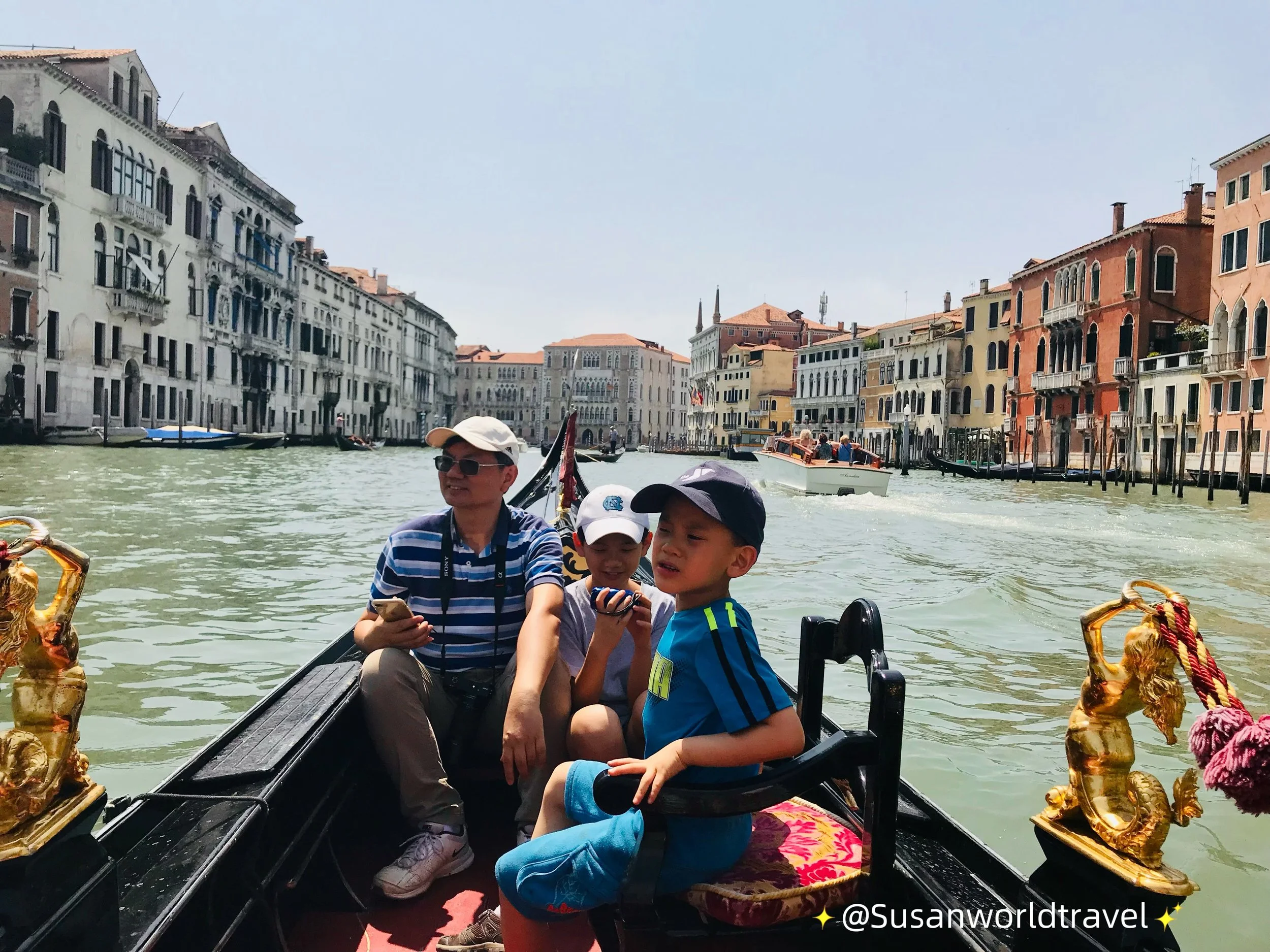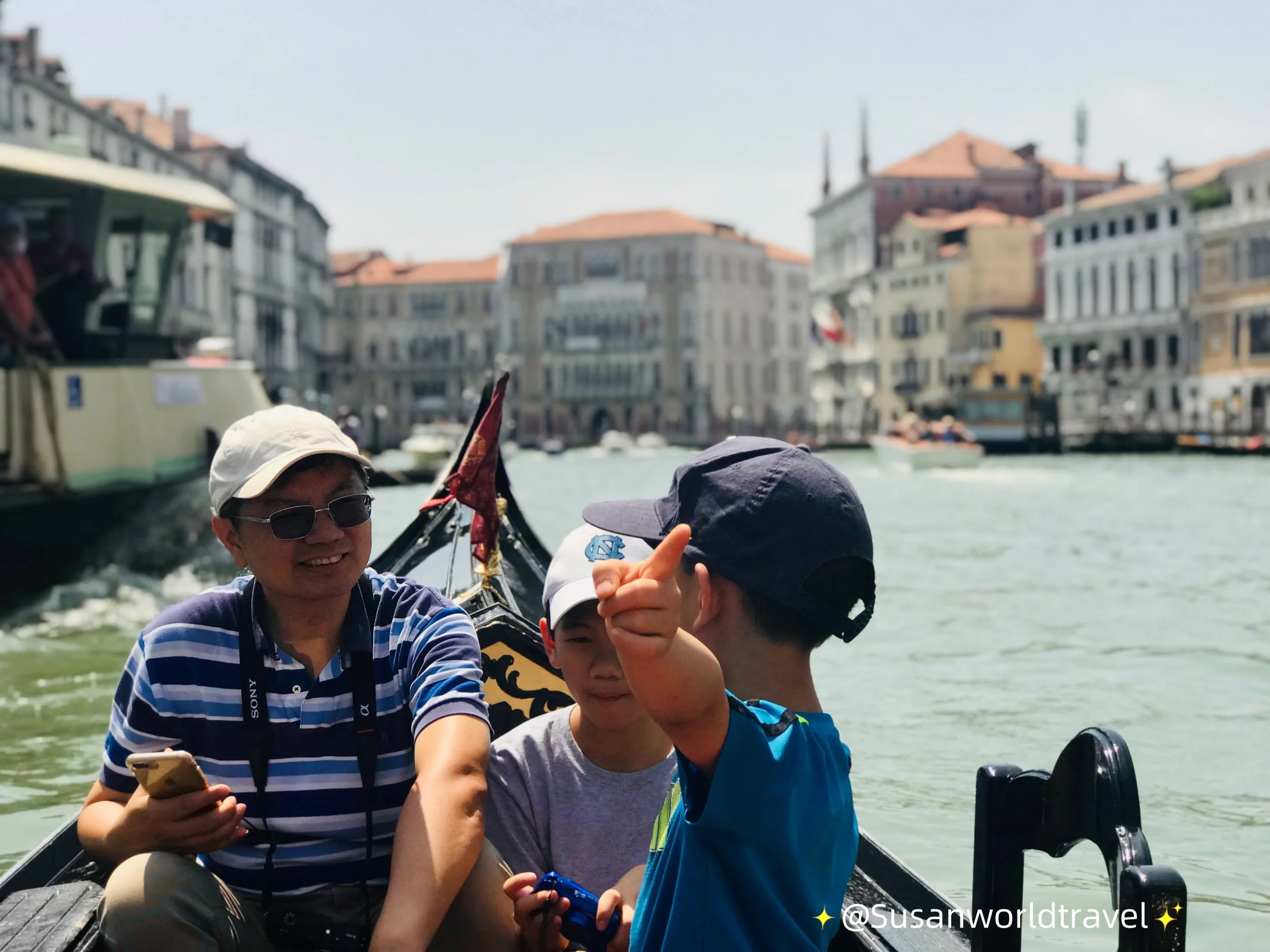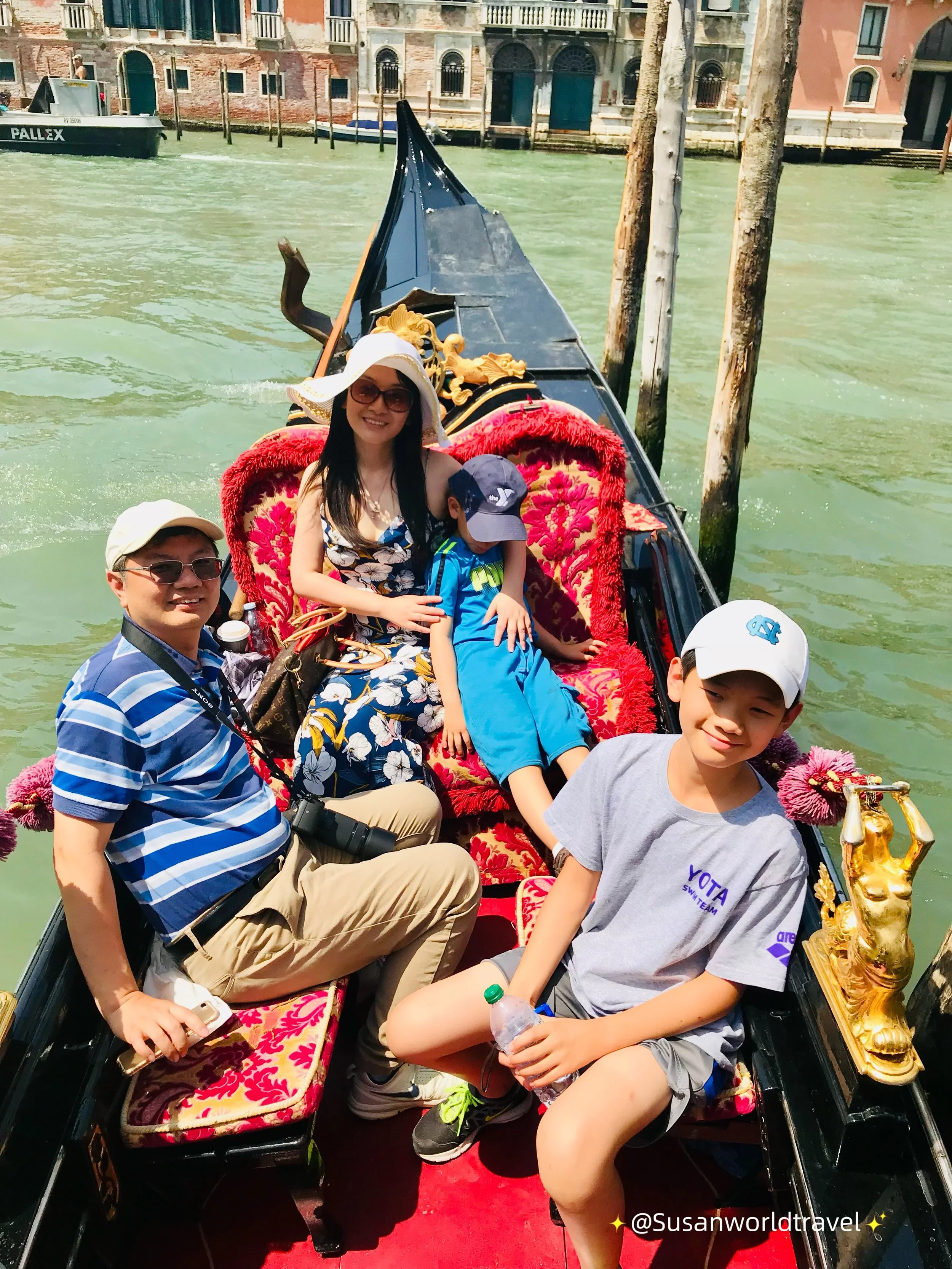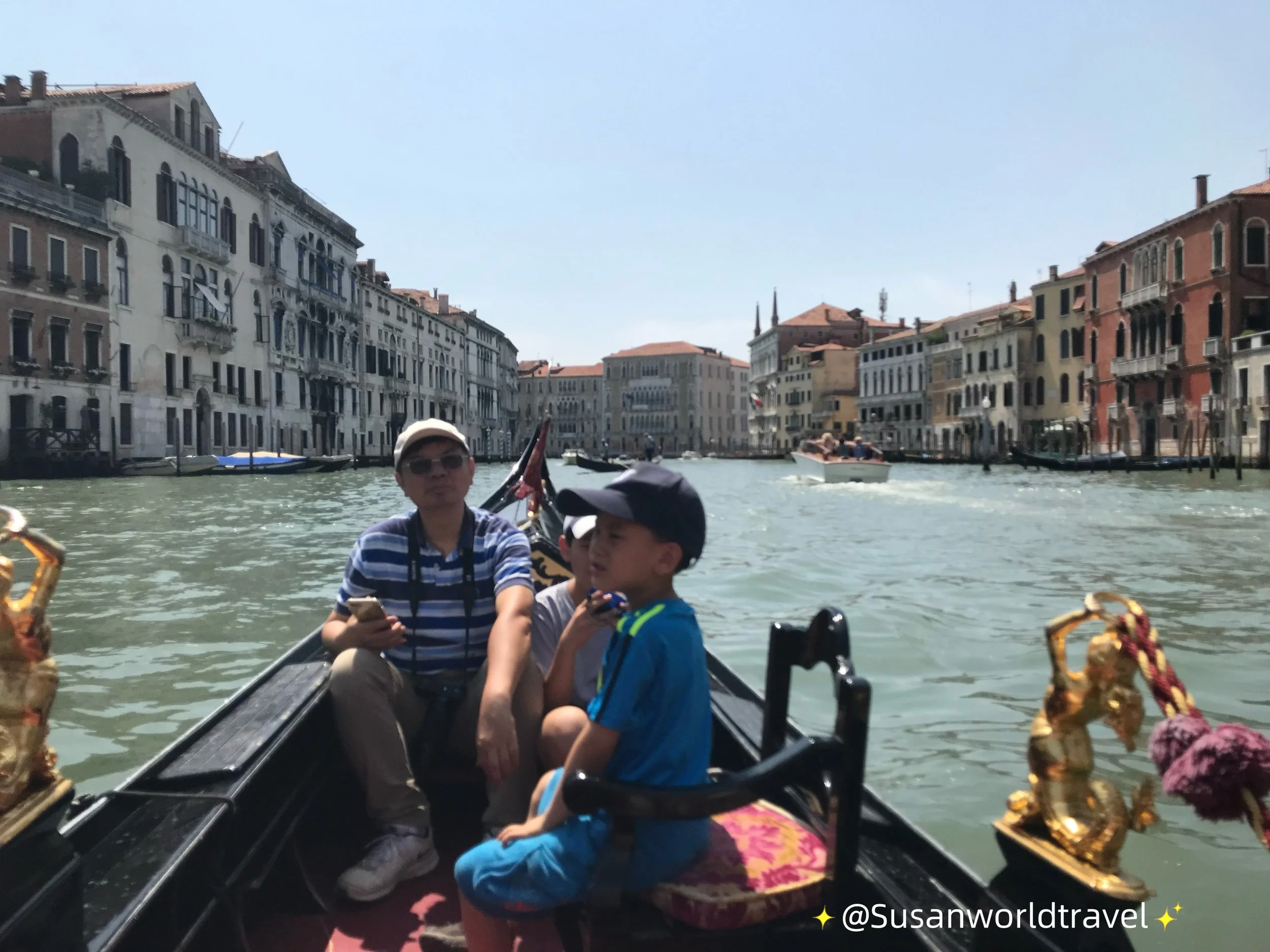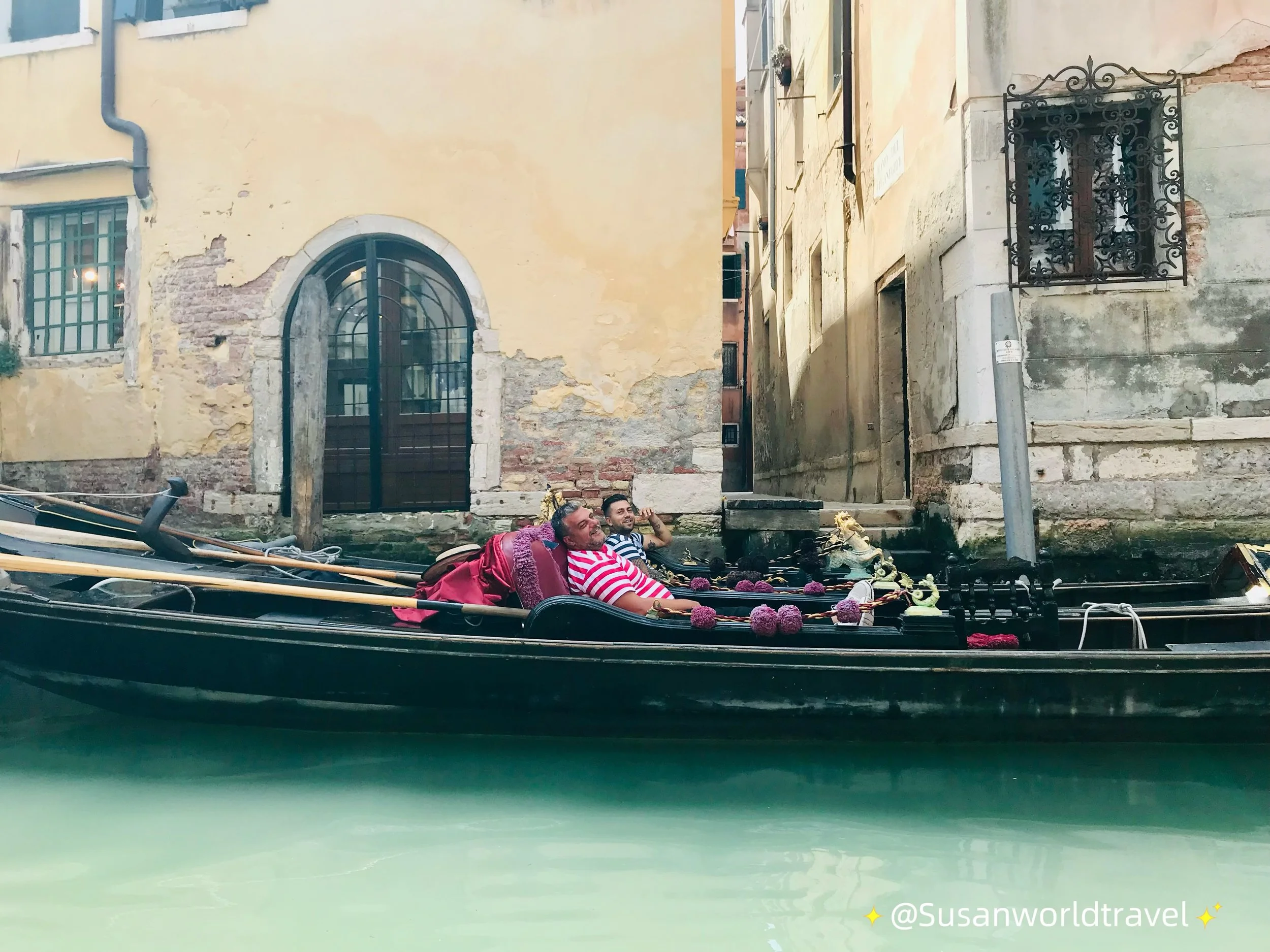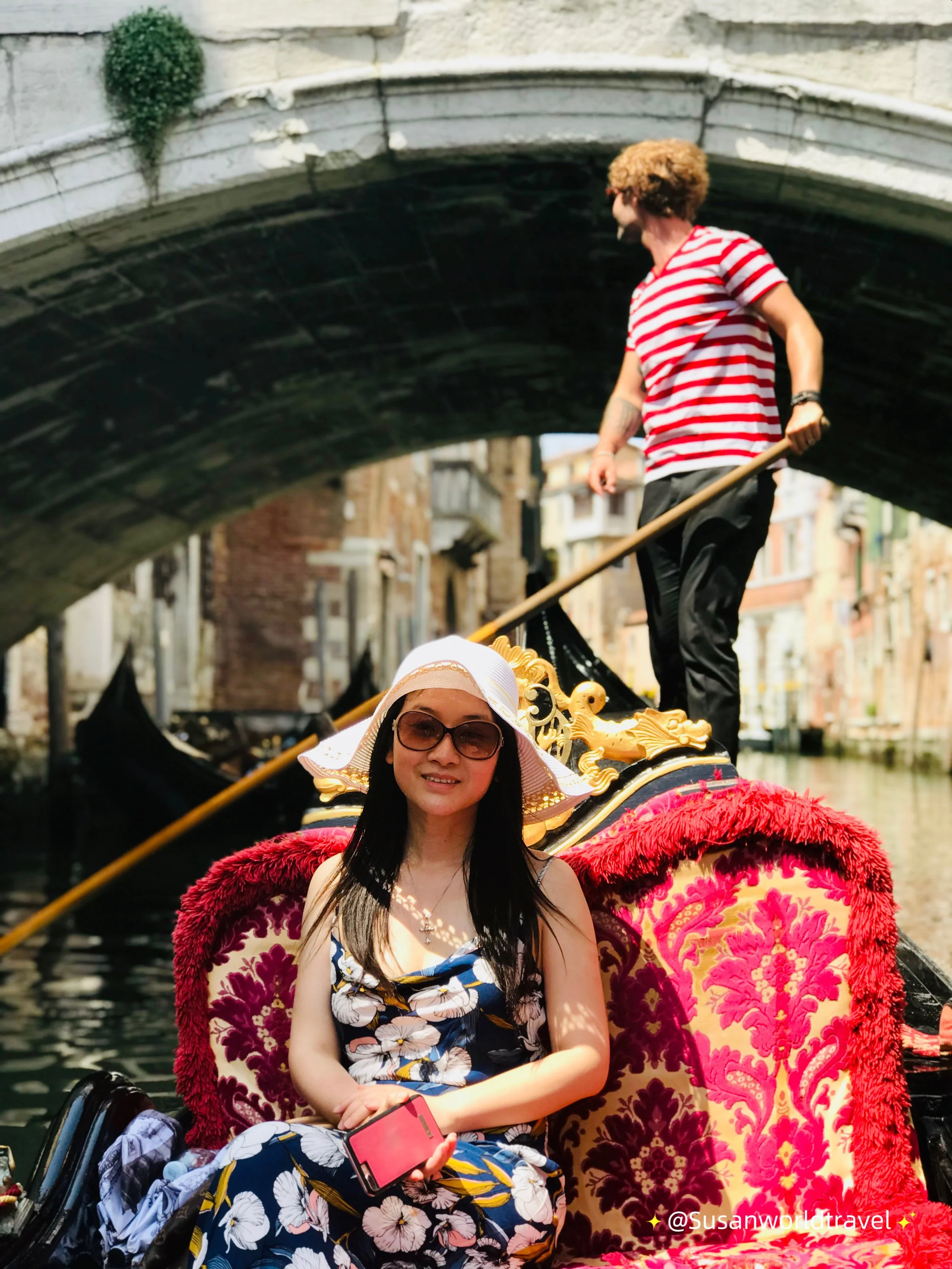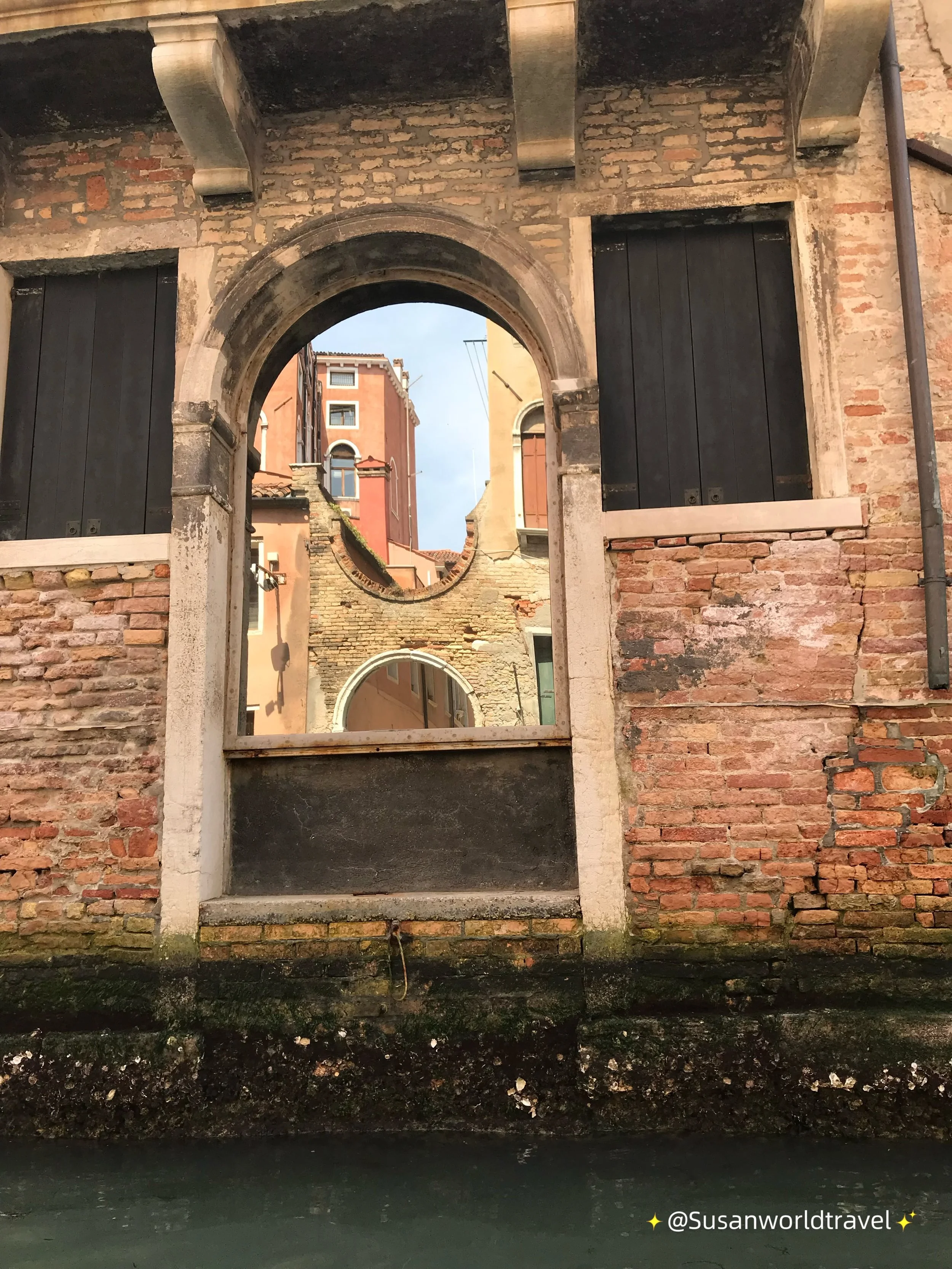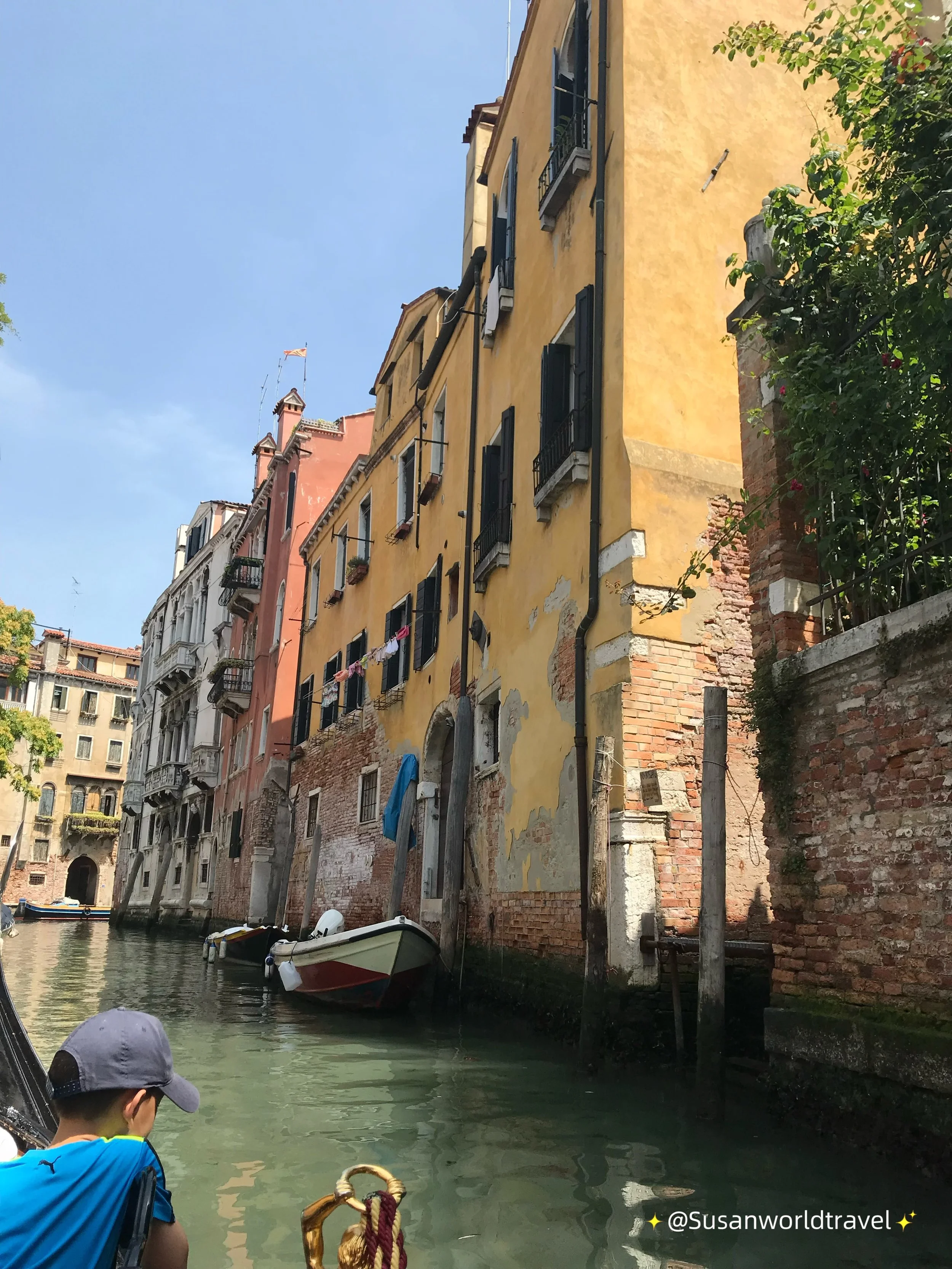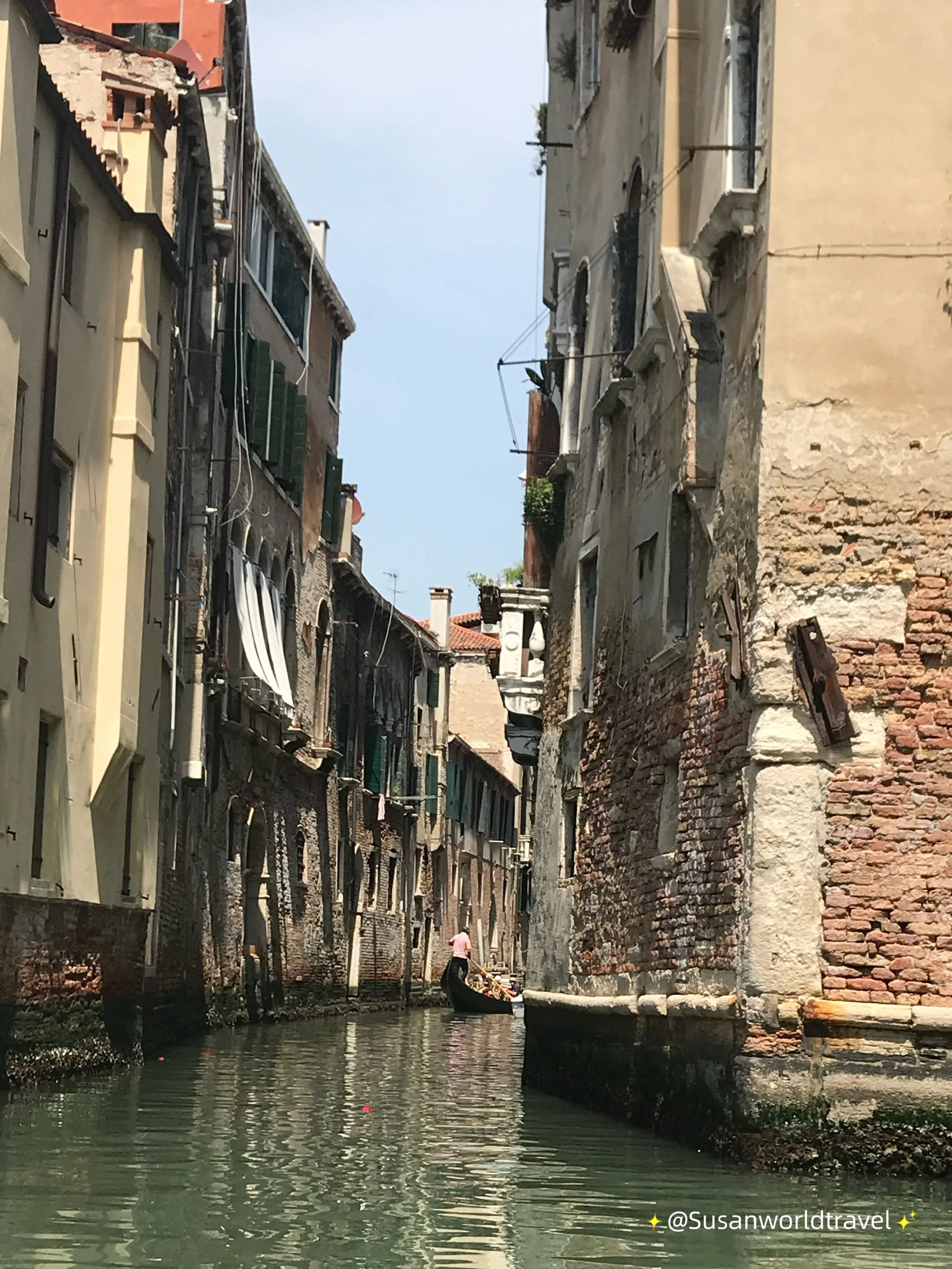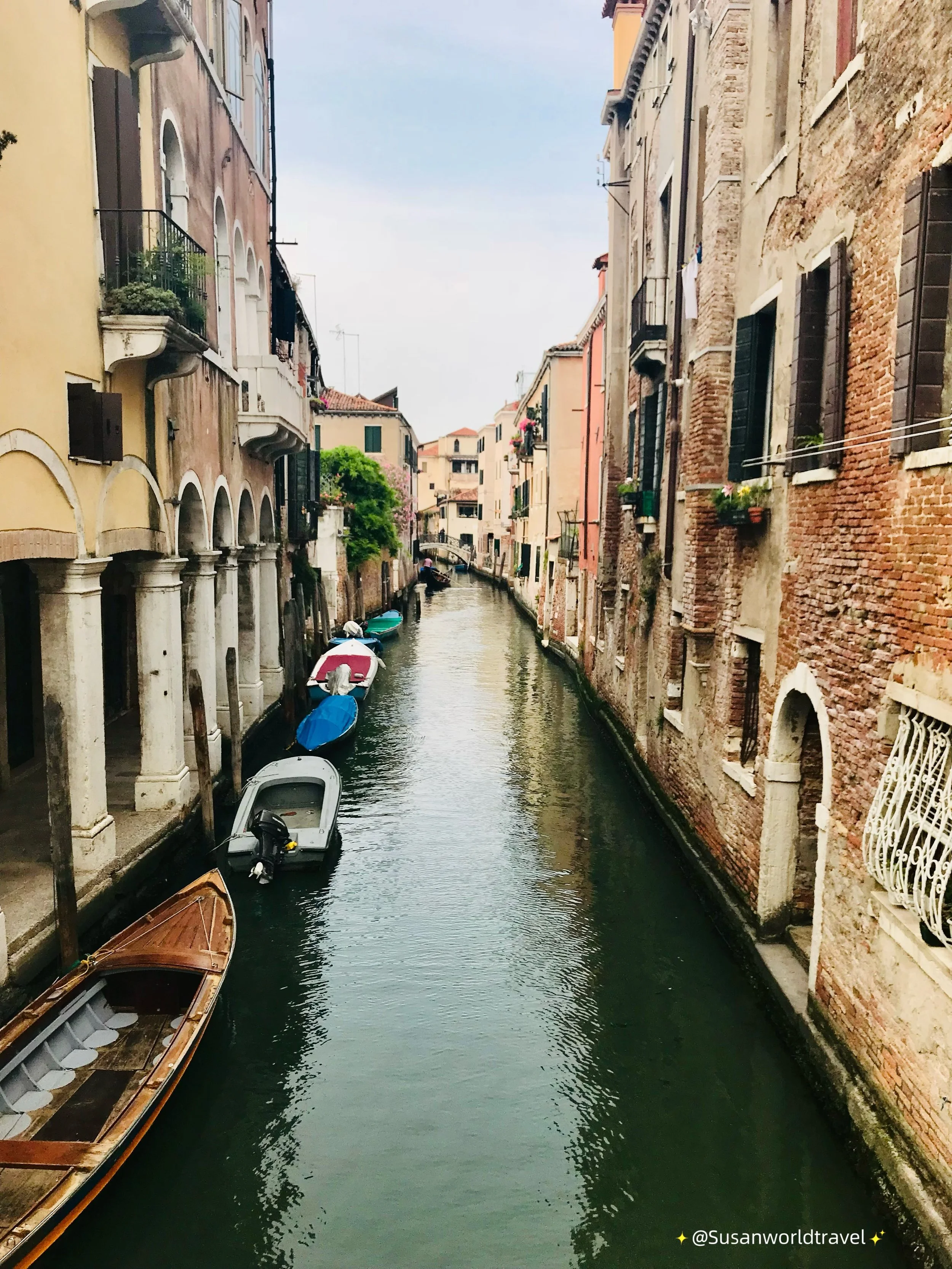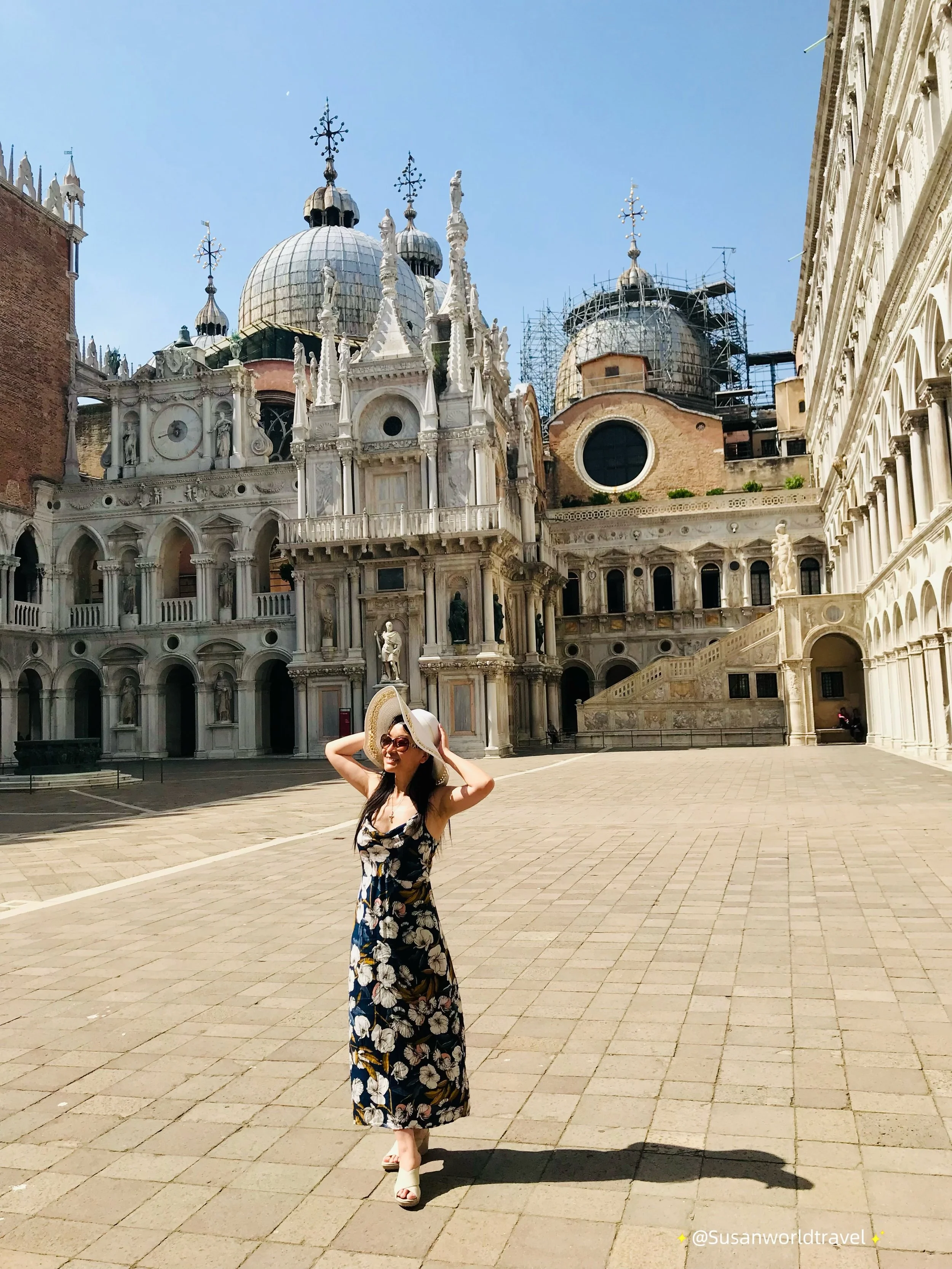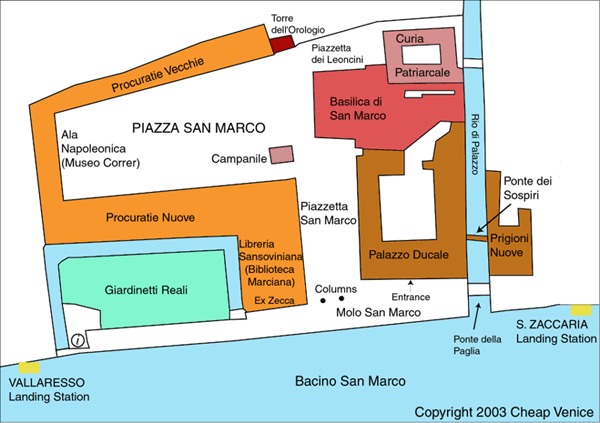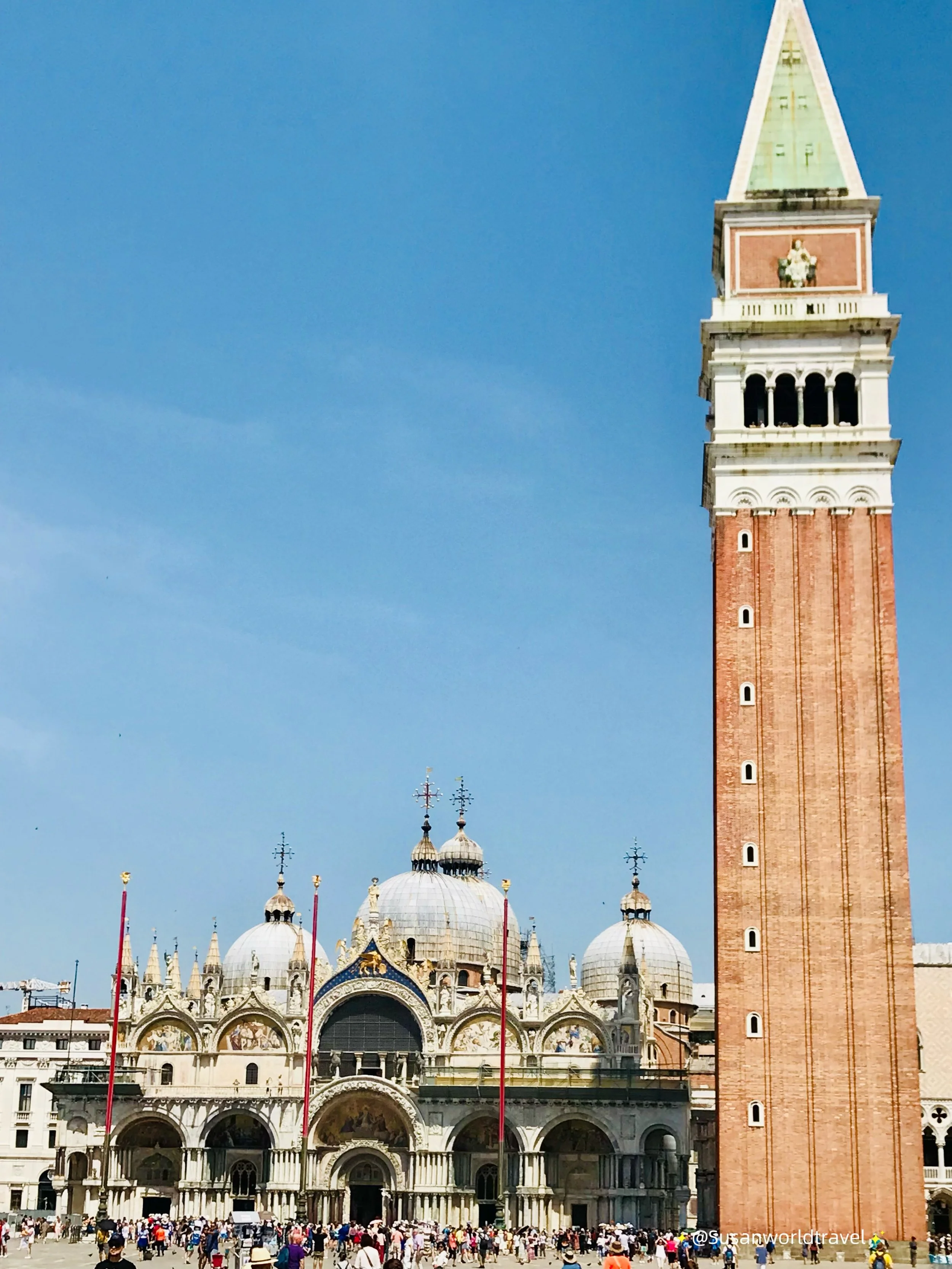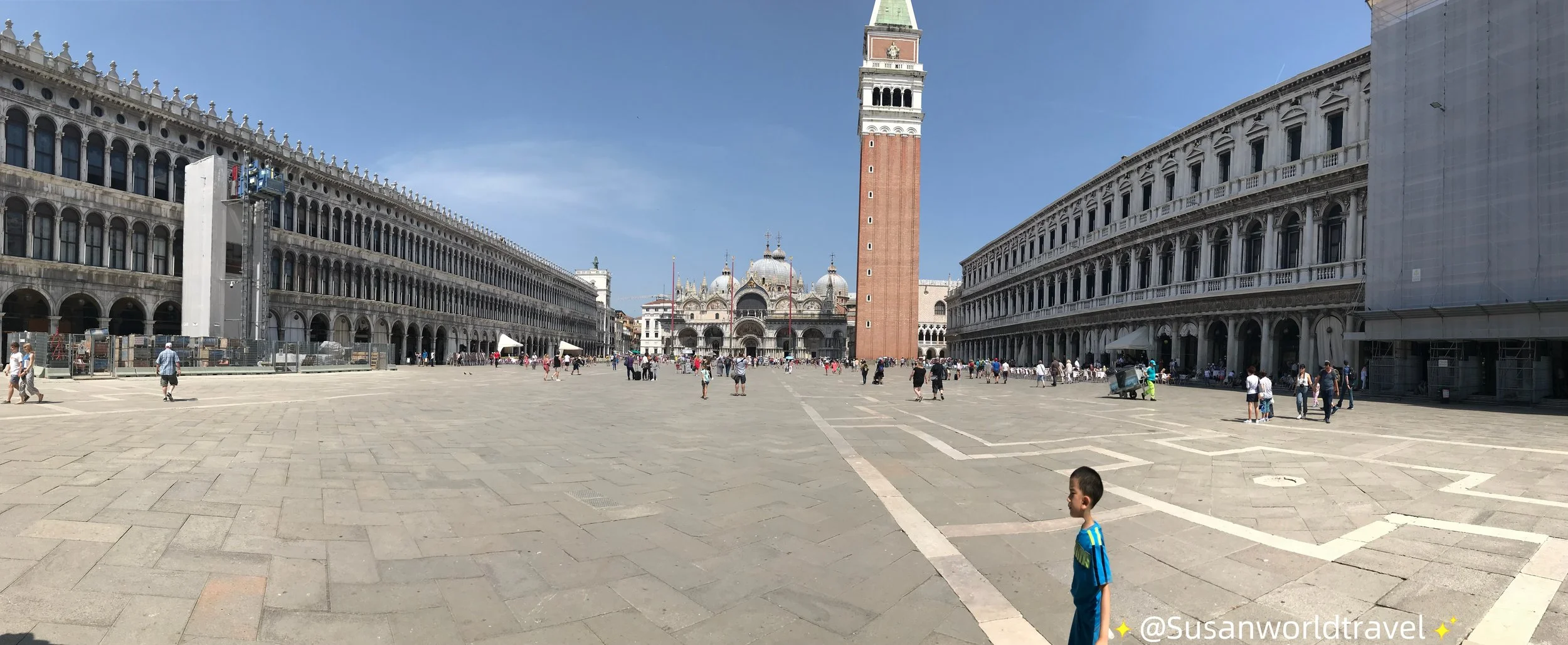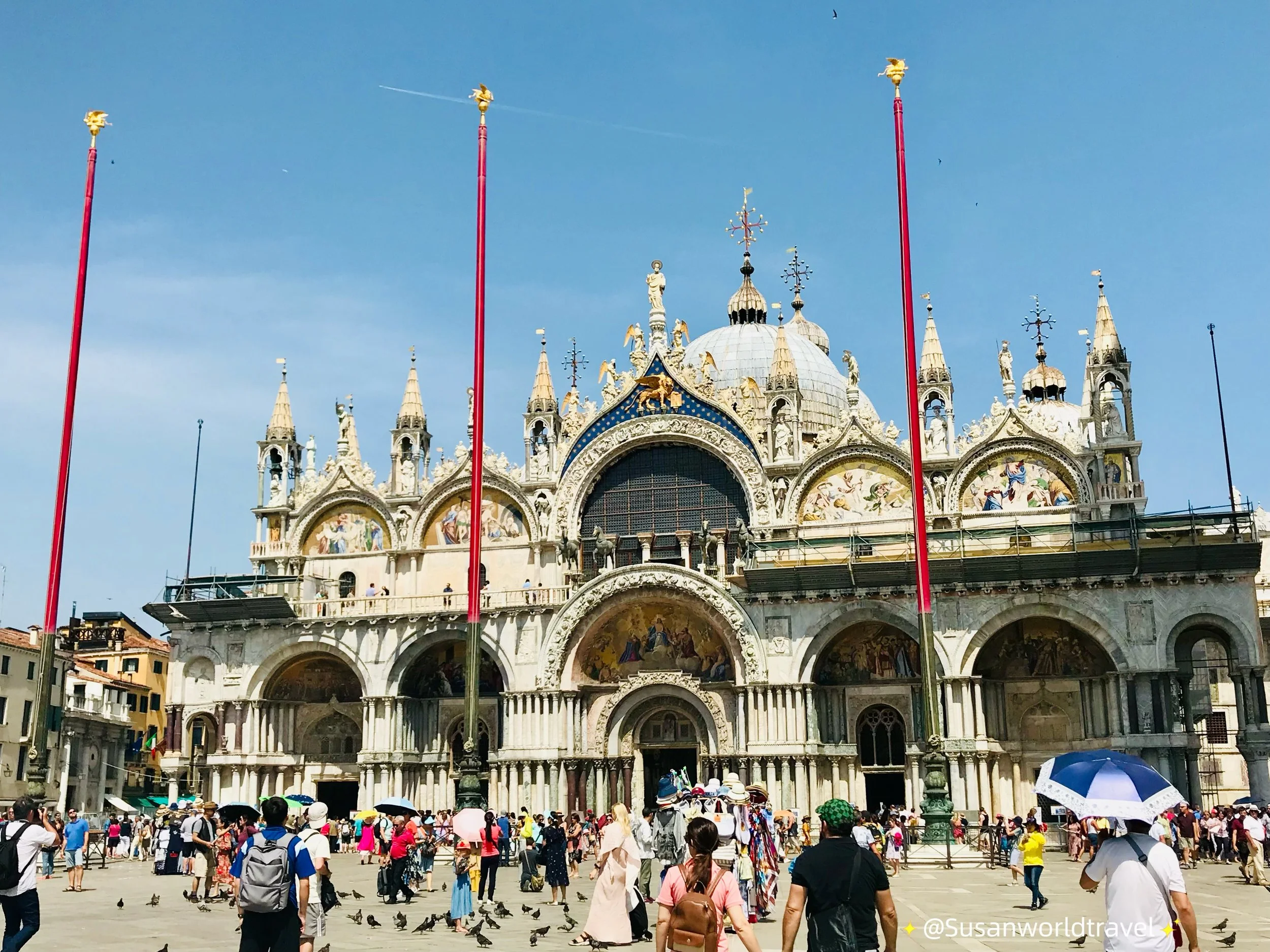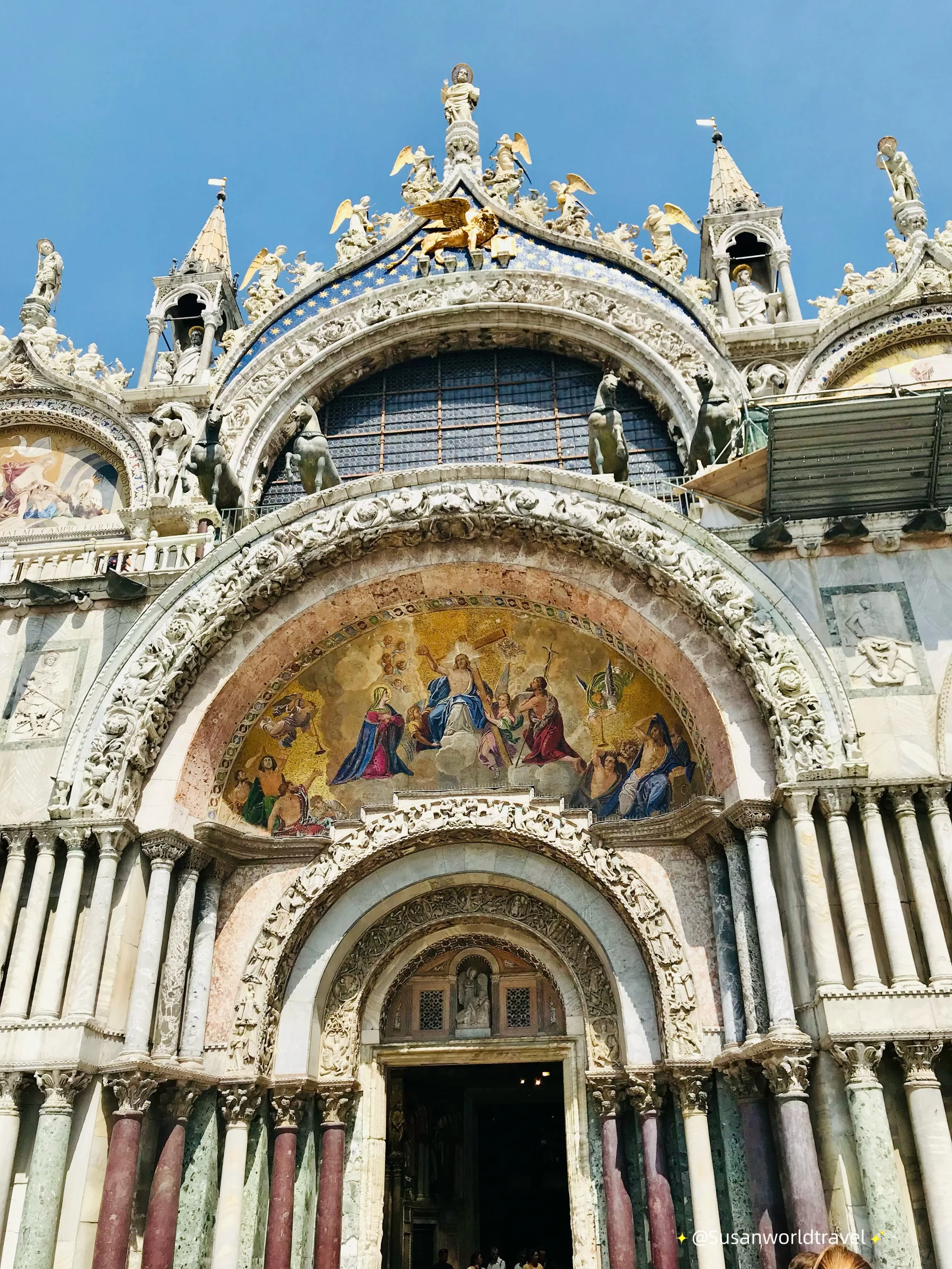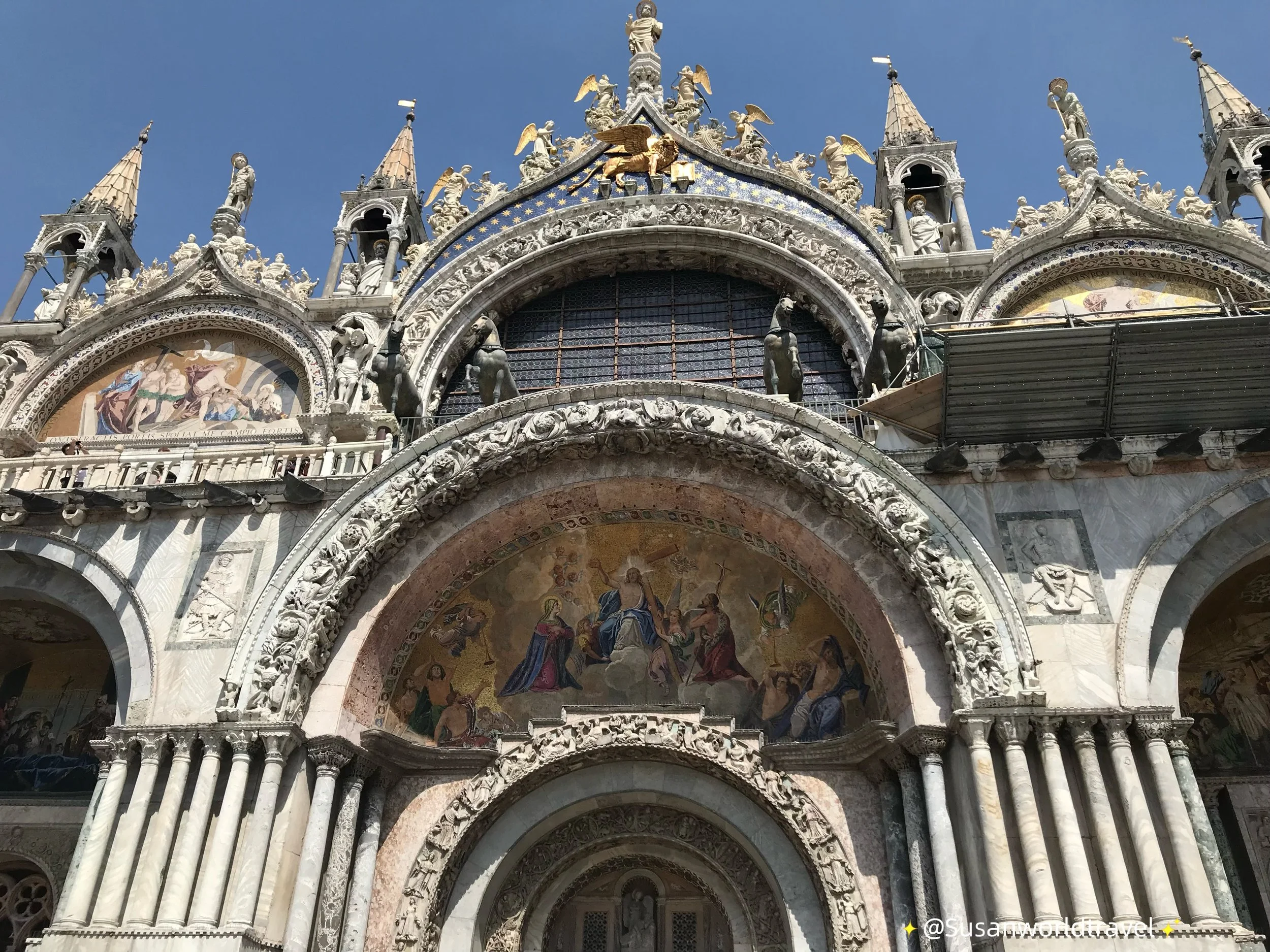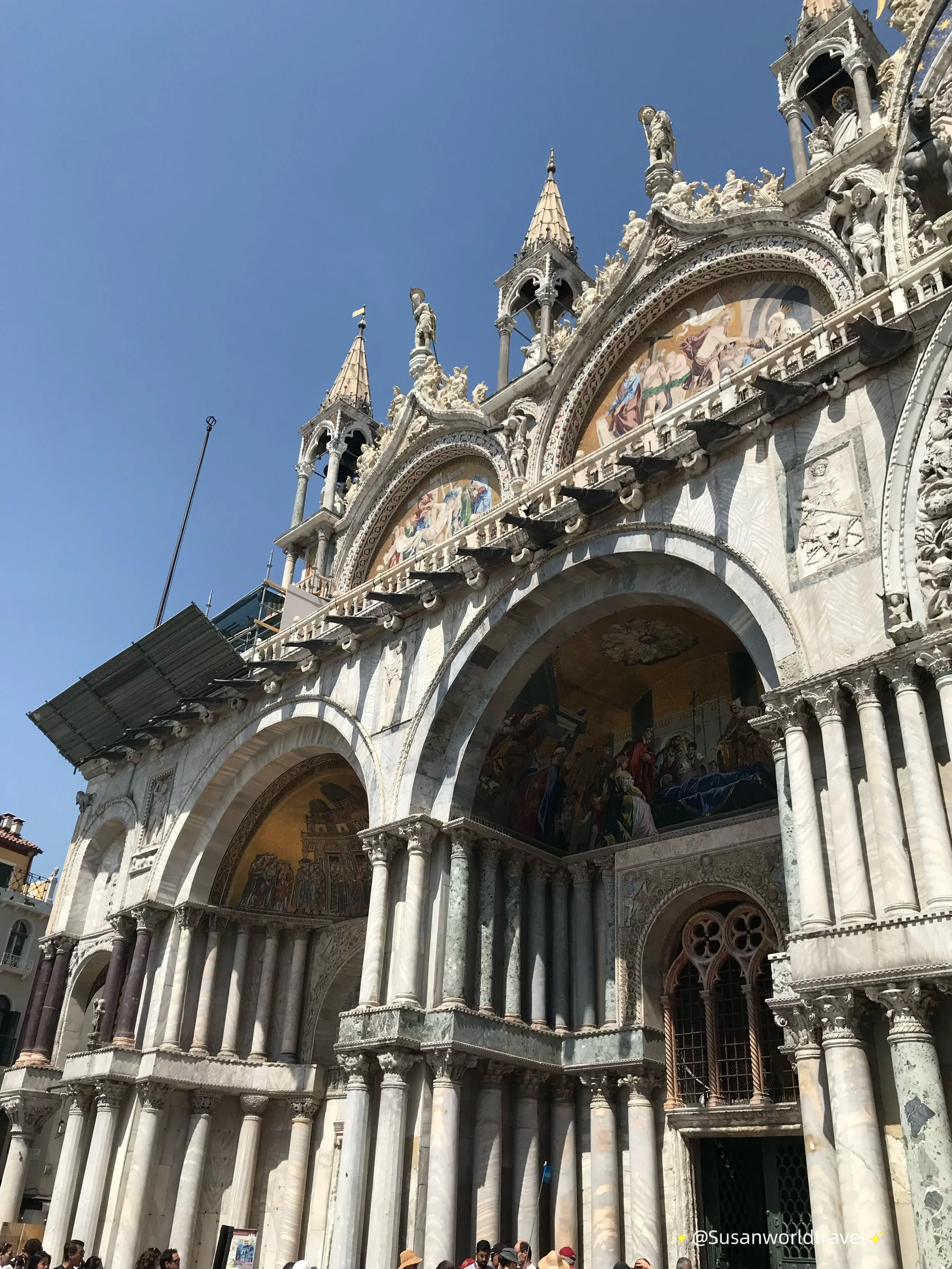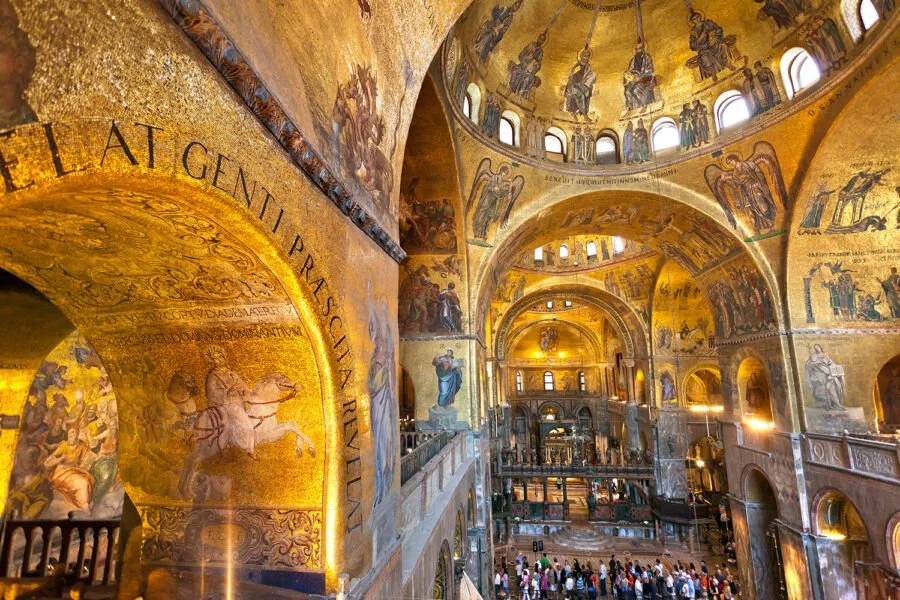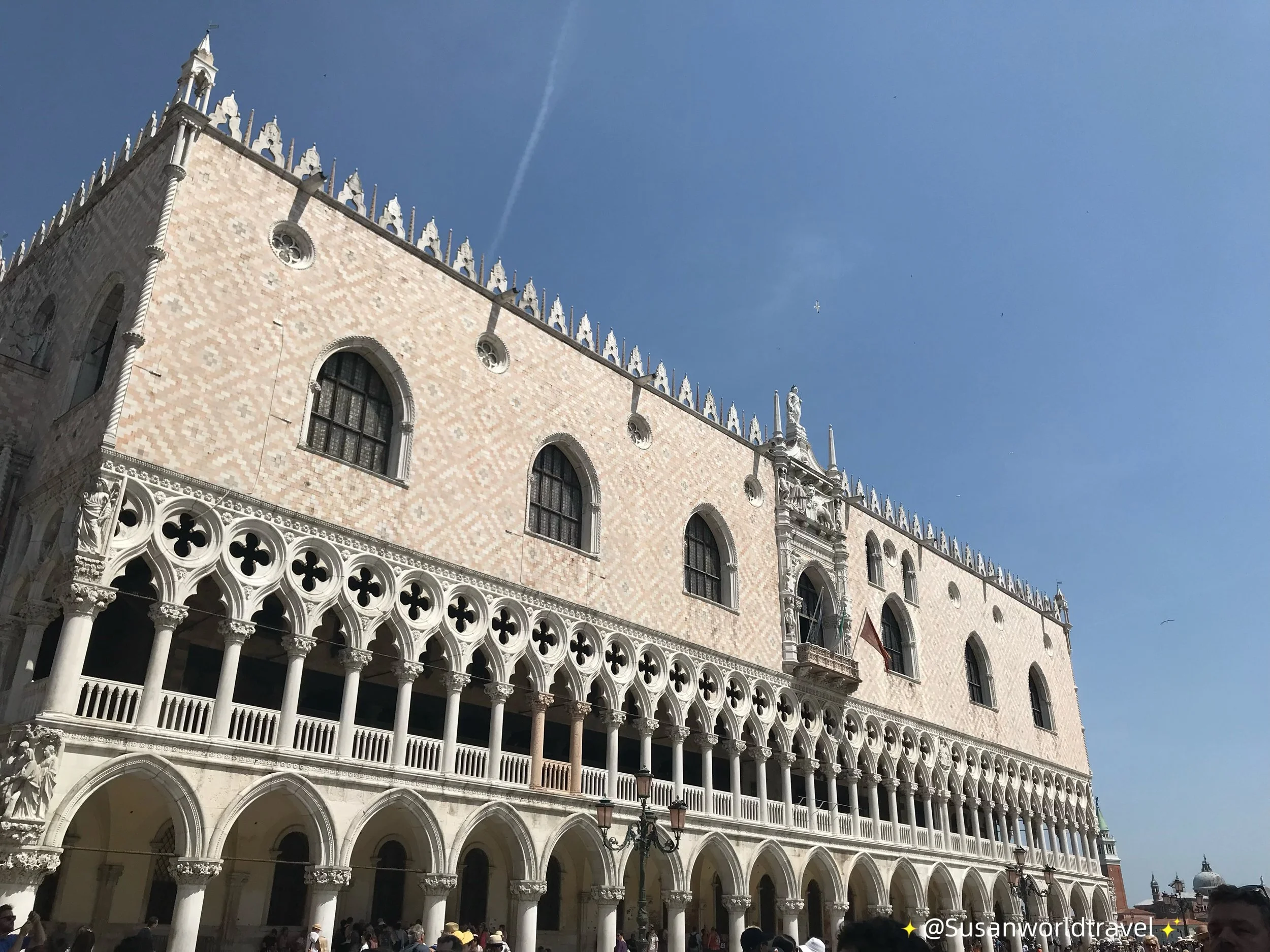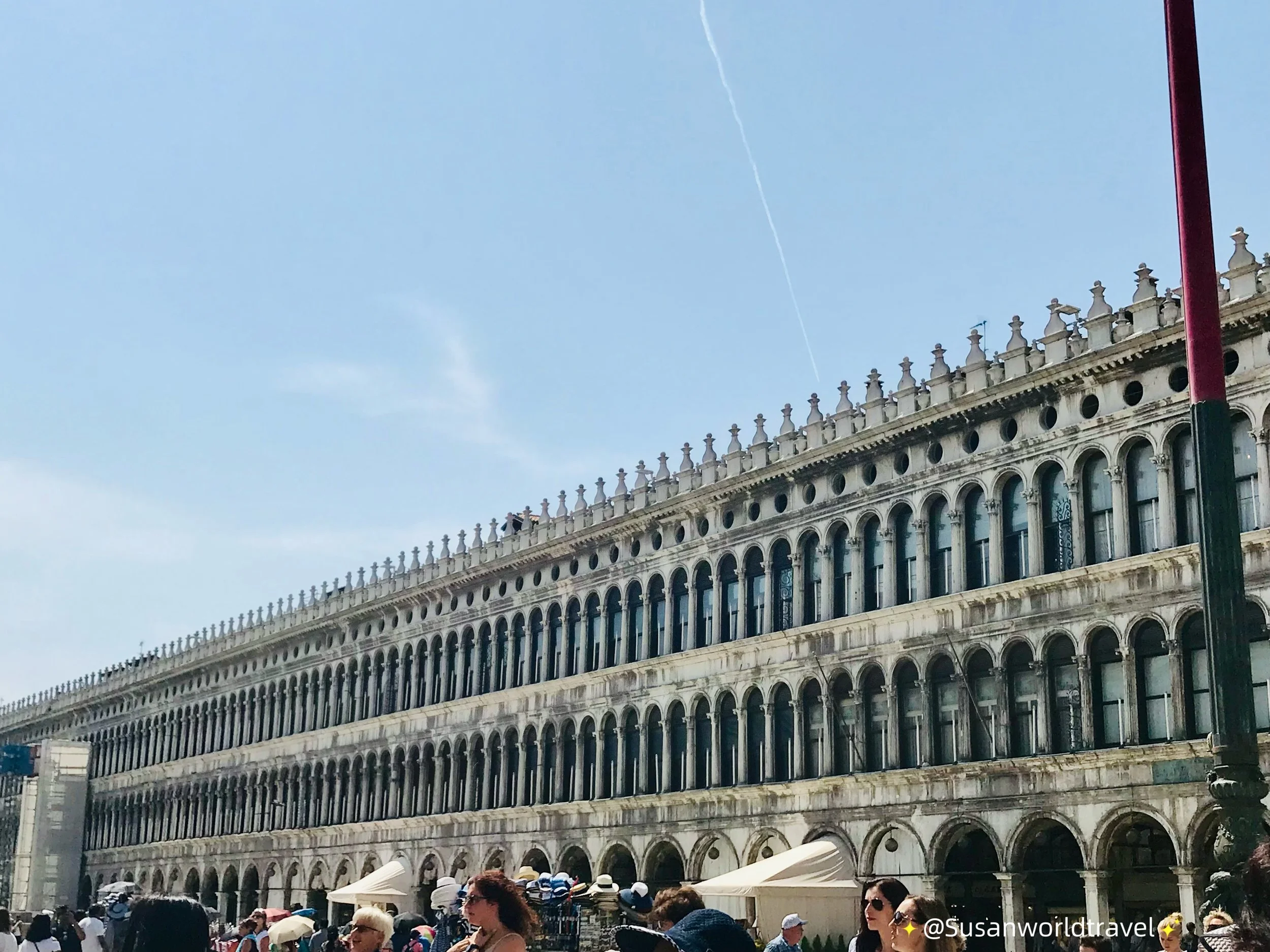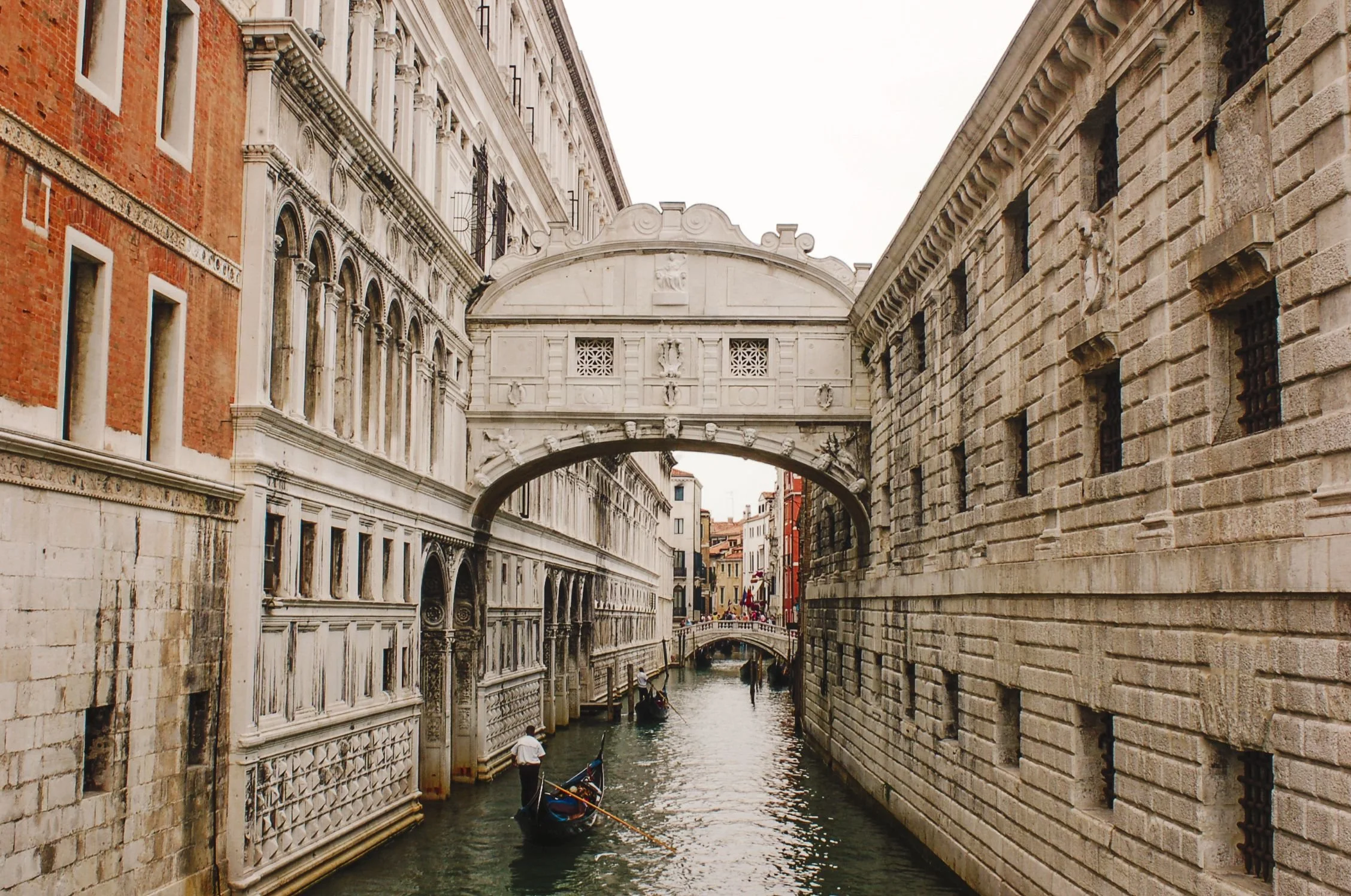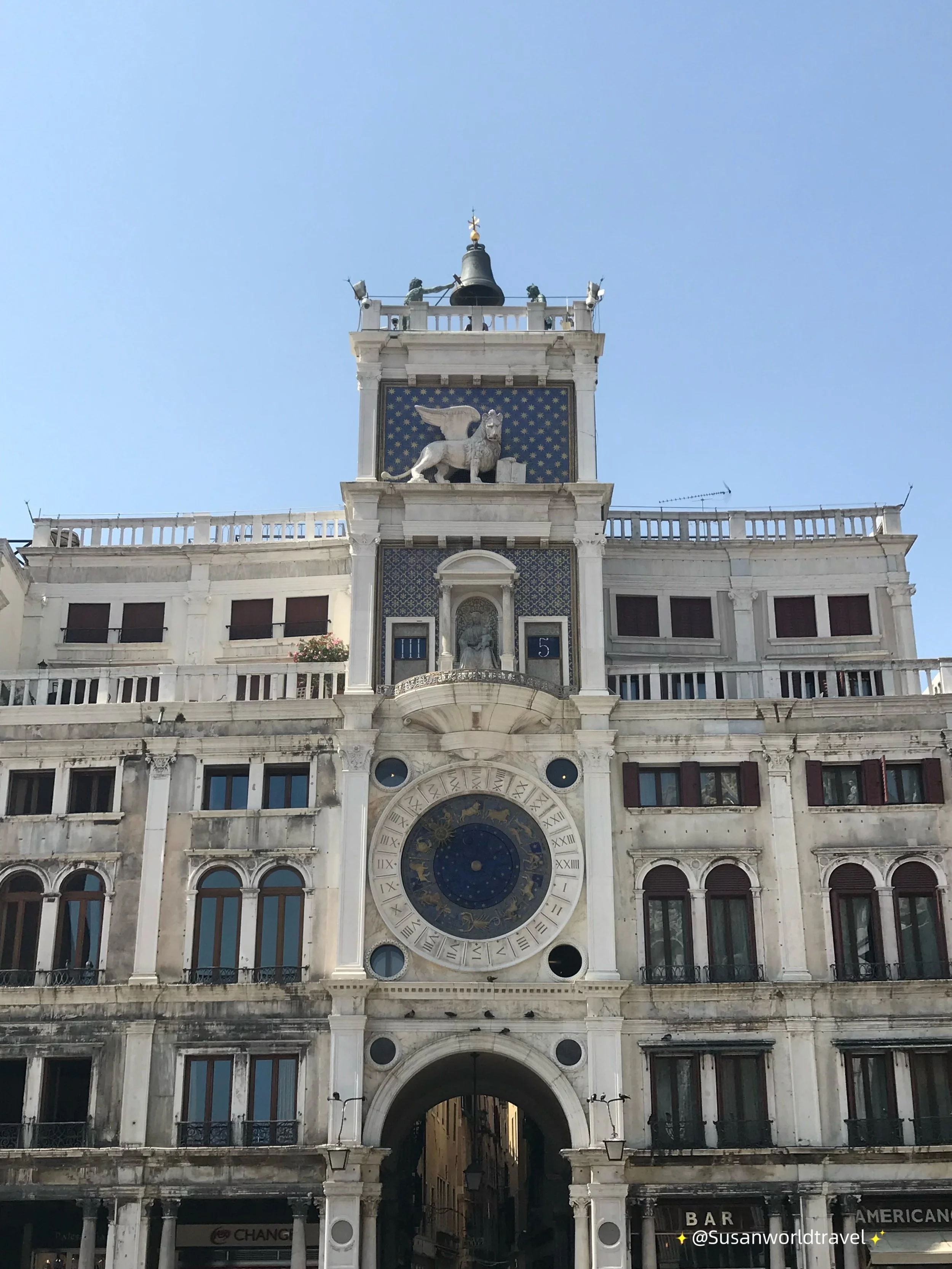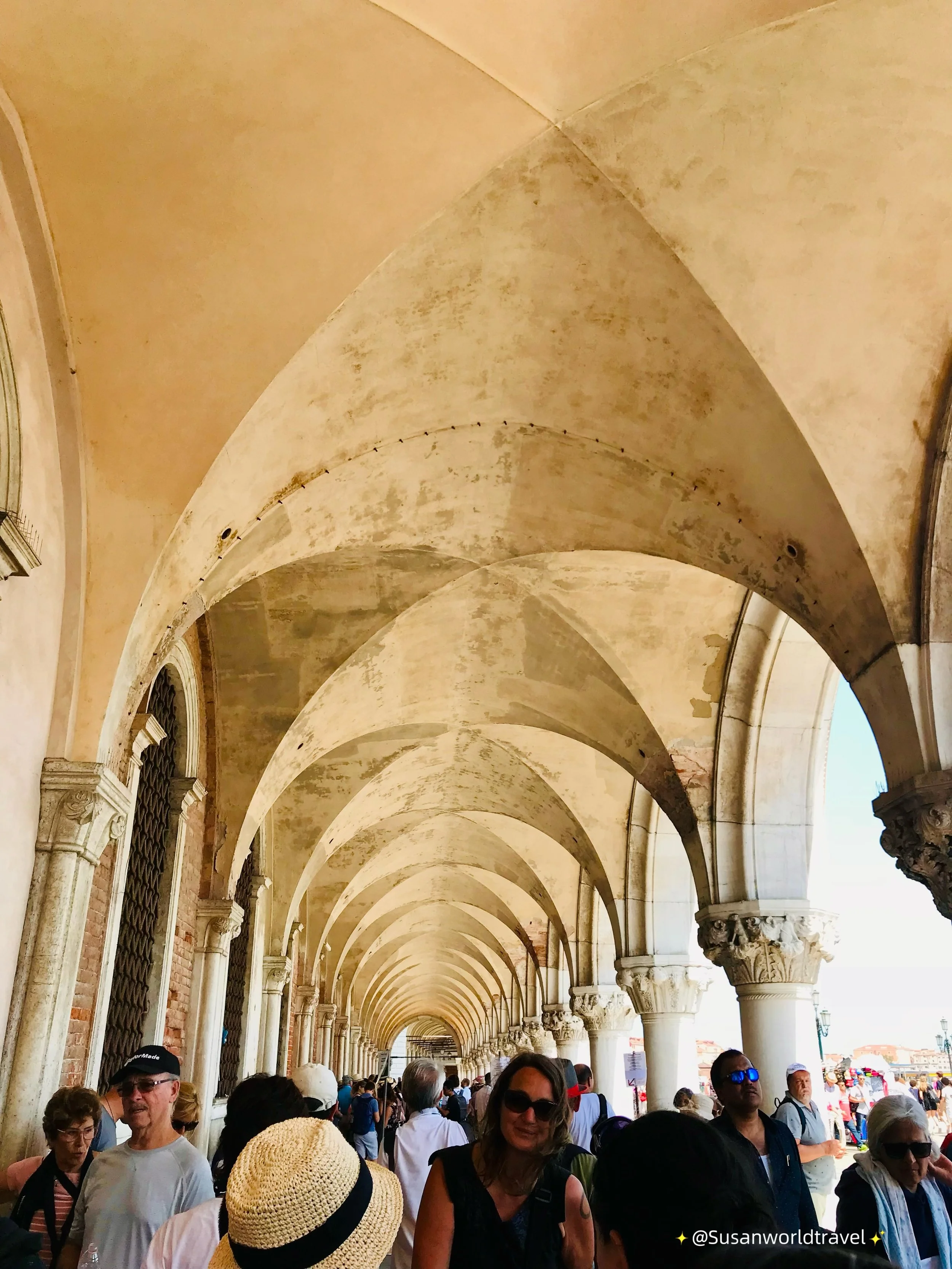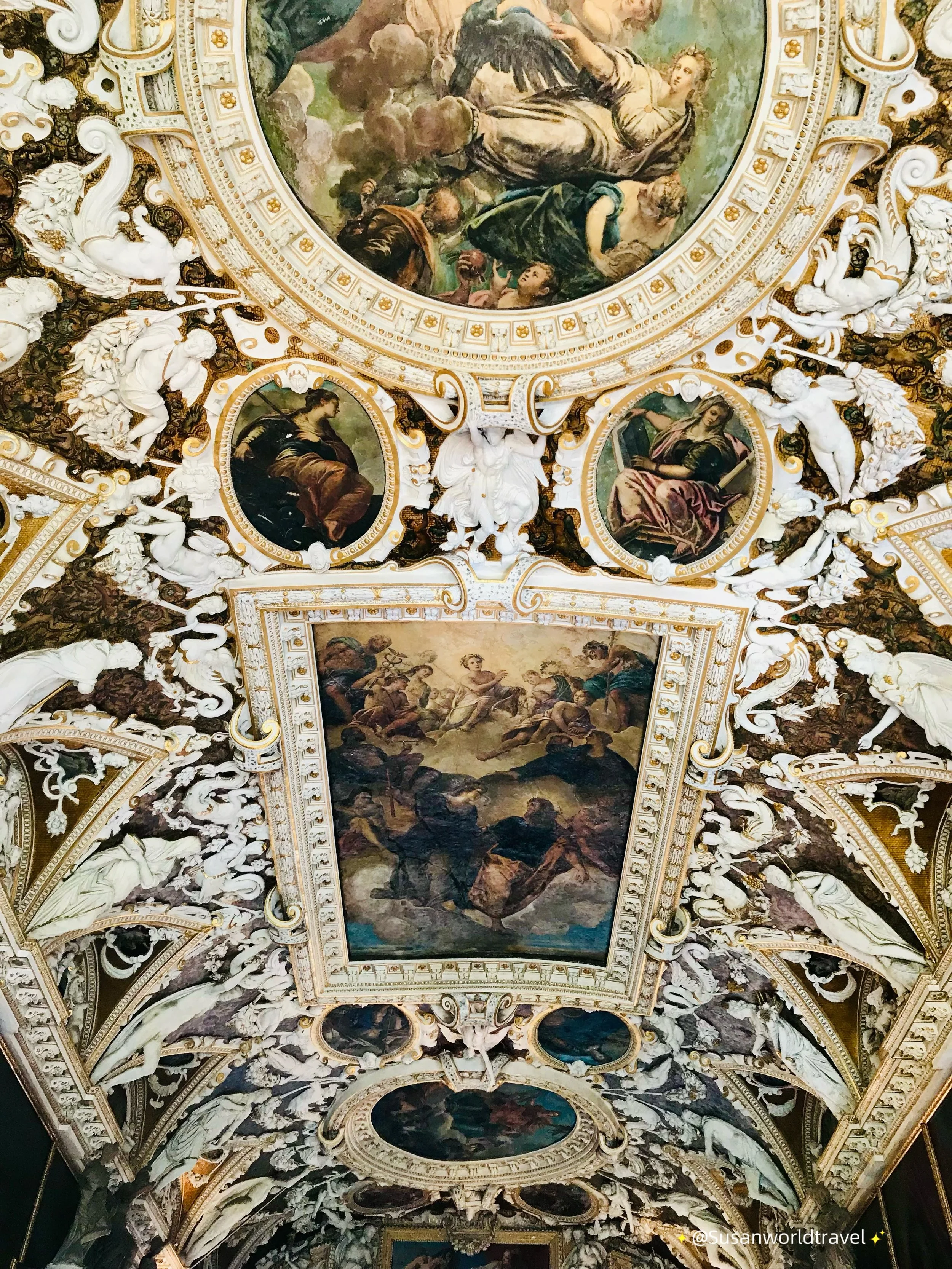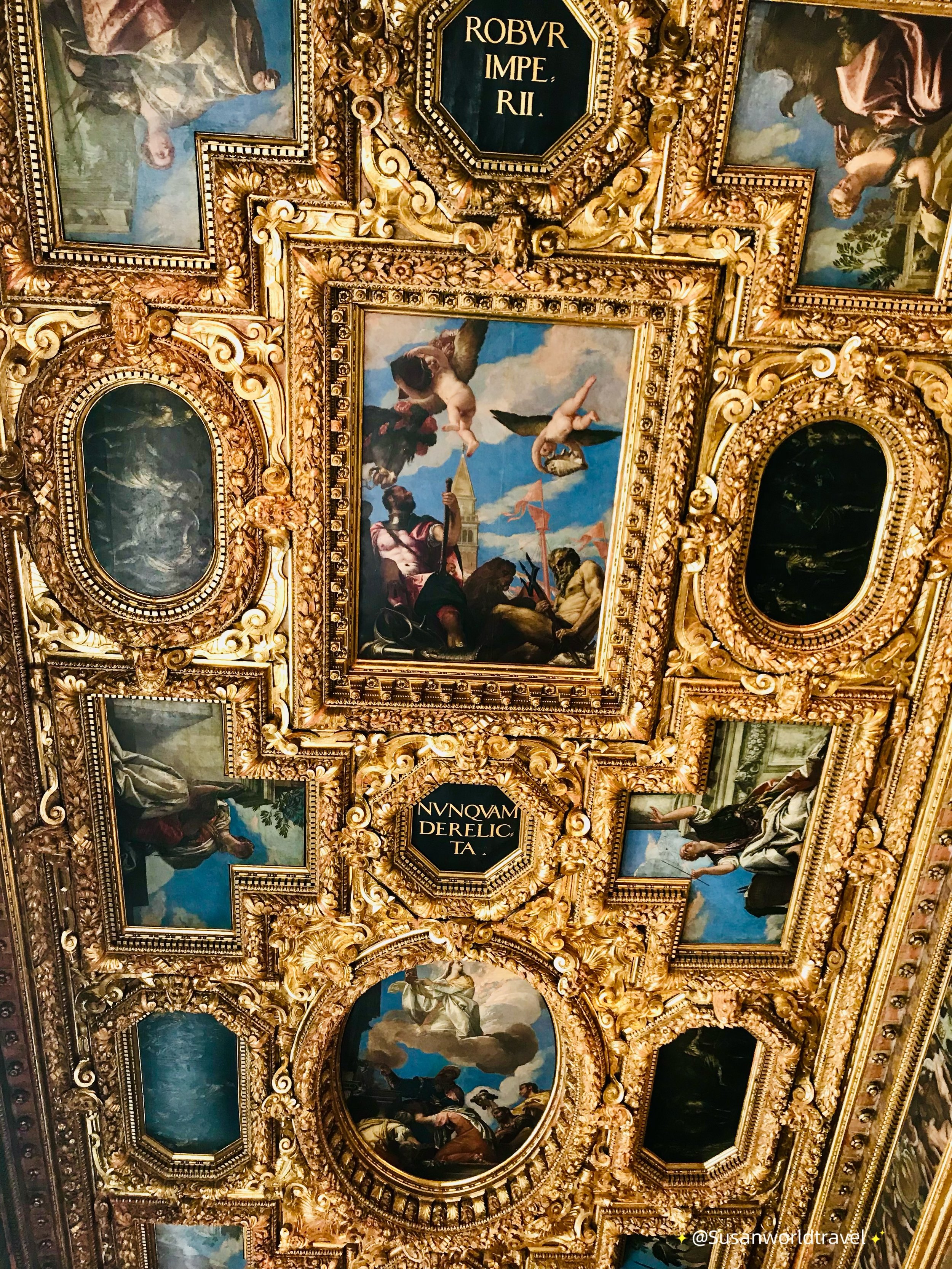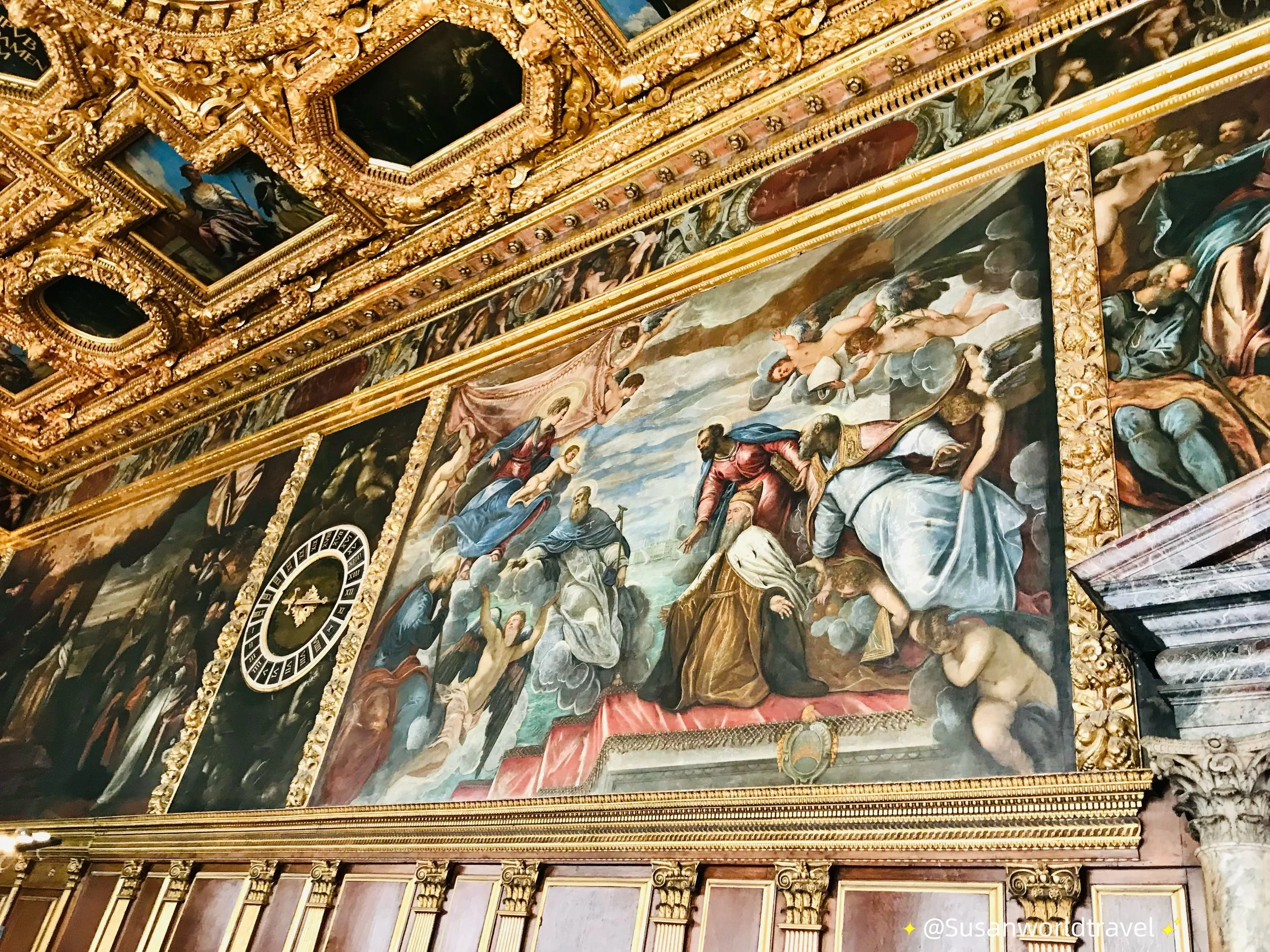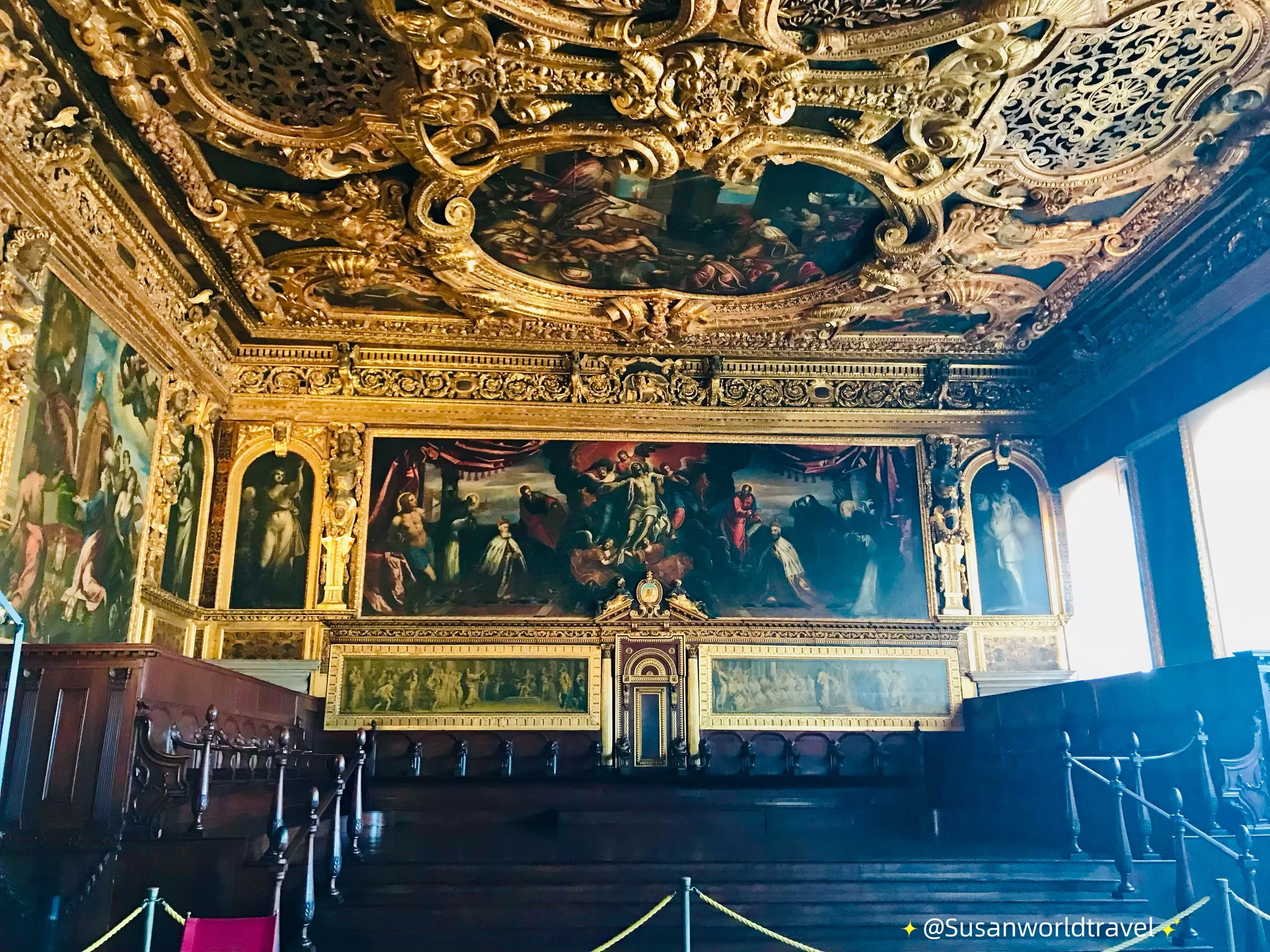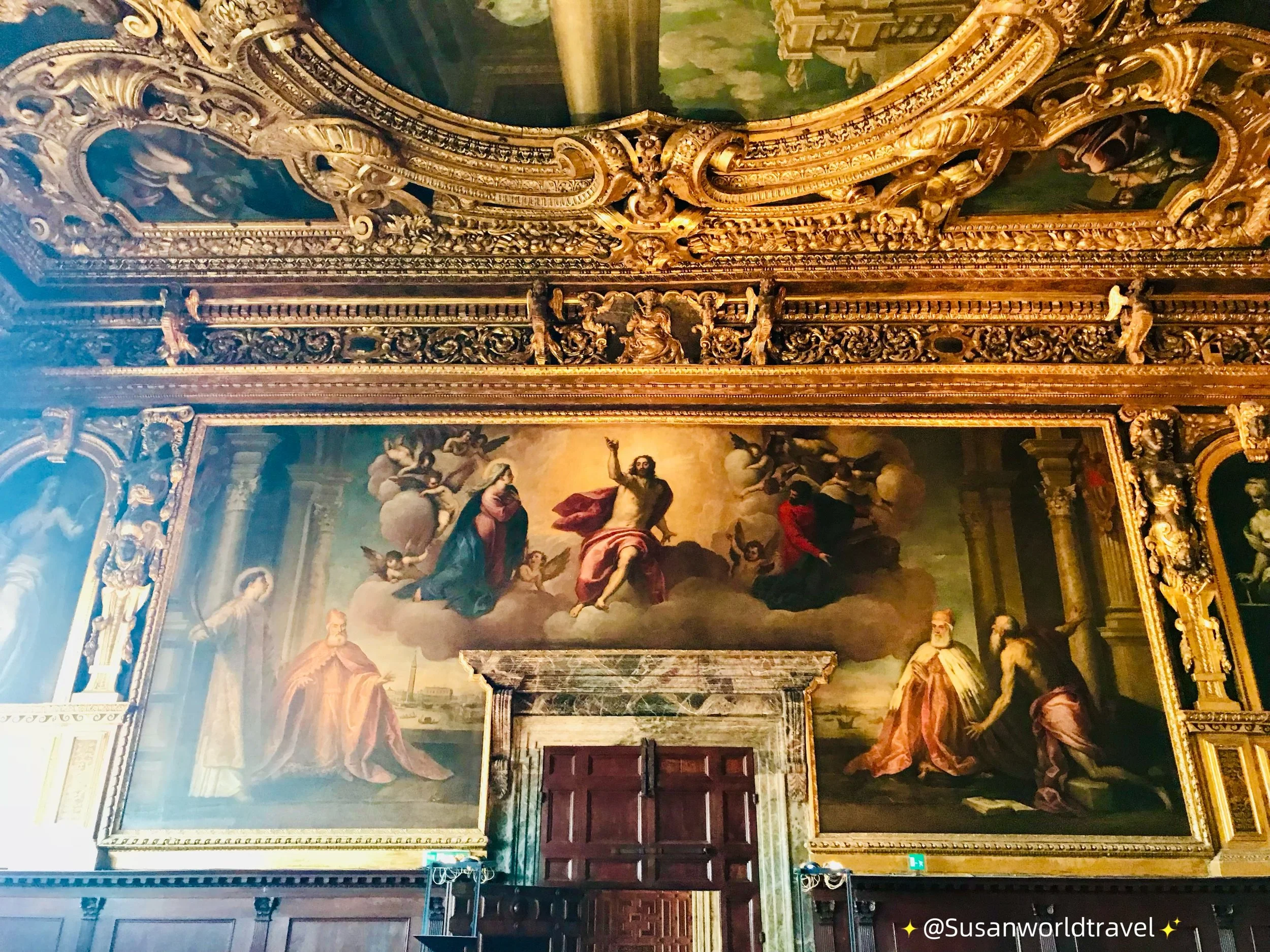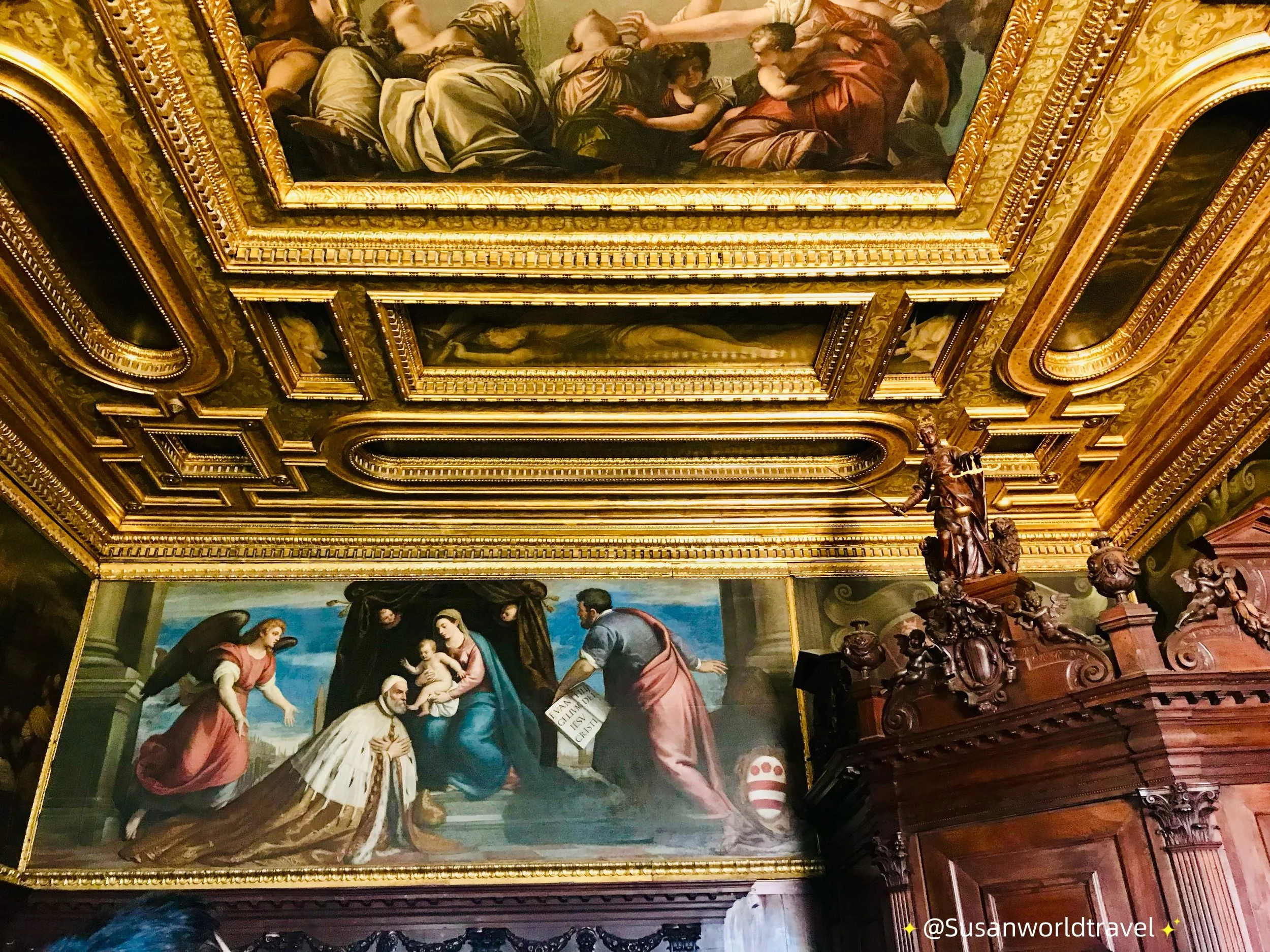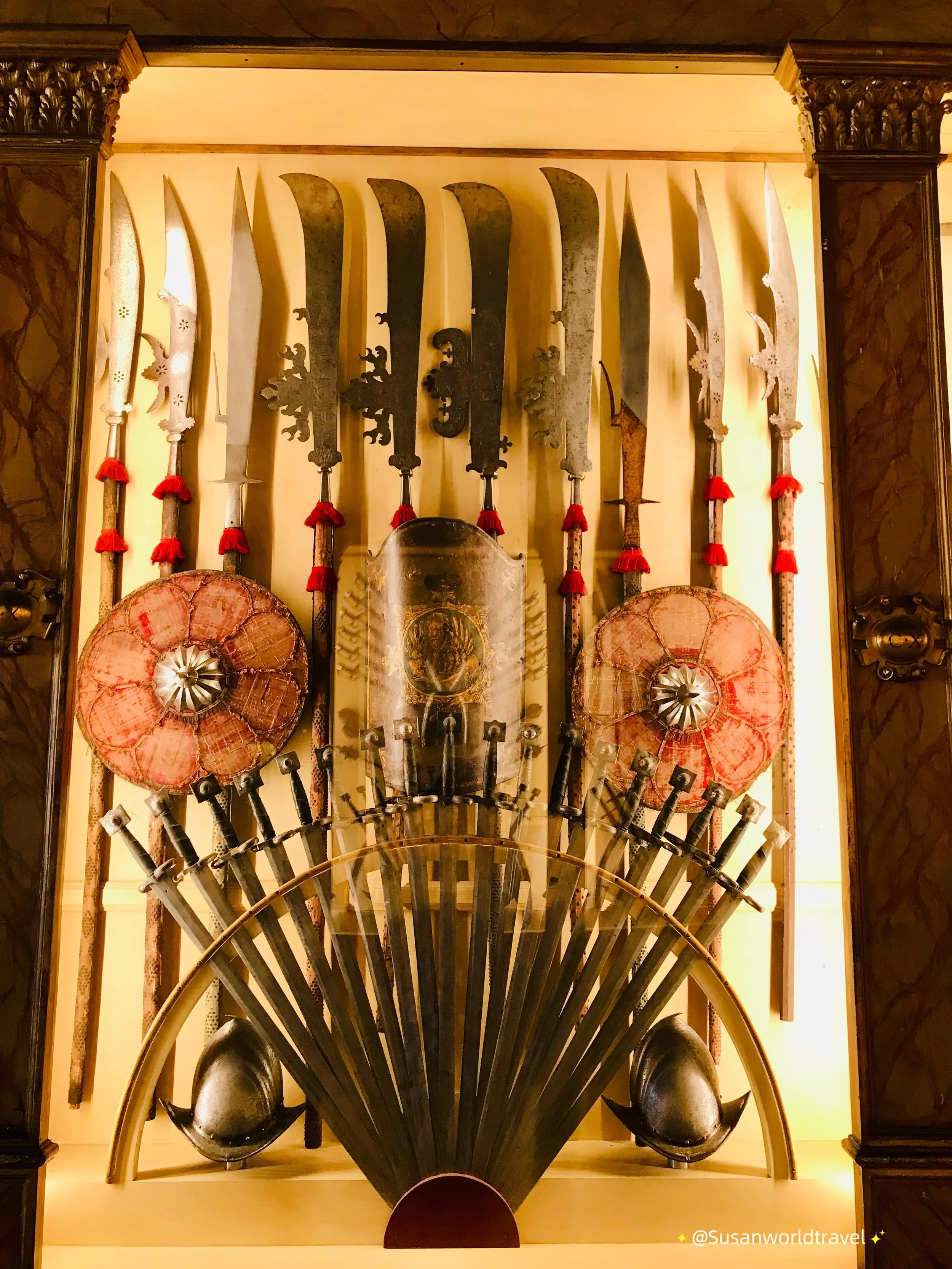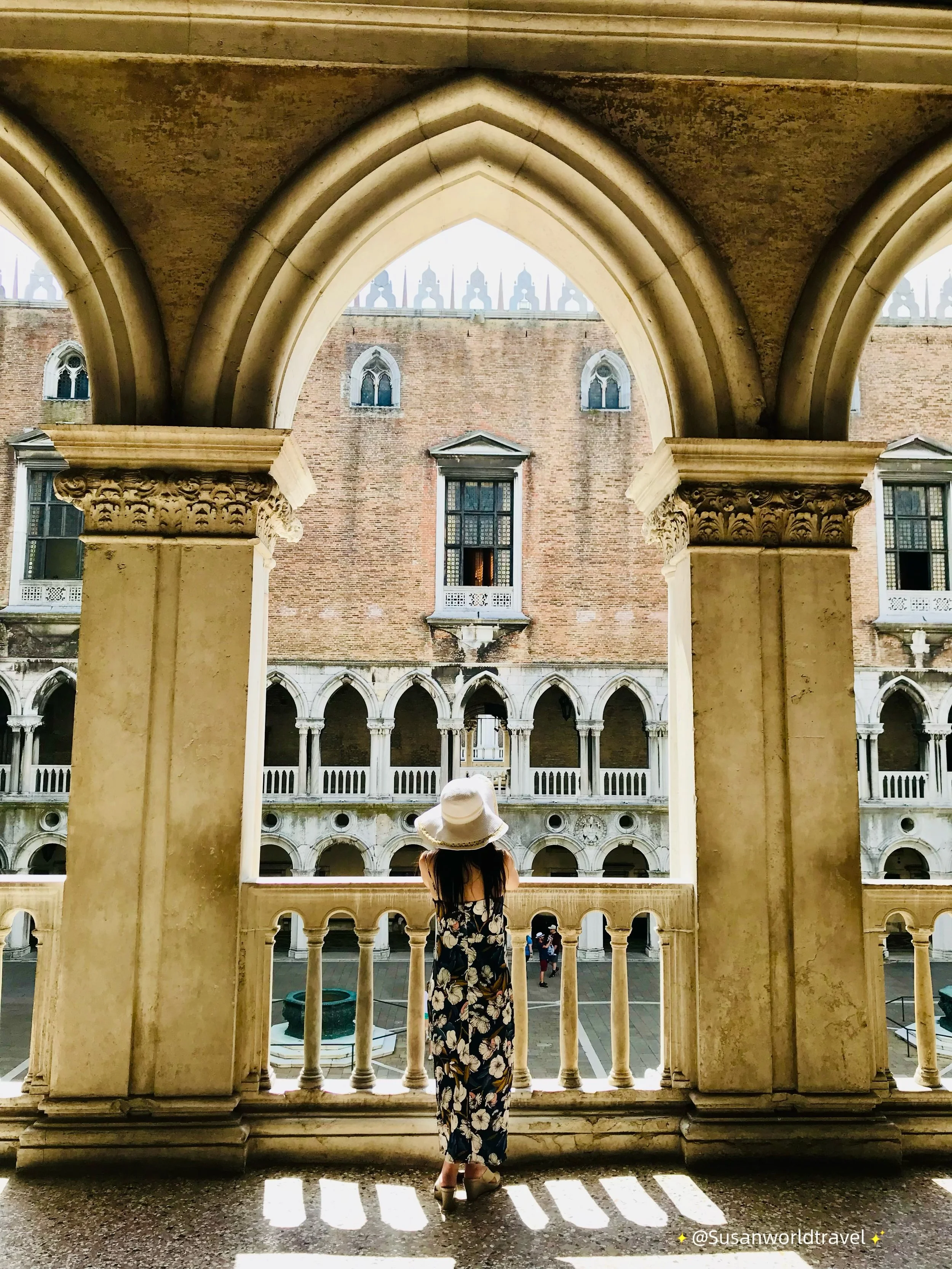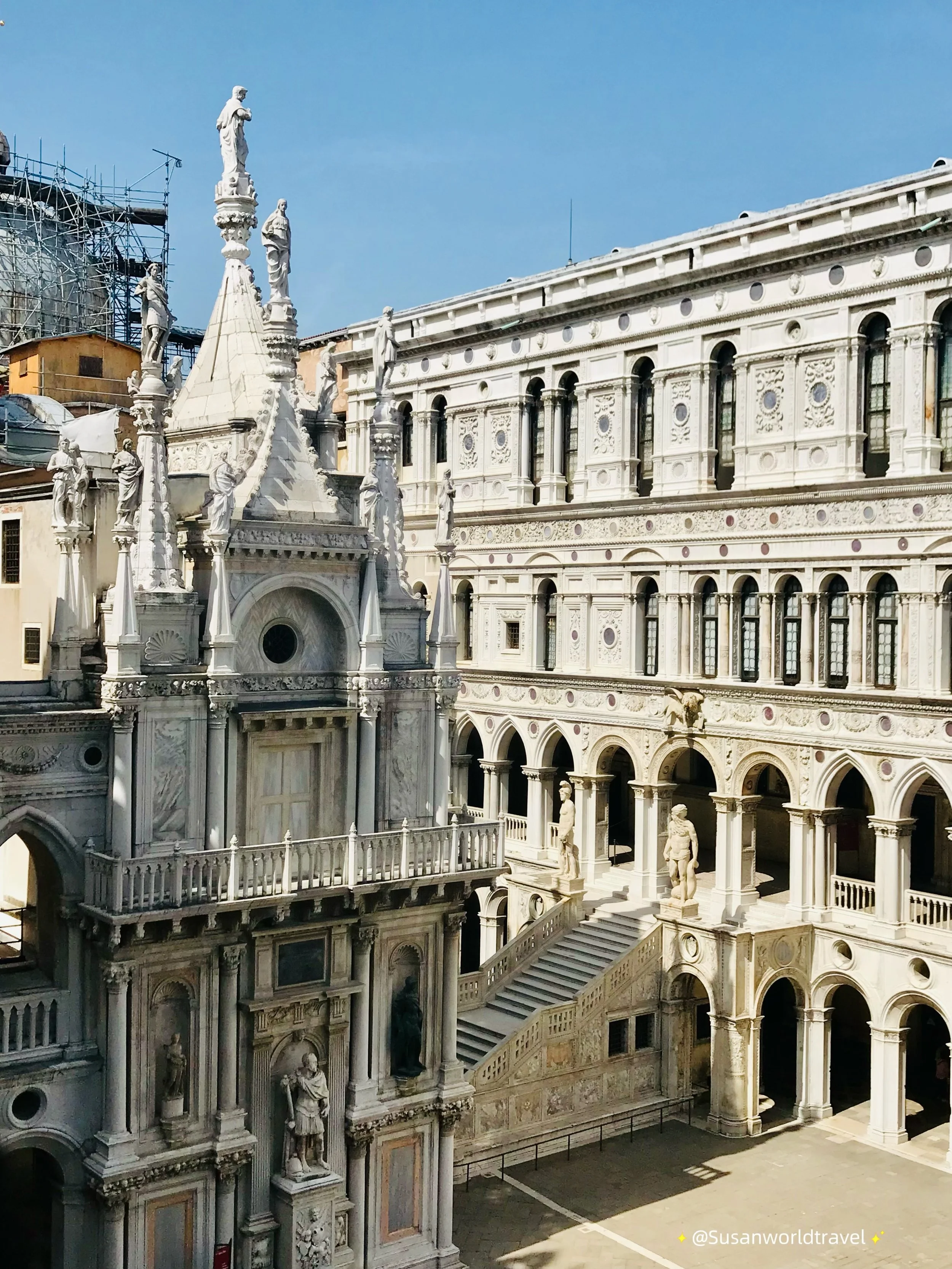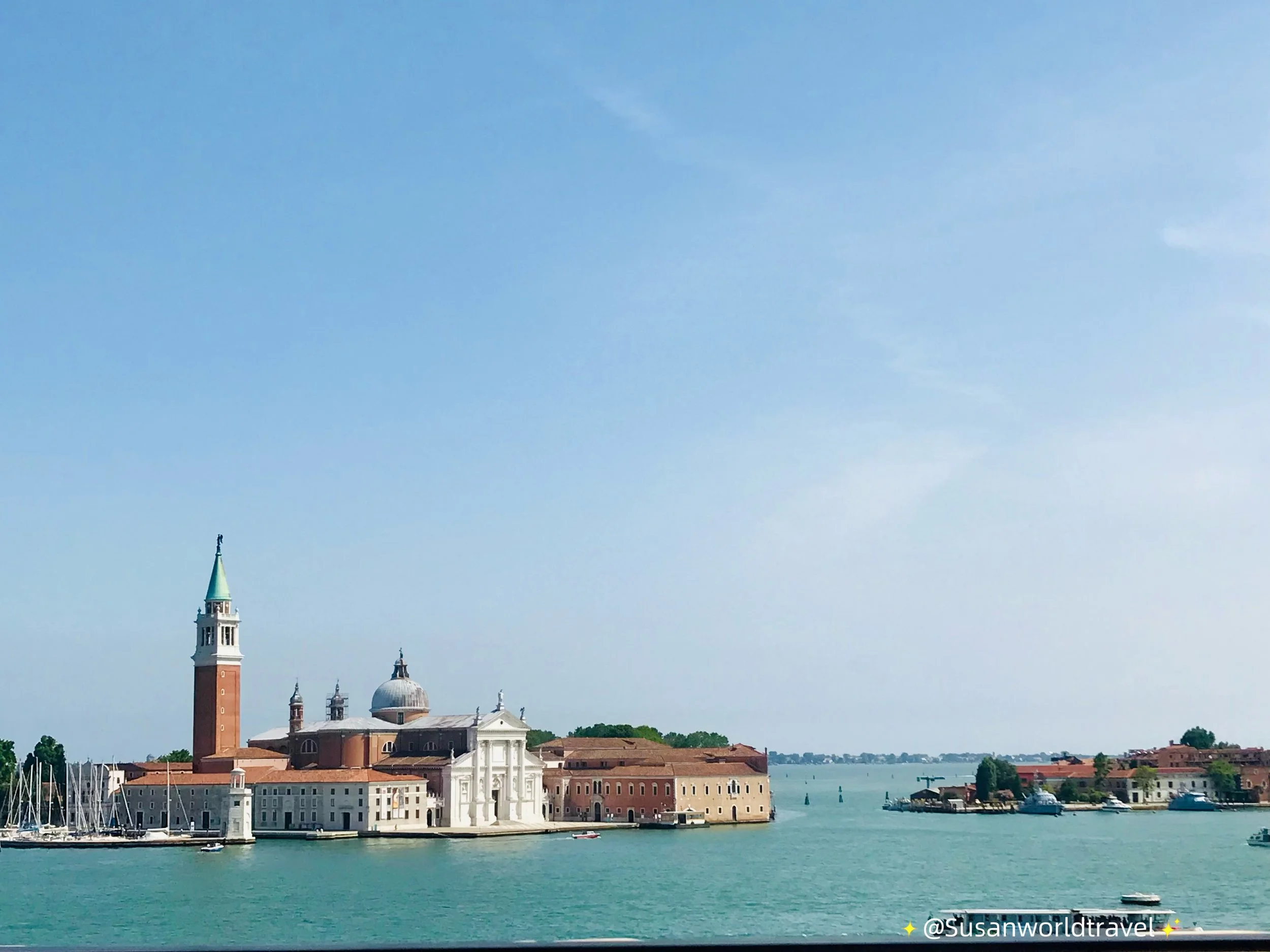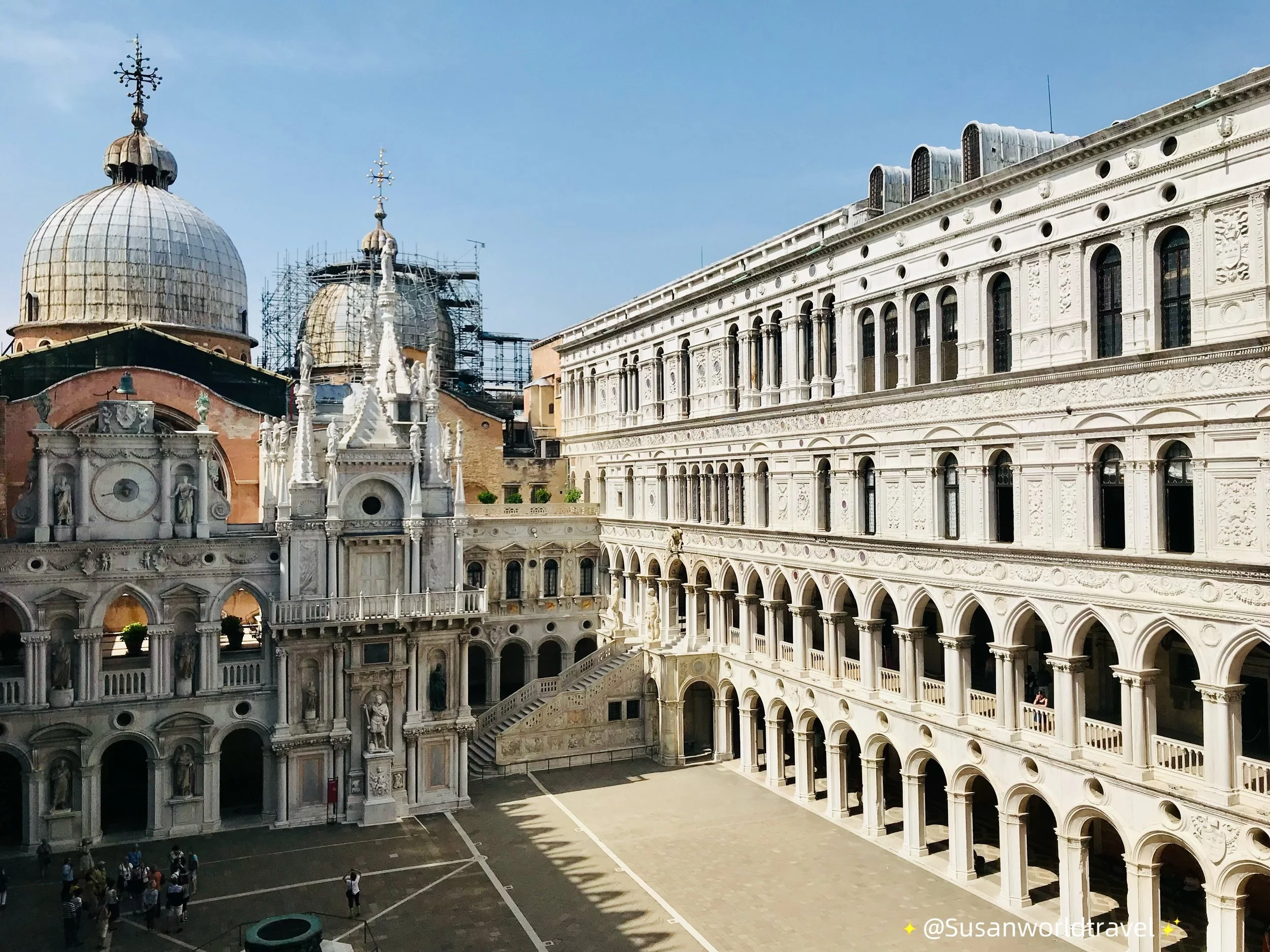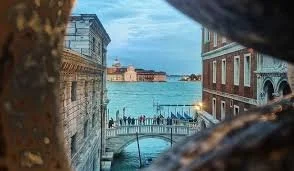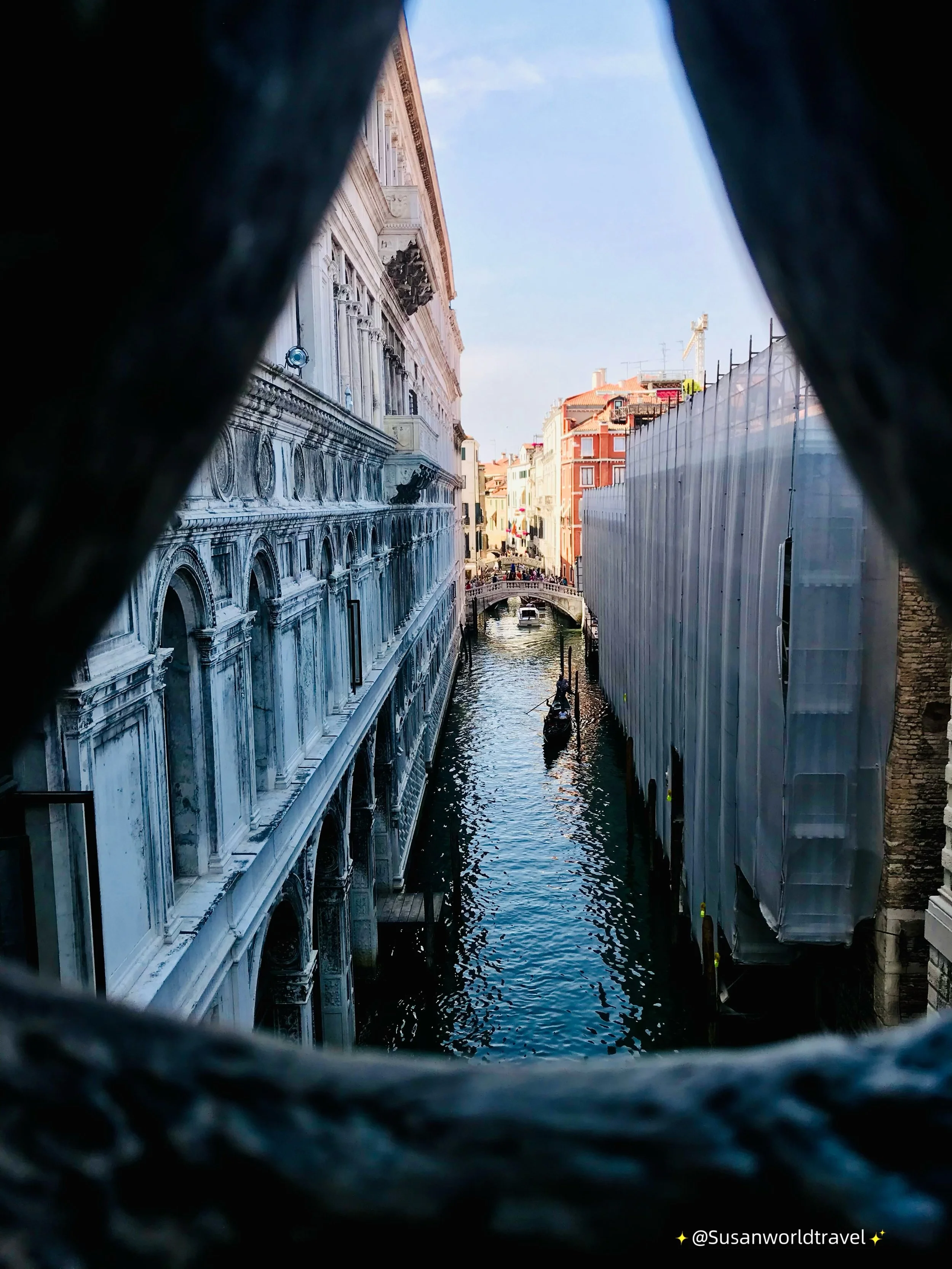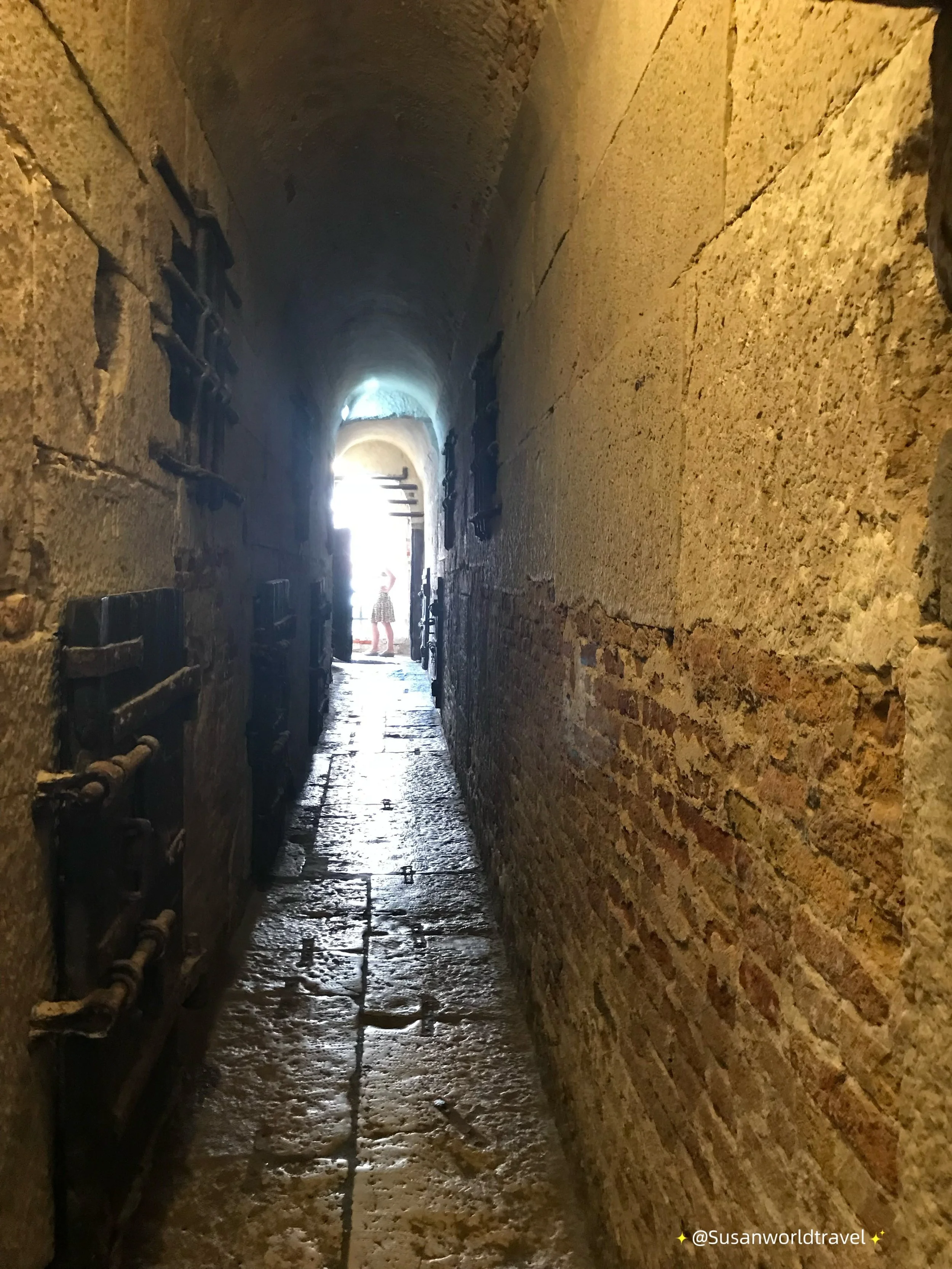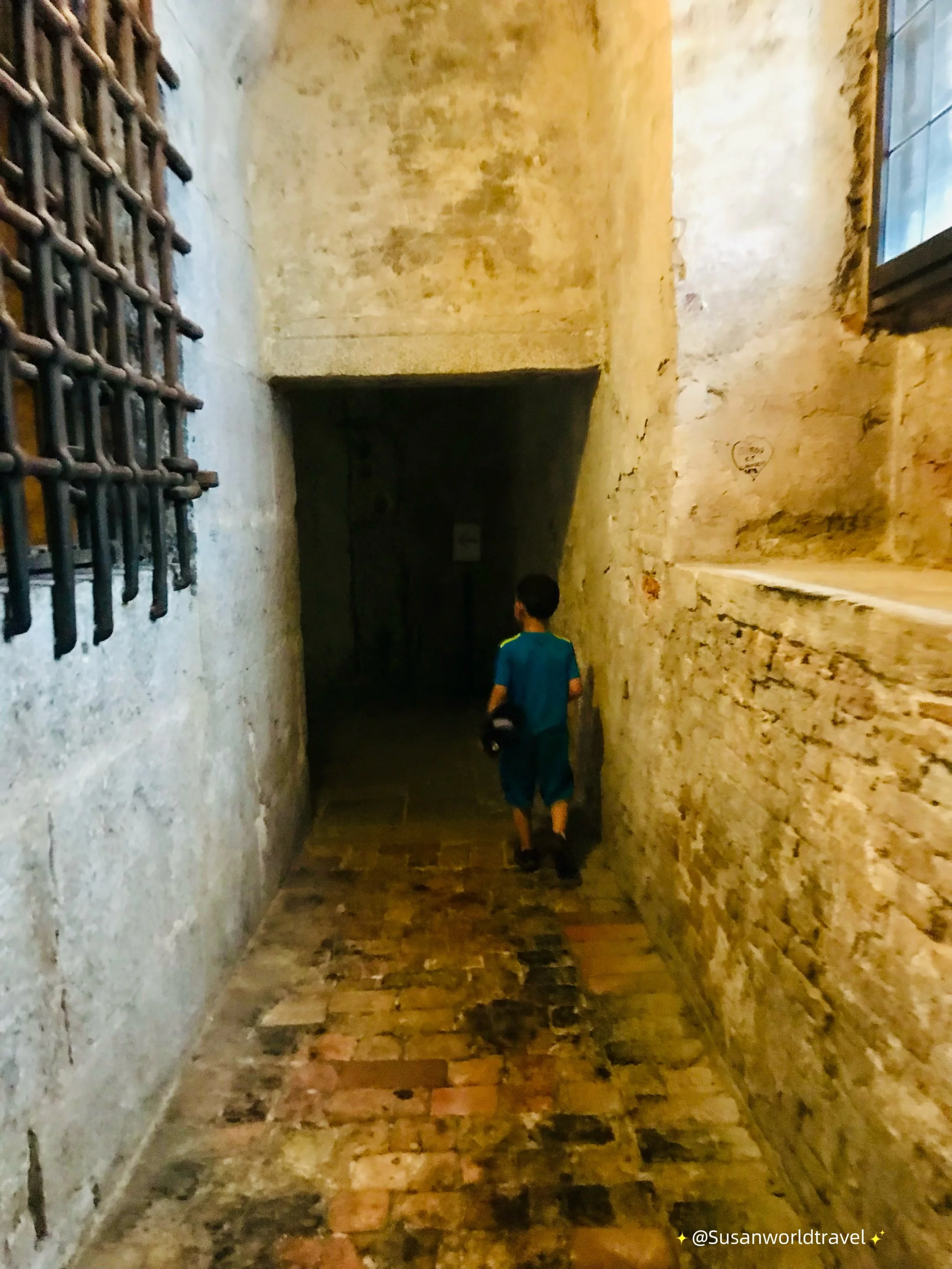Day 1
After our flight landed at Venice Marco Polo Airport in the morning, we took a taxi to Venezia Santa Lucia, the main train station in Venice. We stored our luggage at Stow Your Bags – Luggage Storage, conveniently located just a short walk from the station, and then set off for a full day of exploration. Here is our walking tour map. Then we wandered through the winding alleys, crossed charming little bridges, and soaked in the magical atmosphere of Venice from the very first step.
While we wandered through the winding alleys, we found ourselves enchanted by the charming little shops that seemed to appear around every corner. Venetian mask boutiques, with their colorful, hand-crafted designs, caught our eyes with their mystery and artistry—each one like a tiny window into the city’s carnival soul. We also stumbled upon Leonardo da Vinci-themed stores, filled with fascinating replicas of his inventions and sketches, which added a touch of Renaissance genius to our stroll. These unexpected discoveries made simply walking through Venice feel like a treasure hunt through history and creativity.
Every turn revealed something new—whether it was the shimmer of a quiet canal, the scent of fresh pastries wafting from a café, or the distant hum of a gondolier's song echoing through the stone walls. Venice welcomed us like a dream gently unfolding. We could take photos at nearly every corner in this city—Venice is effortlessly photogenic. From ivy-covered balconies and pastel-hued facades to glimmering canals and gondolas gliding under centuries-old bridges, every scene felt like a postcard waiting to be captured. Even the quiet, tucked-away corners had their own charm, making it impossible to put our cameras down.
We passed by the iconic Ponte di Rialto, the oldest stone arch bridge crossing over the narrowest point of the Grand Canal. It was built in the closing years of the 16th century, renowned as an architectural and engineering achievement of the Renaissance. From there, we wound through narrow alleys to find the spiral elegance of Scala Contarini del Bovolo, a hidden gem tucked away in a quiet courtyard. Continuing on, we passed the famed Teatro La Fenice, Venice’s beloved opera house.
We took a peaceful gondola ride through the winding canals. The gondola is a traditional Venetian boat with roots dating back to the 11th century. Once the main mode of transport in Venice, it became especially popular during the 16th century, when thousands filled the canals. To curb extravagance, a law in 1562 required all gondolas to be painted black—a tradition still followed today. Each gondola is built by hand using over 280 pieces of wood from 8 different types of trees, including oak, fir, walnut, and cherry. Its unique, asymmetrical shape helps it glide smoothly with just one oar.
The view from the gondola was pure magic. Gliding silently through Venice’s narrow canals, we passed beneath stone bridges and alongside centuries-old buildings whose balconies nearly touched the water. Laundry fluttered above us, flowers spilled from window boxes, and the gentle ripples reflected the soft colors of the facades. Every turn revealed a postcard-perfect scene—quiet courtyards, hidden archways, and sudden, breathtaking glimpses of open lagoon. From the water, Venice felt timeless, romantic, and utterly alive.
We eventually arrived at the magnificent Piazza San Marco. At its center stands the magnificent St. Mark’s Basilica, known for its golden mosaics and five domes, alongside the elegant Doge’s Palace, once home to the rulers of the Venetian Republic. Towering above the square is St. Mark’s Campanile, offering breathtaking views of the city. Lining the square are the Procuratie buildings, which once housed officials and now contain cafés, shops, and the Museo Correr, a museum showcasing Venice’s rich history and art. Every corner of the square tells a story of Venice’s grandeur.
St. Mark’s Basilica is Venice’s most famous church, known for its stunning Byzantine architecture and glittering gold mosaics. Built in the 9th century to house the relics of Saint Mark, it became a symbol of Venice’s power and wealth. With its five domes, ornate façade, and treasures like the Pala d’Oro (Golden Altarpiece), the basilica is often called the “Church of Gold”. You need to prebook the ticket.
After visiting St. Mark’s Basilica, we continued our journey into Venice’s rich past with a tour of the Doge’s Palace, a striking example of Venetian Gothic architecture. Once the residence of the Doge, Venice’s highest authority, and the seat of government, the palace offered a fascinating look into the political and judicial heart of the former Republic. We wandered through its grand chambers, including the Great Council Hall, which is adorned with massive paintings by Tintoretto and Veronese, and admired the golden staircases and detailed ceilings that spoke of centuries of power and prestige.
One of the most memorable moments was crossing the Bridge of Sighs, which led us into the palace’s historic prison. The contrast between the opulence of the state rooms and the dark, narrow cells offered a powerful reflection on justice and fate in Venice’s history.
We wrapped up our unforgettable tour of Venice with one last stroll through its enchanting streets, then made our way back to Santa Lucia Train Station. From there, we boarded a train to Florence, ready to trade canals for Renaissance masterpieces and continue our Italian adventure in the heart of Tuscany. In Florence, we booked a hotel in Duomo, the center of the city.
